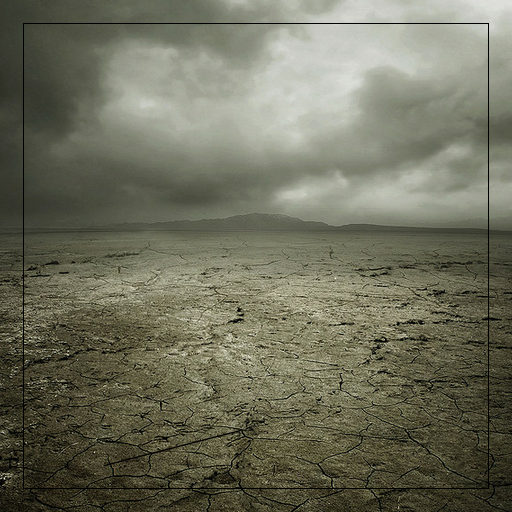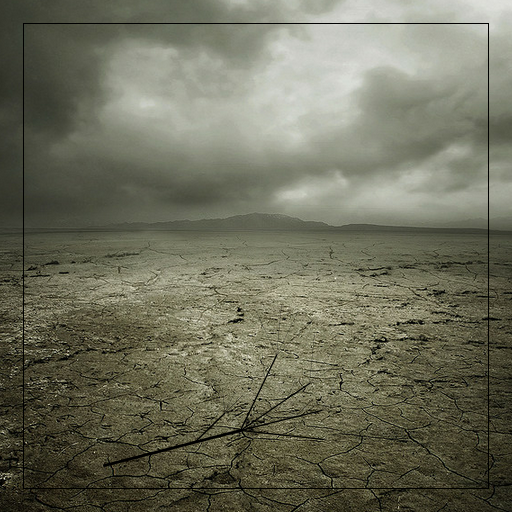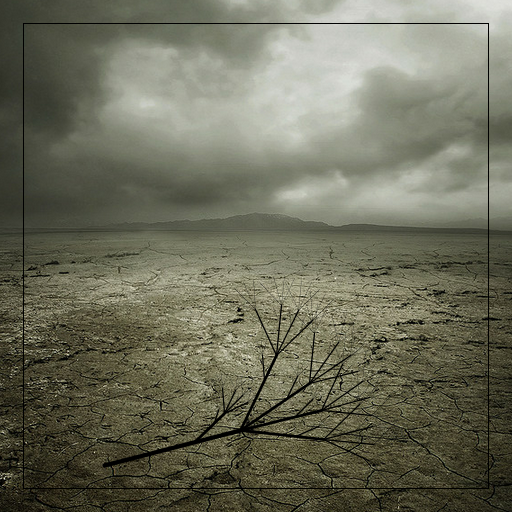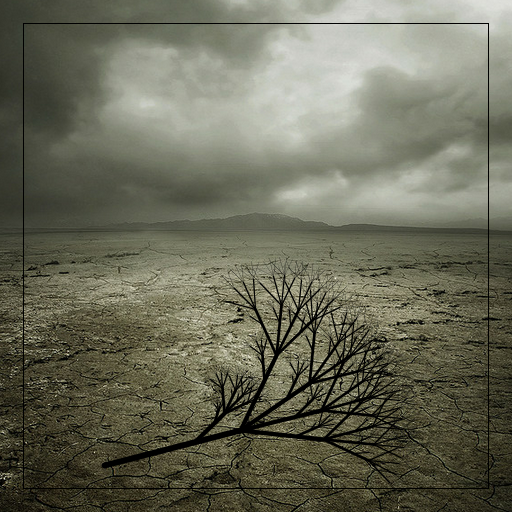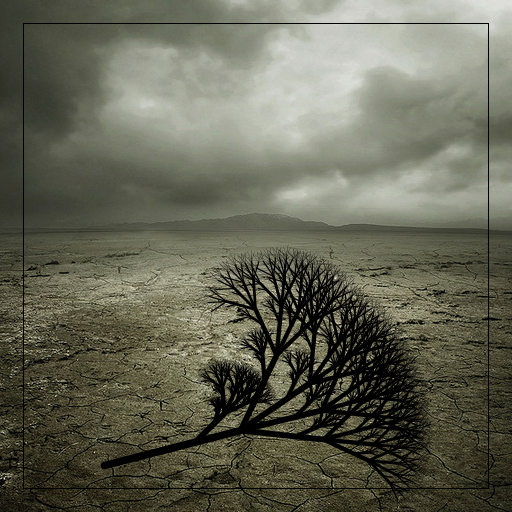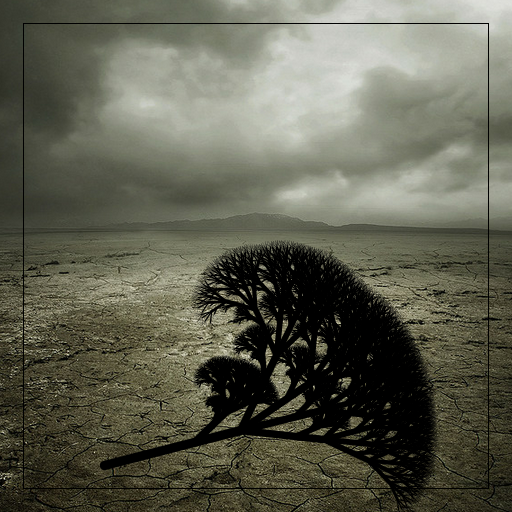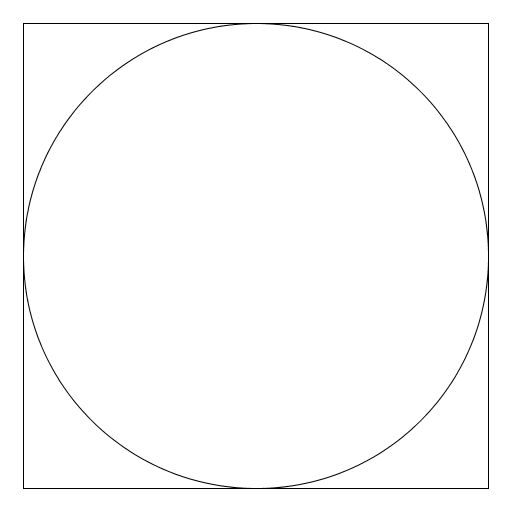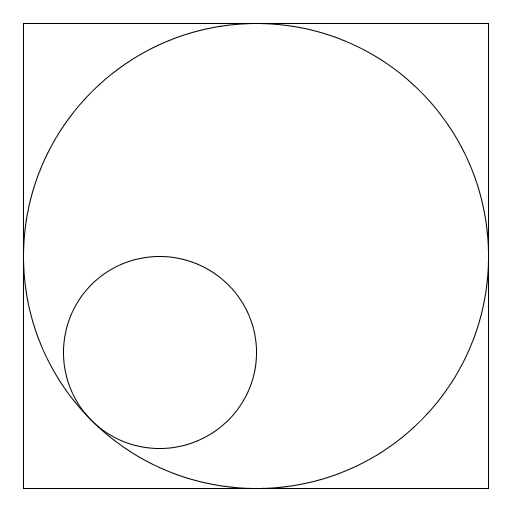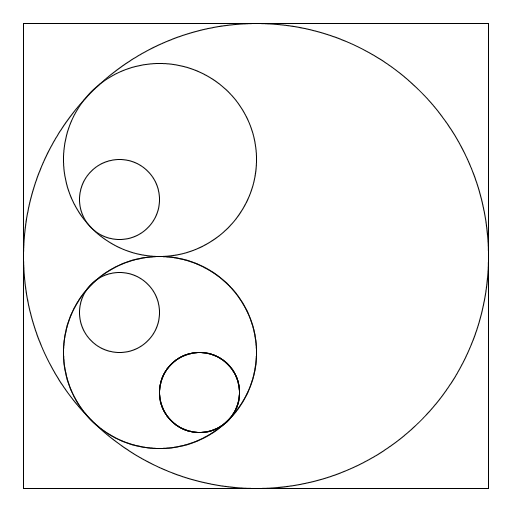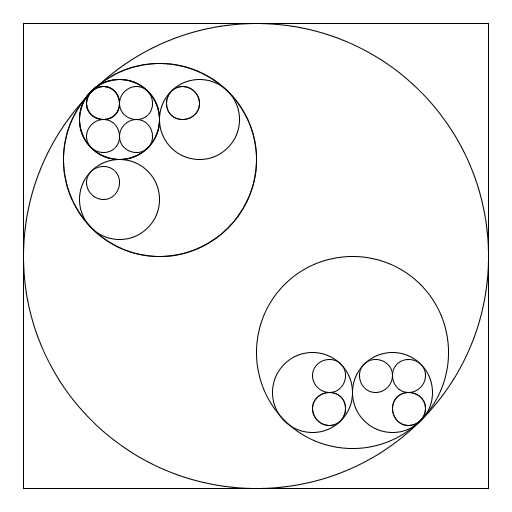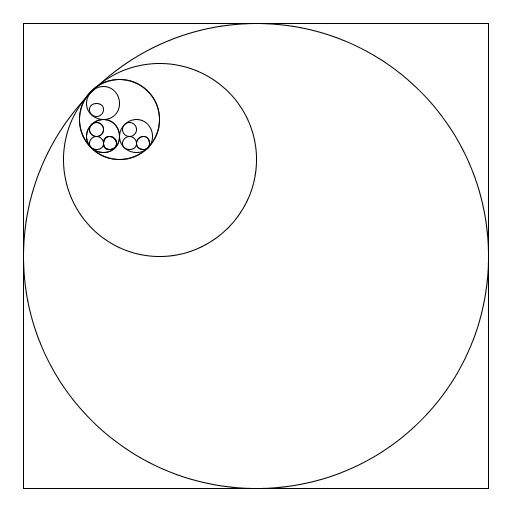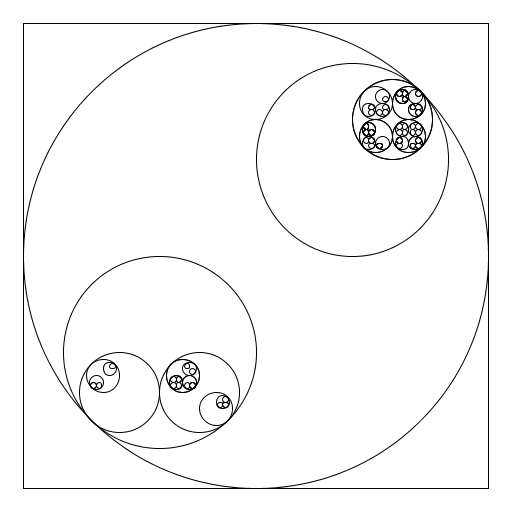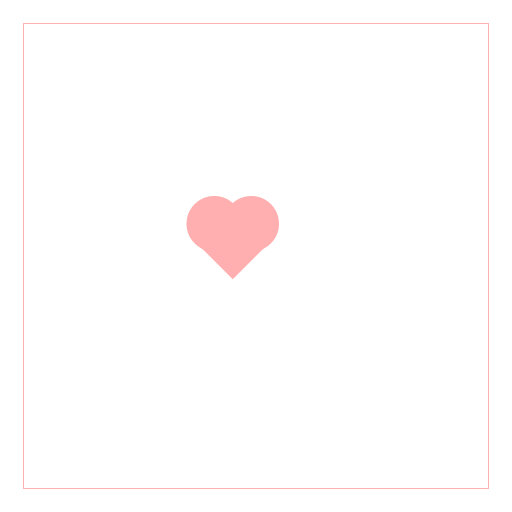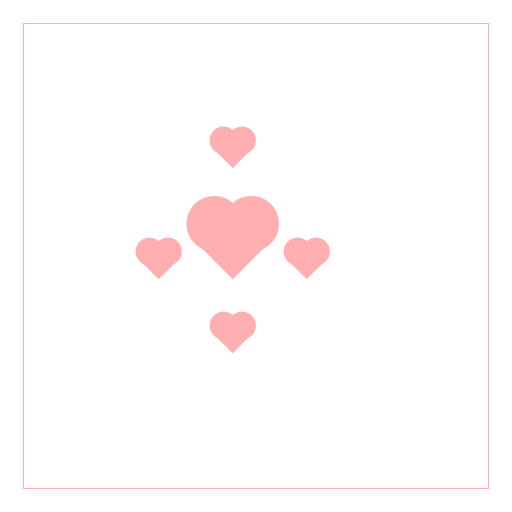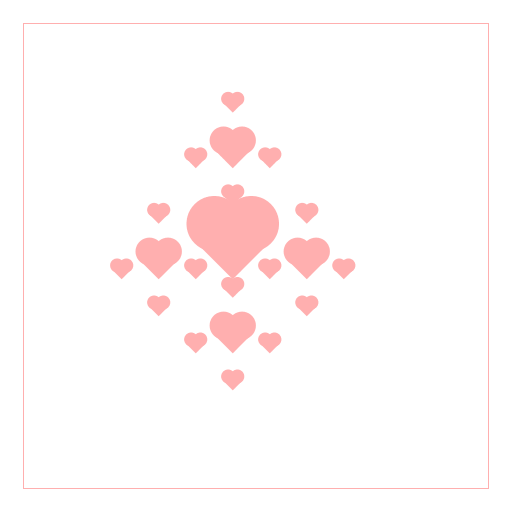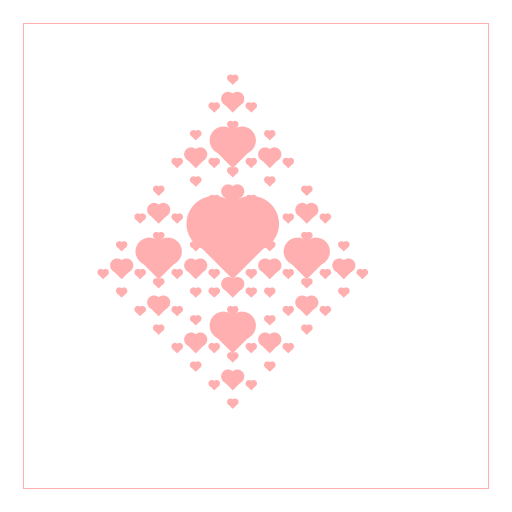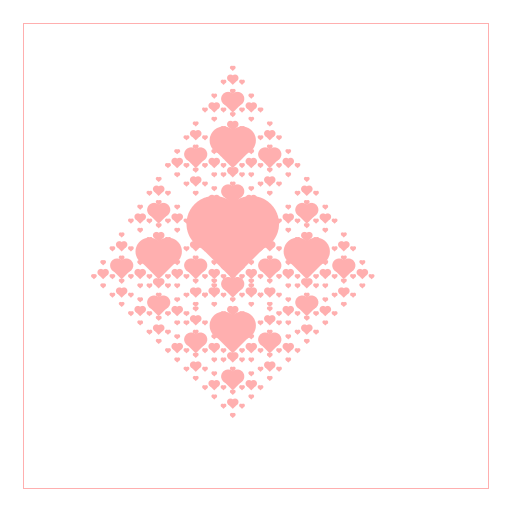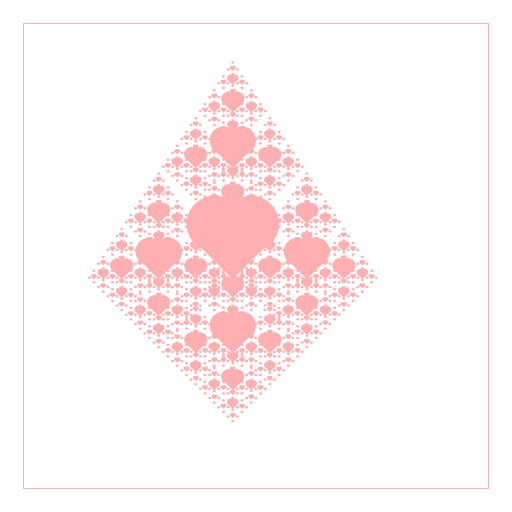Spring 2013
Aaron Michaels
This recursive tree was actually inspired by my initial attempt for
this project, which was to create a Koch Snowflake.
|
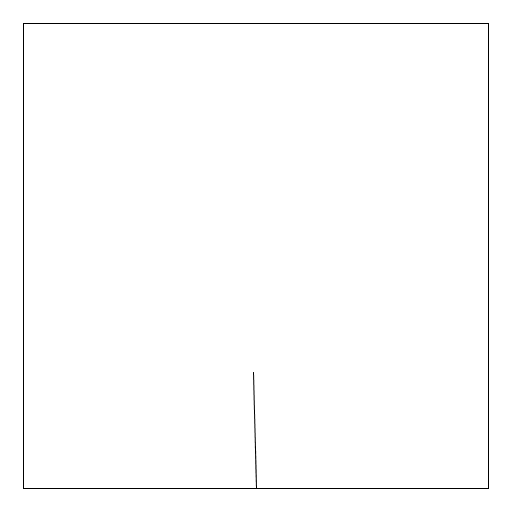
| 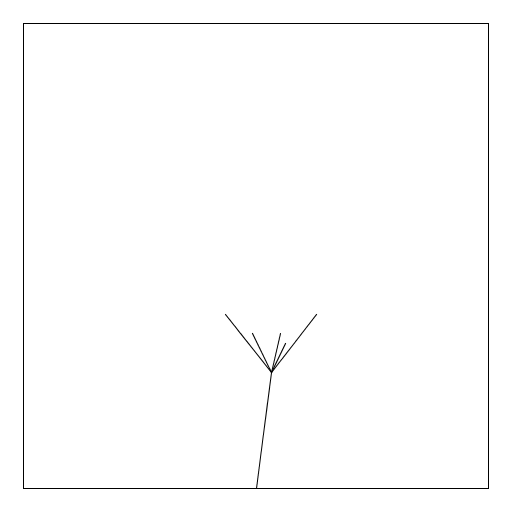
| 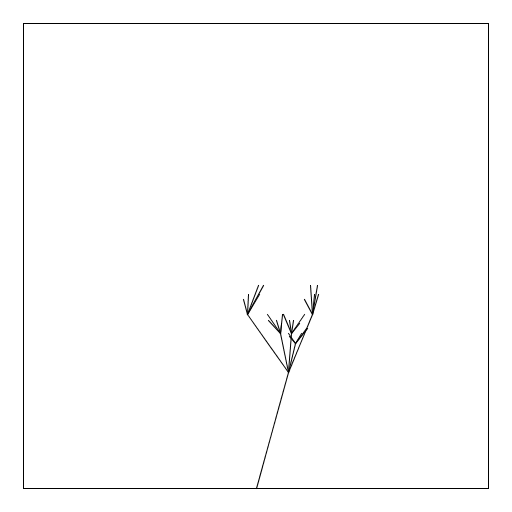
| 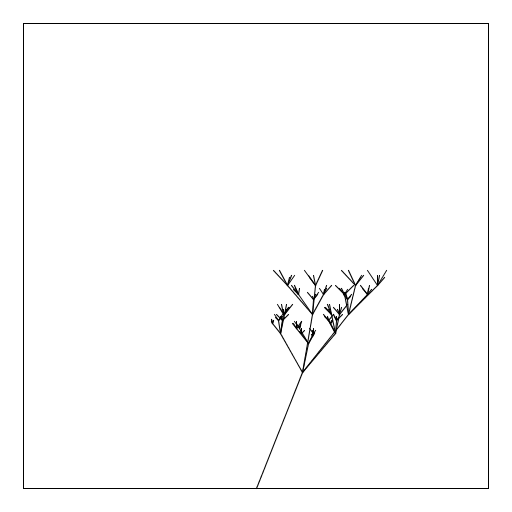
| 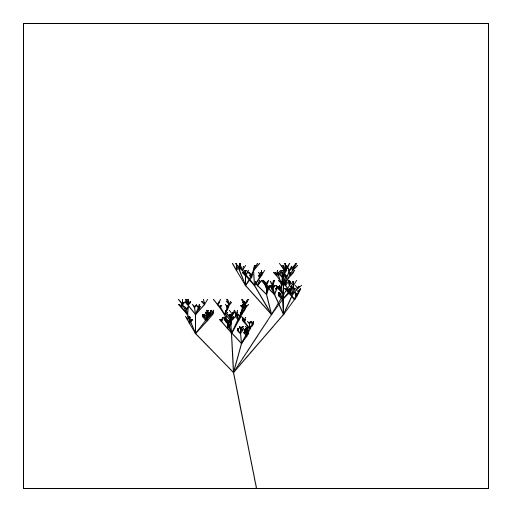
| 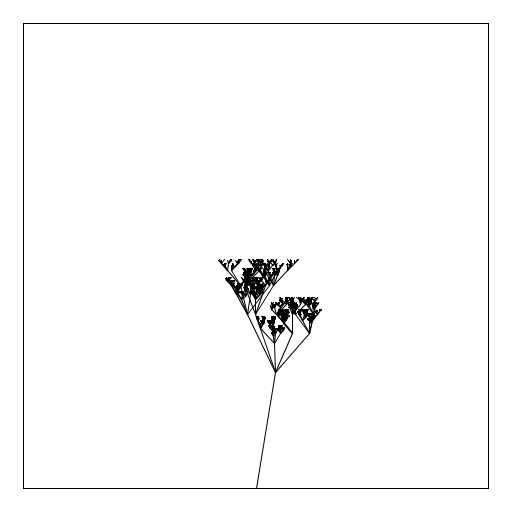
|
Christopher Akatsuka
I created a file that makes an N- order rendition of a person with
two circular eyes, hair, and two raised arms to show what would
happen if overpopulation continues to run rampant. If you continually
increase N, eventually the entire screen is blotted out... I used the
booksite to look up basic shape drawing codes.
|
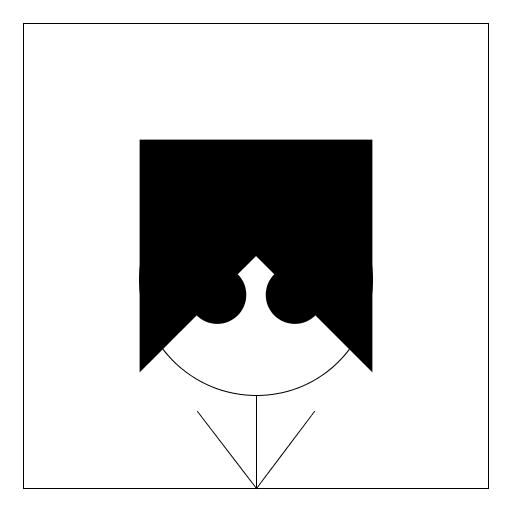
| 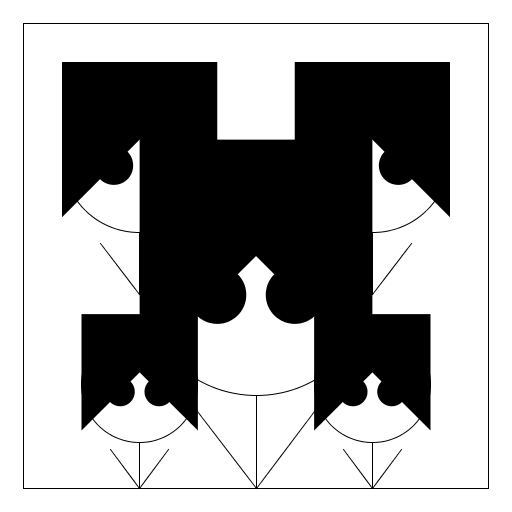
| 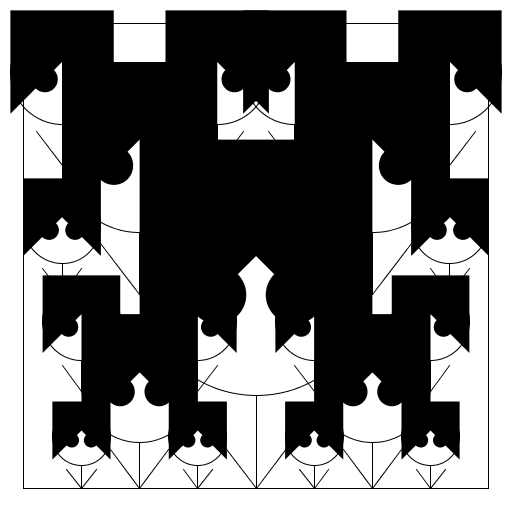
| 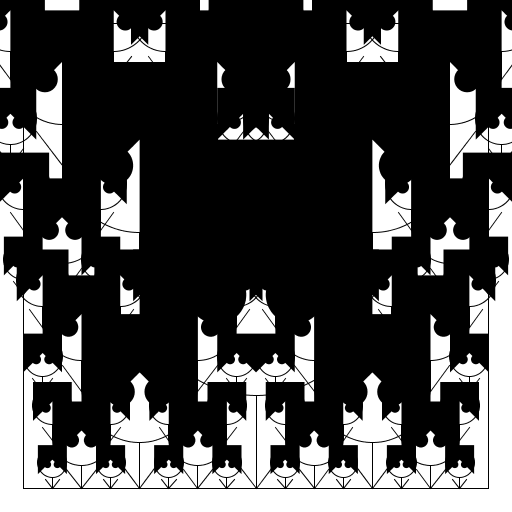
| 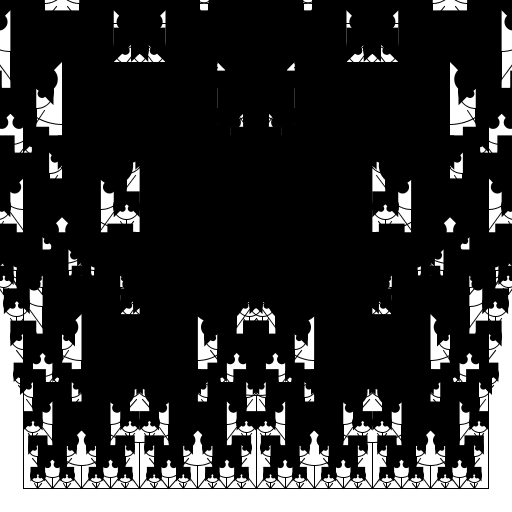
| 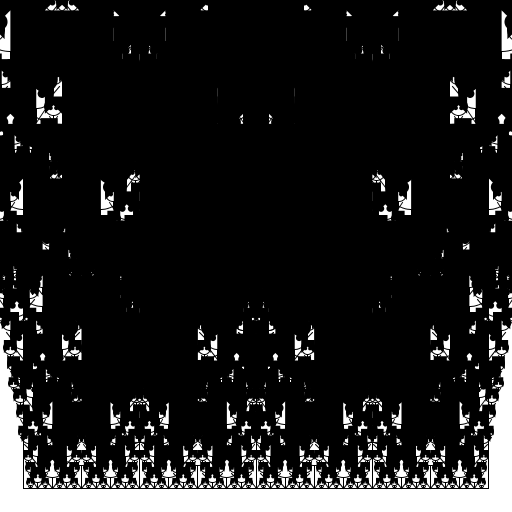
|
Amand Shukla
My creation is of Bill Waterson's comic strip characters Calvin and Hobbes
gazing at the night sky full of stars. I relate to this scenario as well as
Calvin and Hobbes because as a child I loved looking at the
sky at night.
|
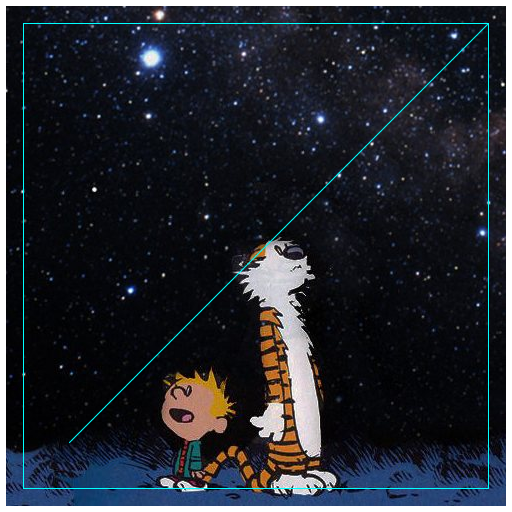
| 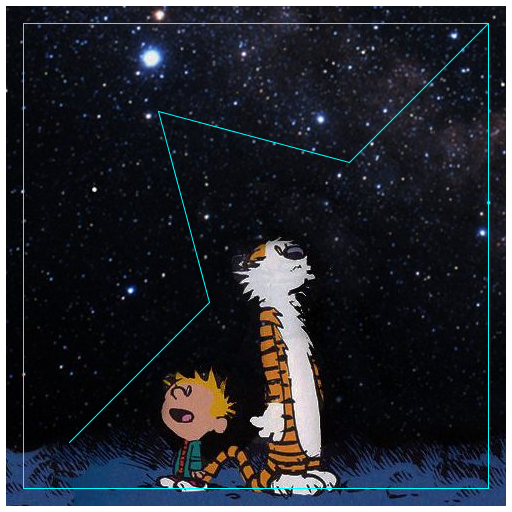
| 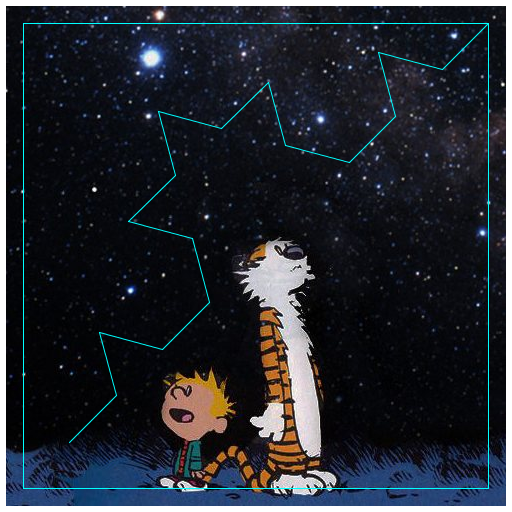
| 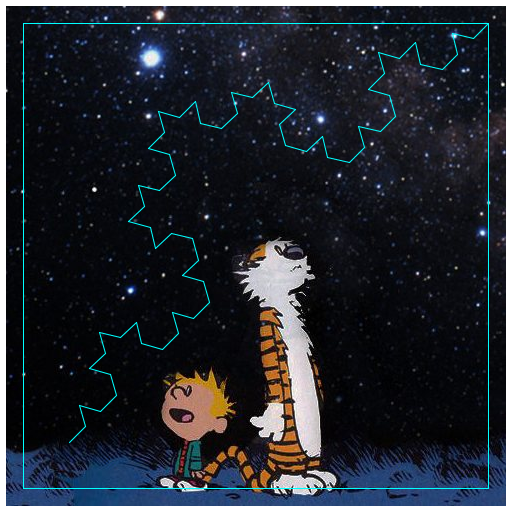
| 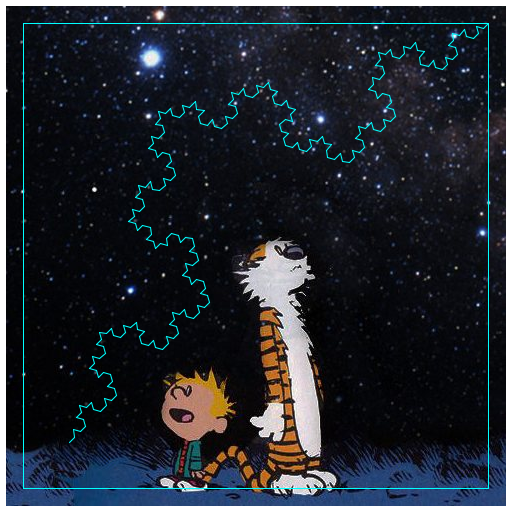
| 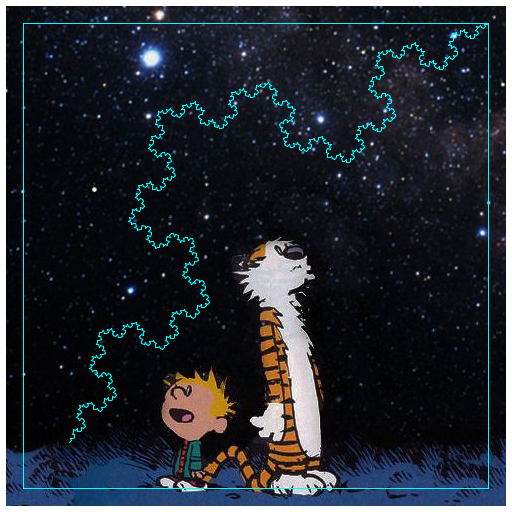
|
Brad Lowenstein
I used the book-site api to customize pen color and radius.
The creation is a tree that grows from the mist of a dark forest.
I used StdDraw.line() and recursion to create the tree branches.
|
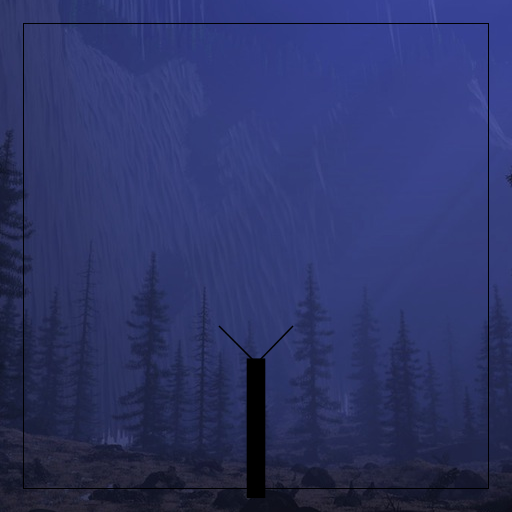
| 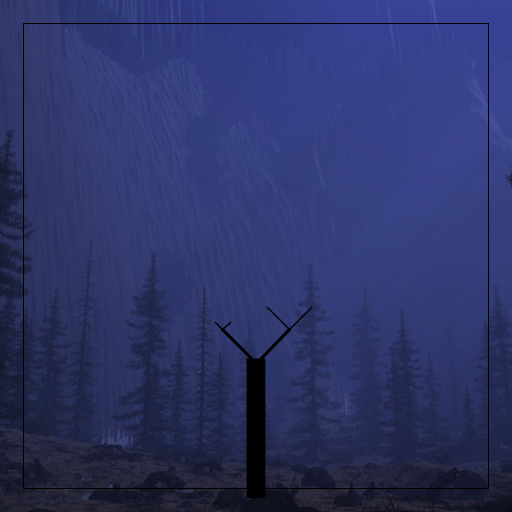
| 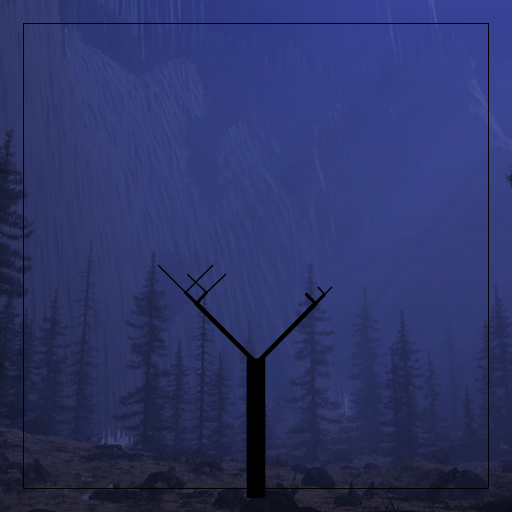
| 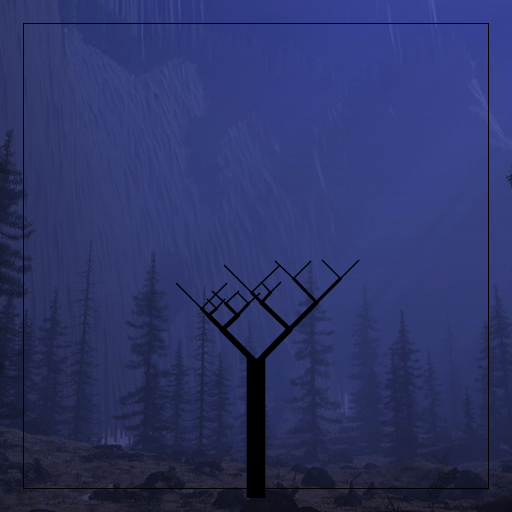
| 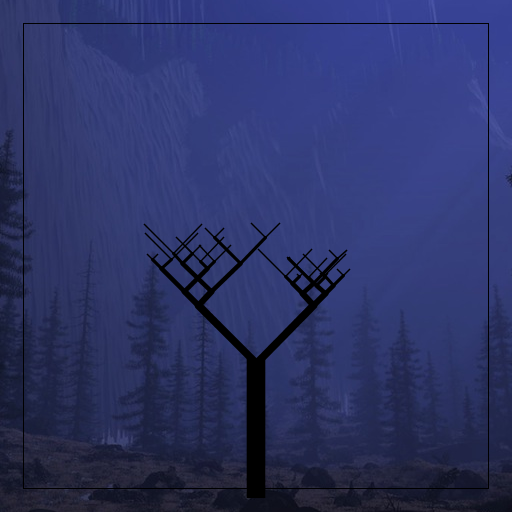
| 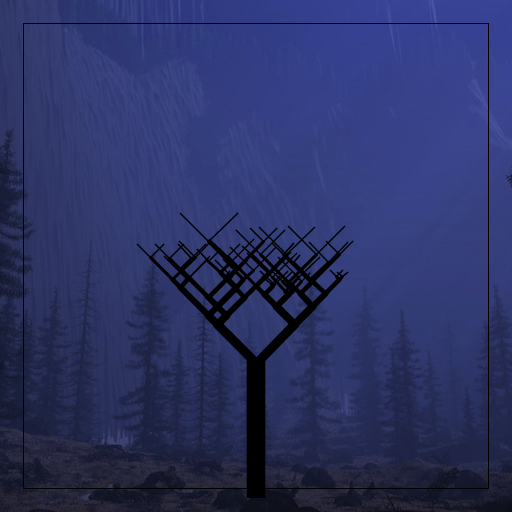
|
Connie Li
For my artistic creation, I illustrated a girl's growing love for
a boy after being hit by cupid's arrow. To create the
heart, I referenced the booksite's program, Heart.java and modified it
so that the color and size would match the hearts in the original image
and so my hearts would be placed at a reasonable location within my
image. Within my recursion function, I computed random x and y
coordinates within a certain range for the hearts so that the
distribution of hearts would look more natural and cover a larger area
at higher orders of N.
|
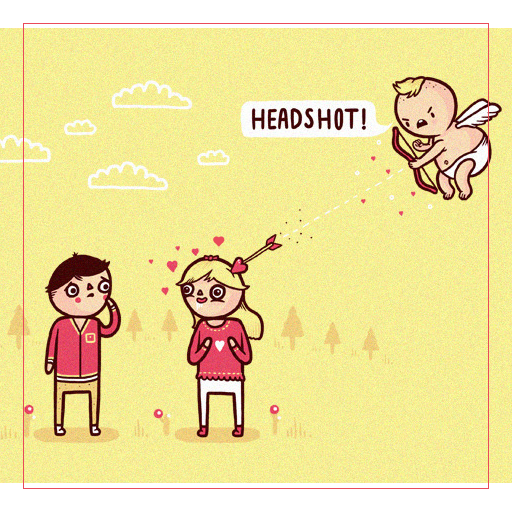
| 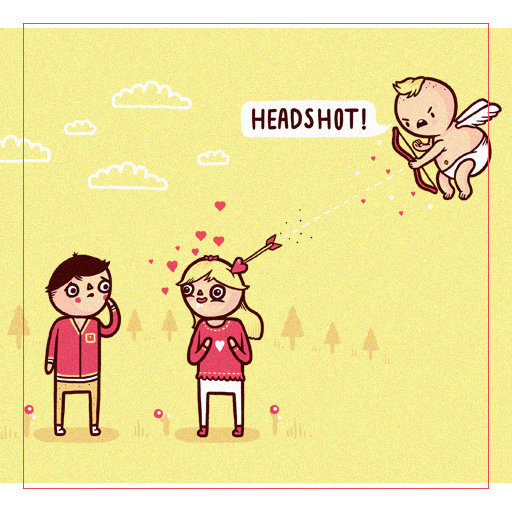
| 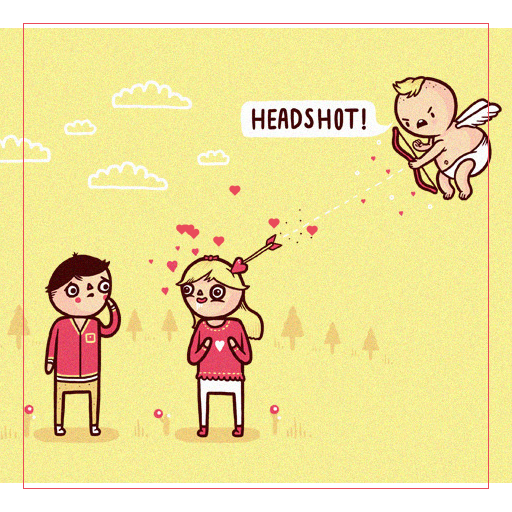
| 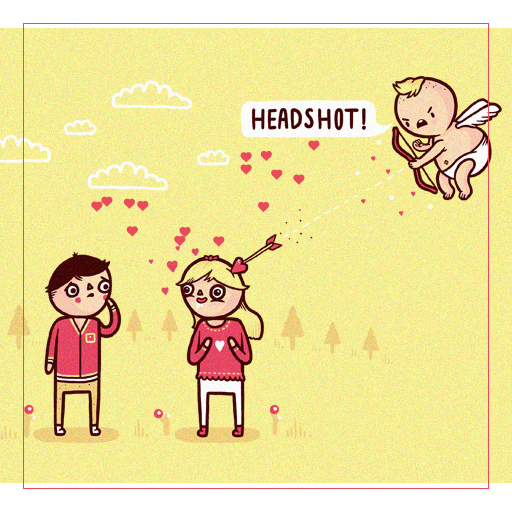
| 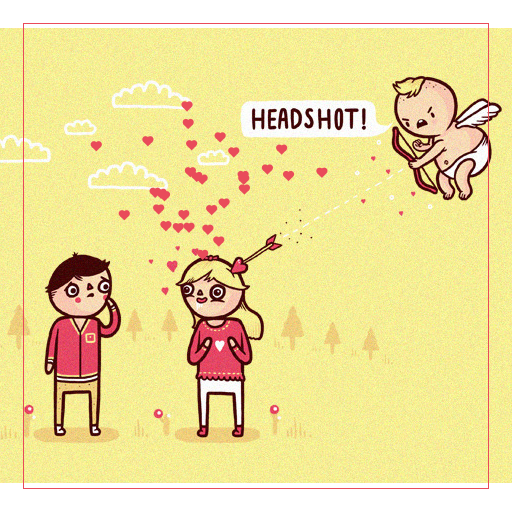
| 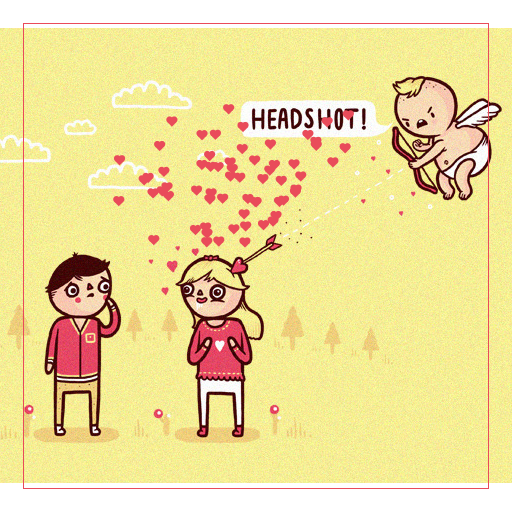
|
Lina Huang
My recursive drawing recursively draws golden flecks above
a boat. The recursion is designed so that the golden flecks
are drawn above the boat and fade outwards and upwards as
the depth of recursion increases.
|
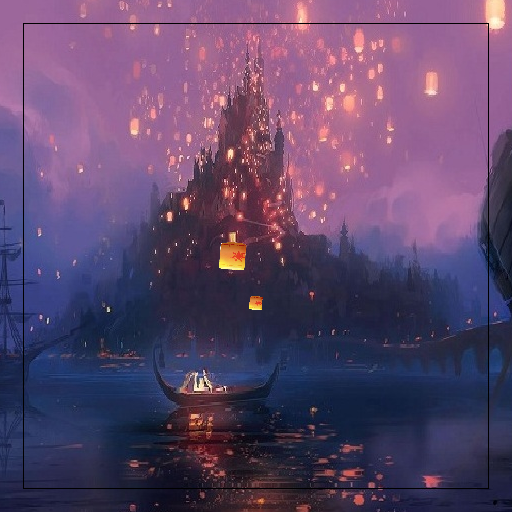
| 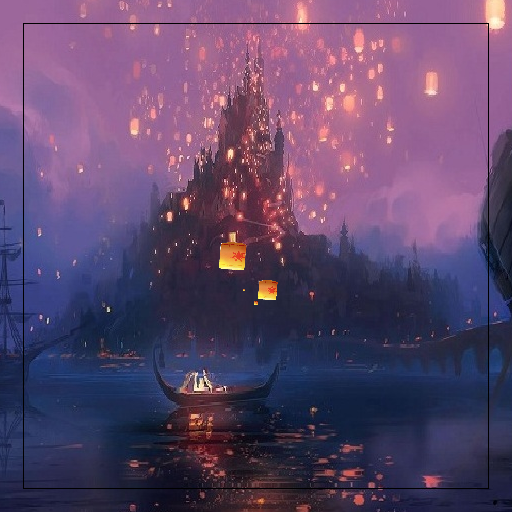
| 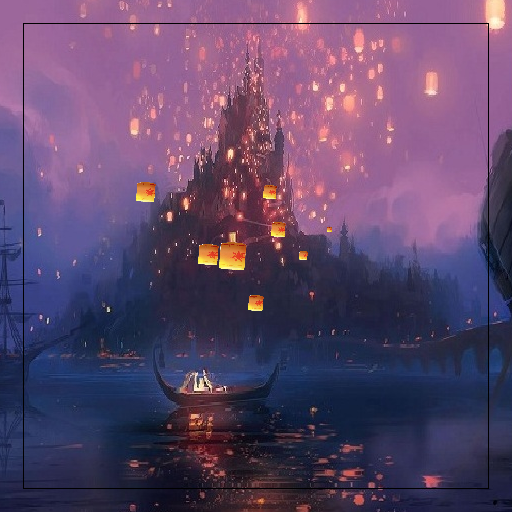
| 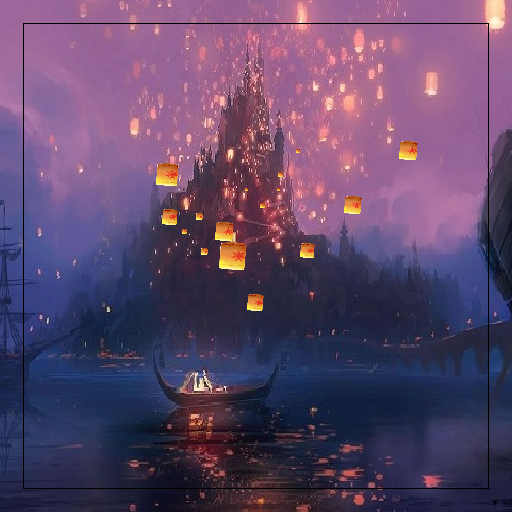
| 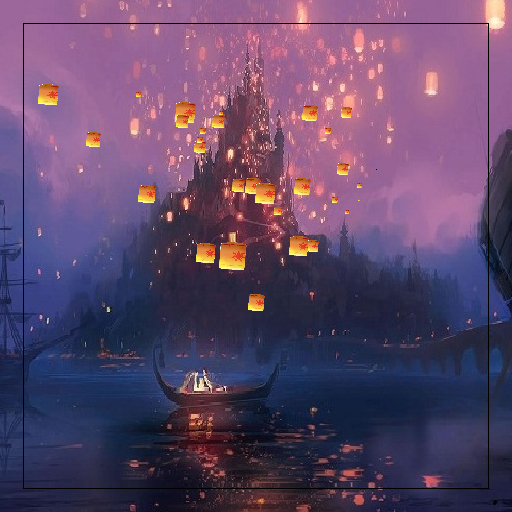
| 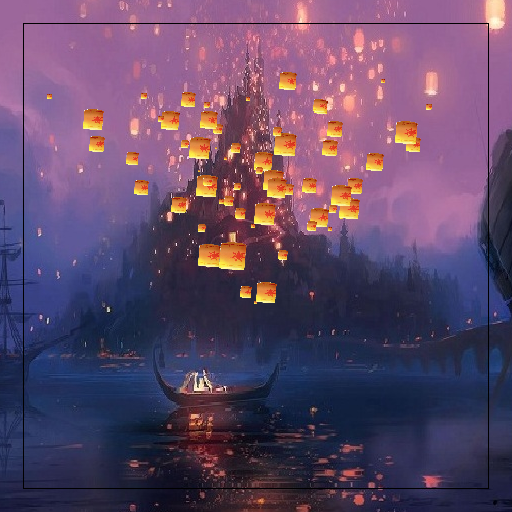
|
Justin Chang
I created a program that prints out numerous deadmau5 heads from the
famous DJ Deadmau5. While the heads are printing, Deadmau5's music plays
in the background and the eyes and mouth. I used the StdAudio, StdDraw
StdOut, StdIn java programs with slight alterations. I used the book
and booksite for reference.
|
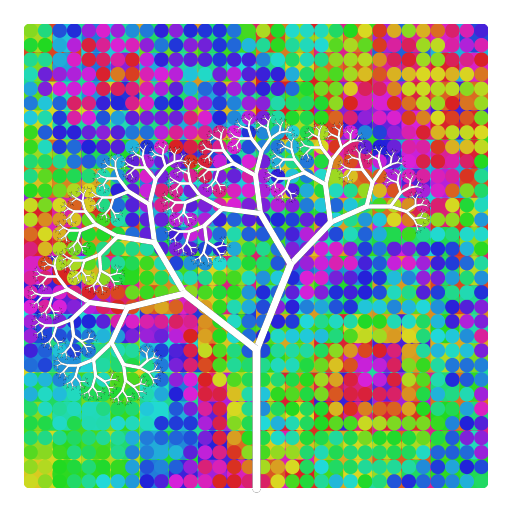
| 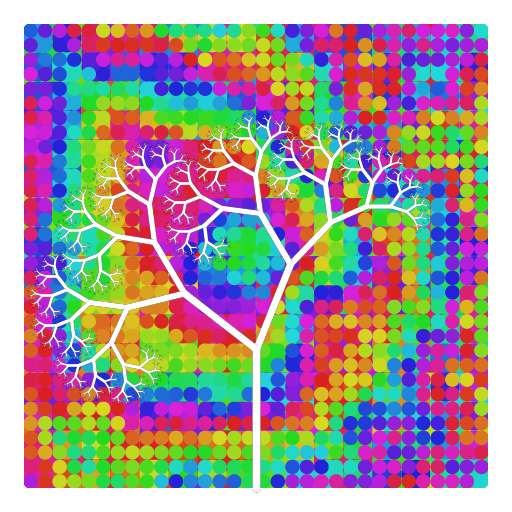
| 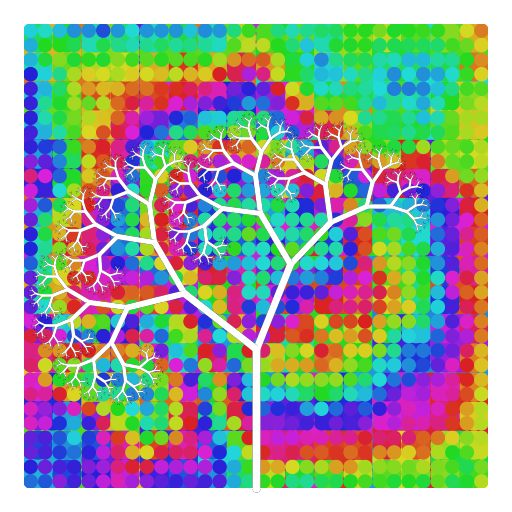
| 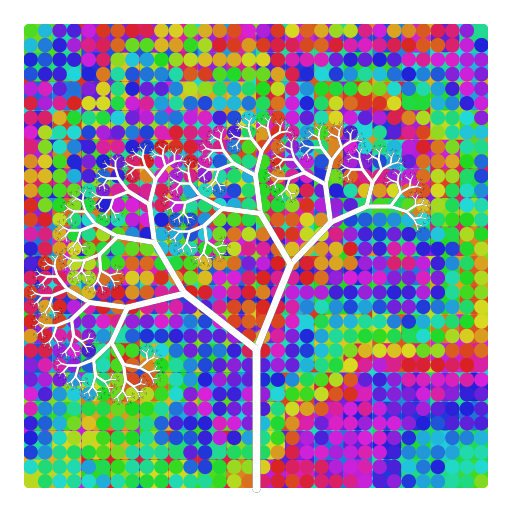
| 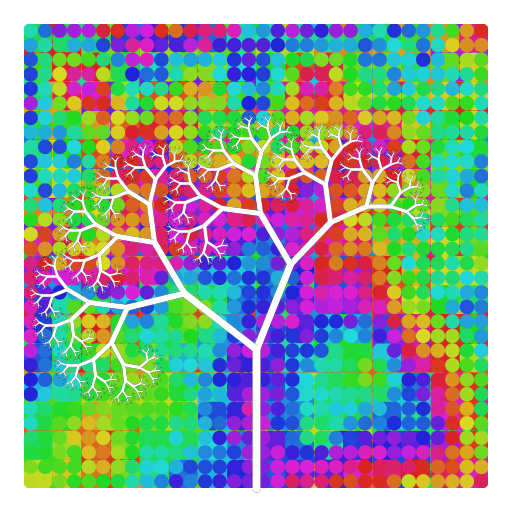
| 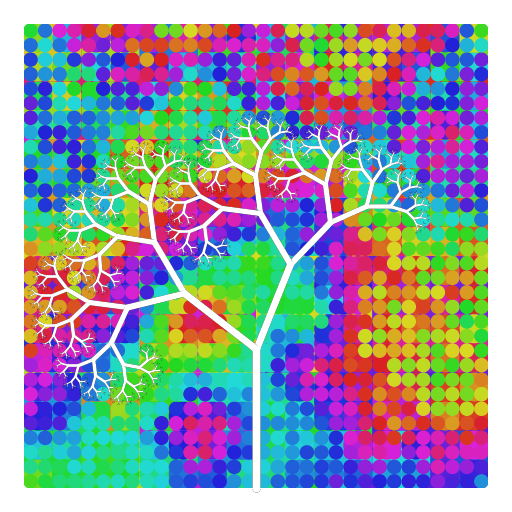
|
Joyce Chao
I have always been facinated by yin yang symbols so I knew I wanted to
do something with that. The art function calls on itself twice for every
n so that you get yin yang inception.
|
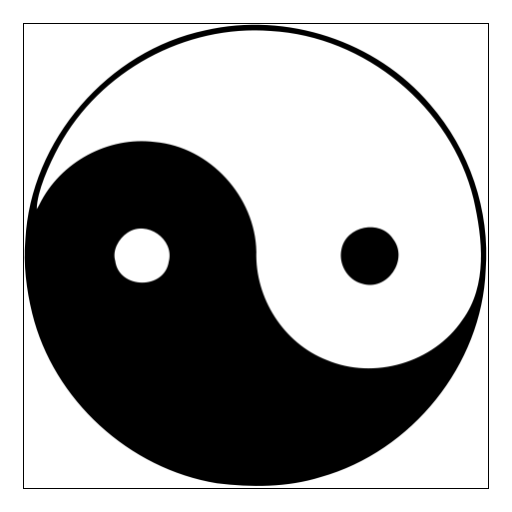
| 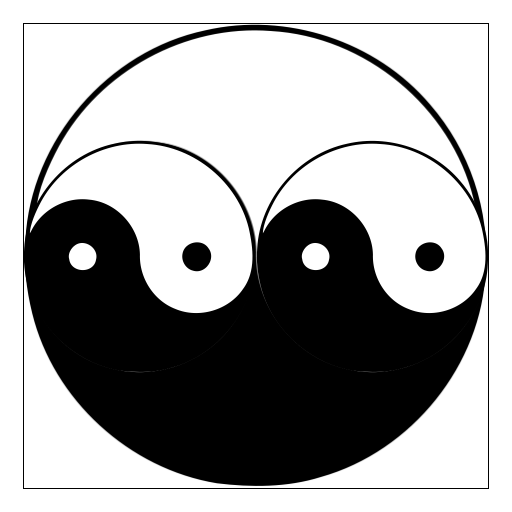
| 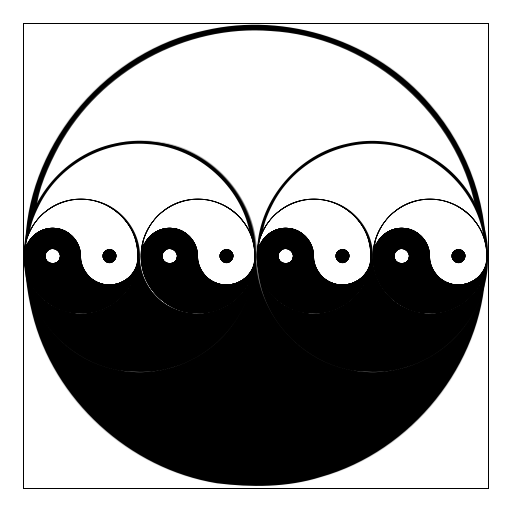
| 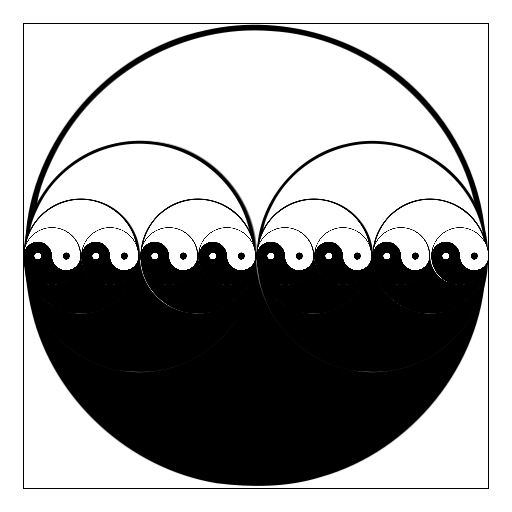
| 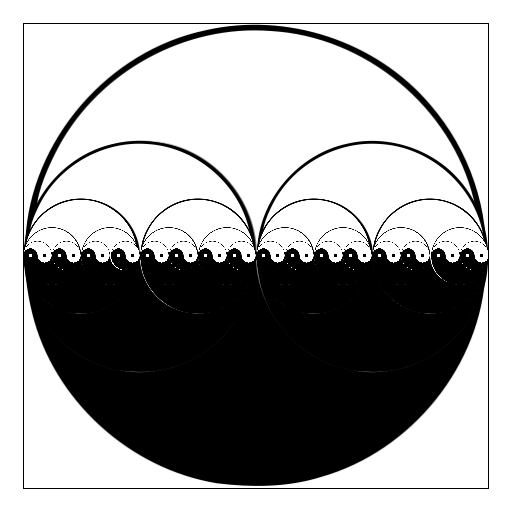
| 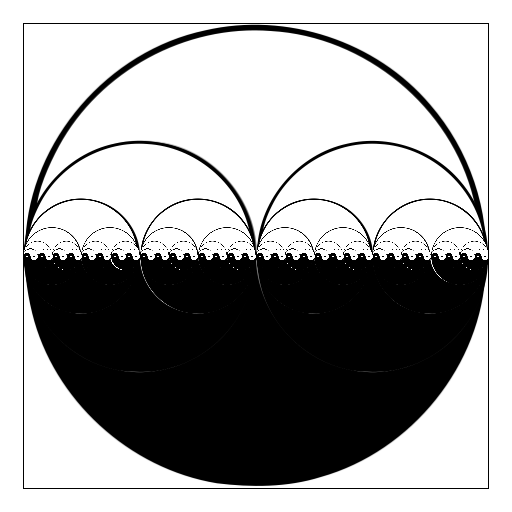
|
Joanna Kass
My creation draws red and yellow text in a seemingly disparate pattern
for low levels of recursion, but as the depth increases (that is, when
it gets to about 4) one can begin to see the outline of an asterisk.
|
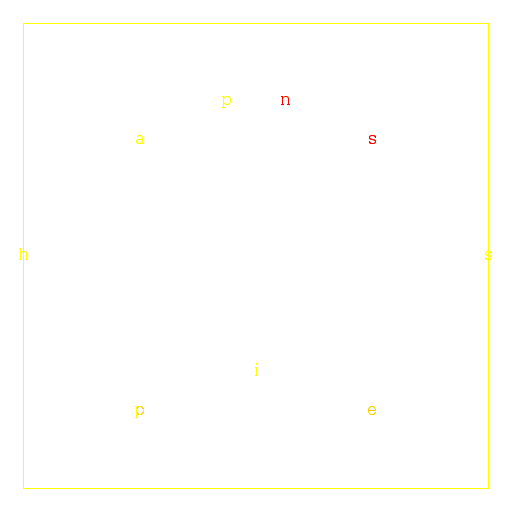
| 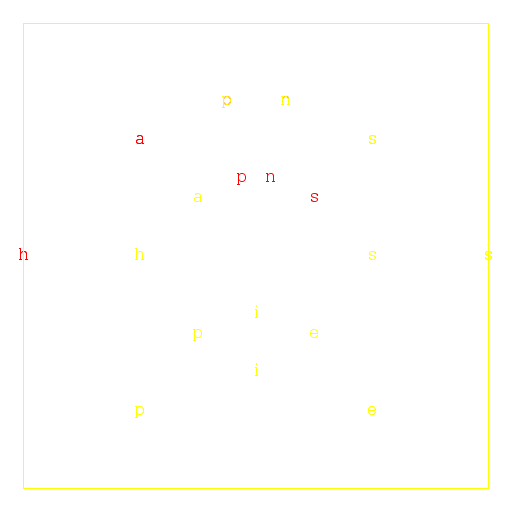
| 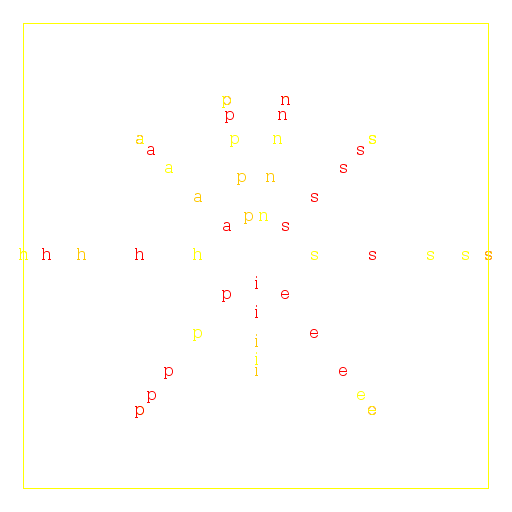
| 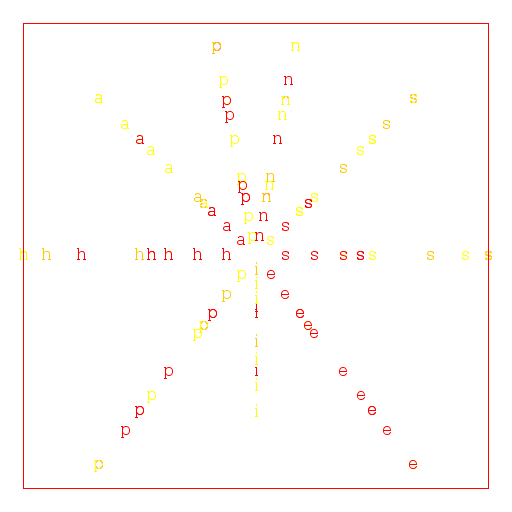
| 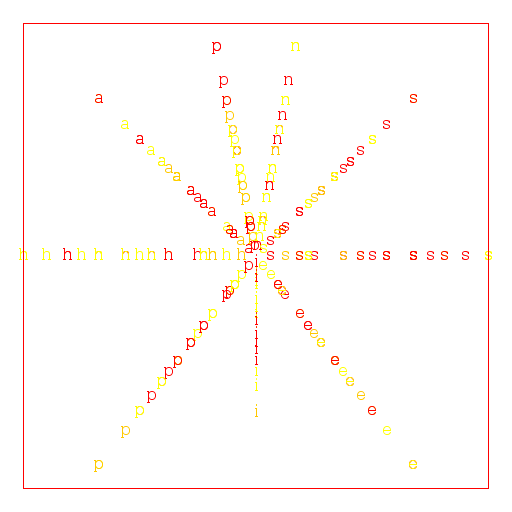
| 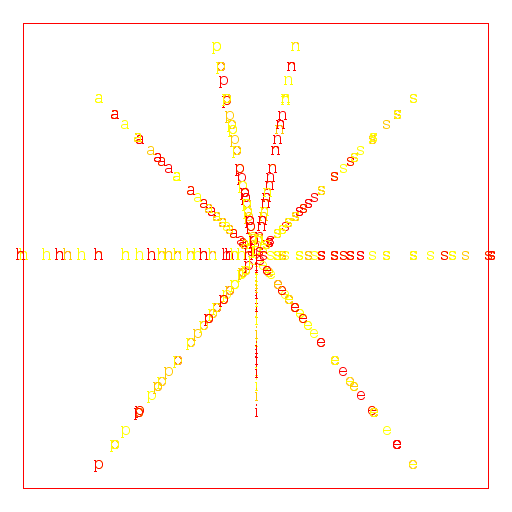
|
Kyle Schoeppner
My artistic creation was to draw a growing mustache against the
background of a man's face. It took me a while to center the mustache
appropriately on the face and to ensure that the mustache grew in a
plausible and sensible way.
|
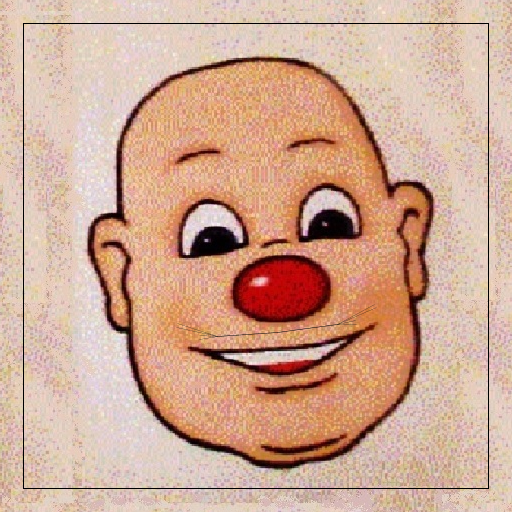
| 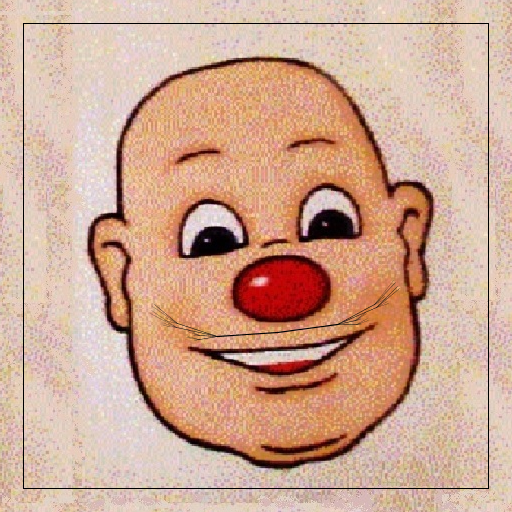
| 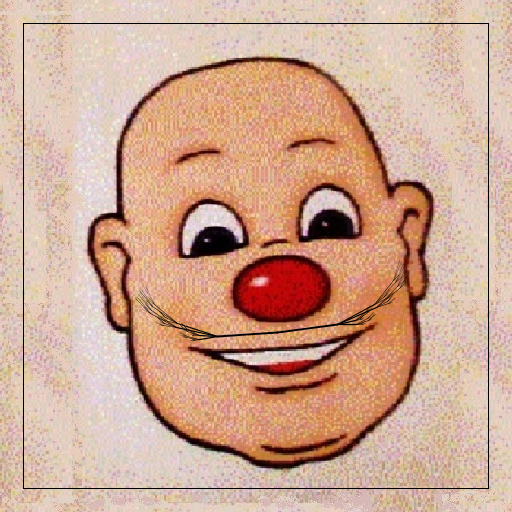
| 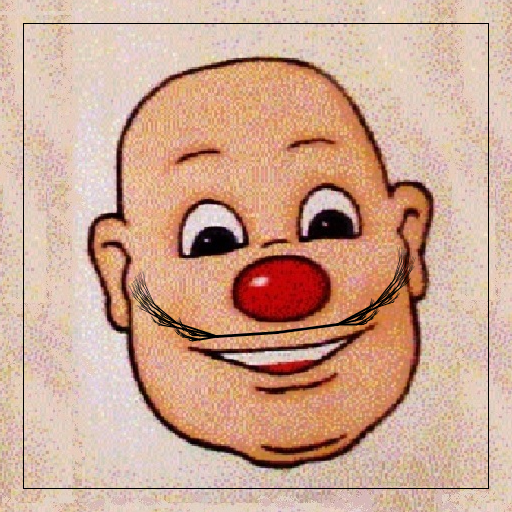
| 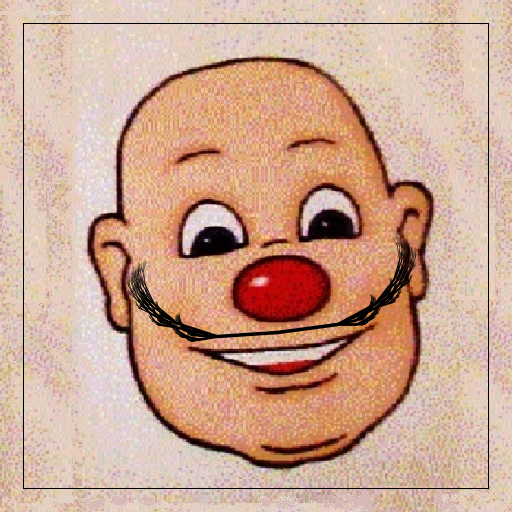
| 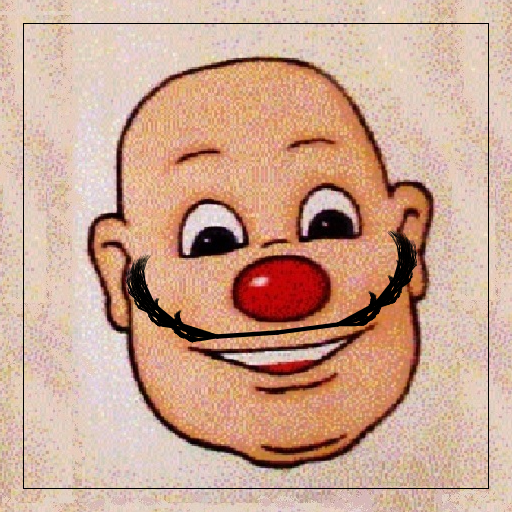
|
Michelle Socher
My recursive drawing draws lines that break every so slightly
from each other at each consecutive line draw. The line drawing is
plotted against a greyish white background. For odd inputs (that is, N
= 1, 3, 5, ...) the line is drawn in the same direction as the white
streak on the background and for even inputs, the line is drawn
perpindicular to the white streak.
|
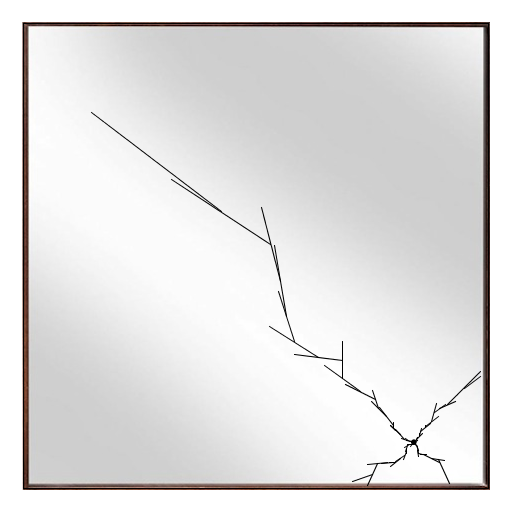
| 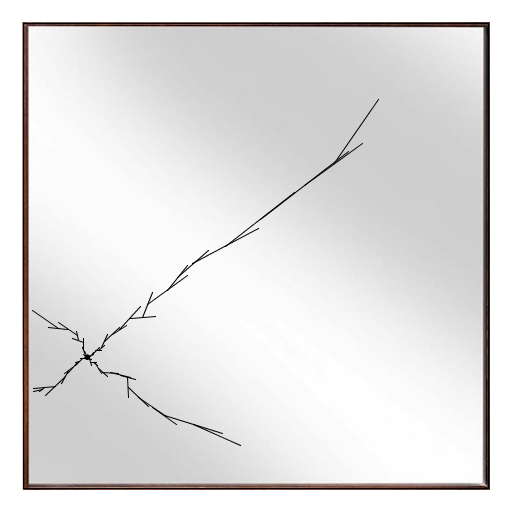
| 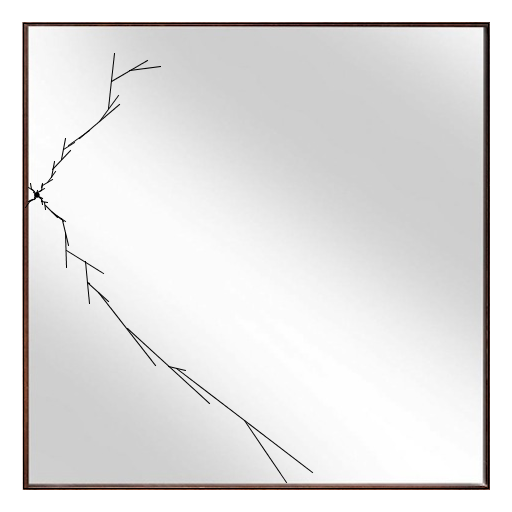
| 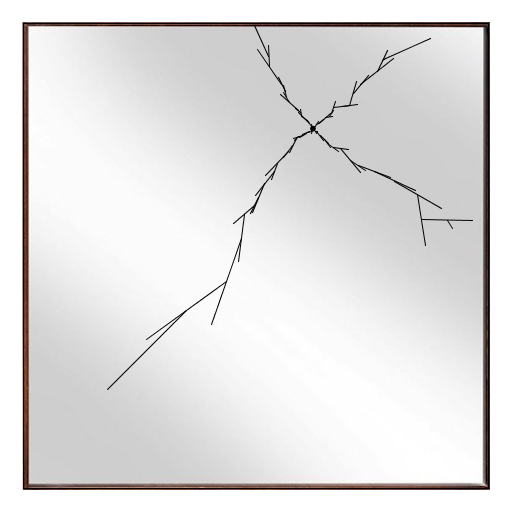
| 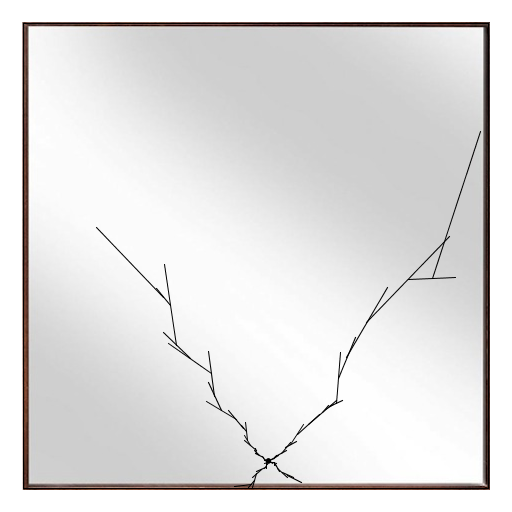
| 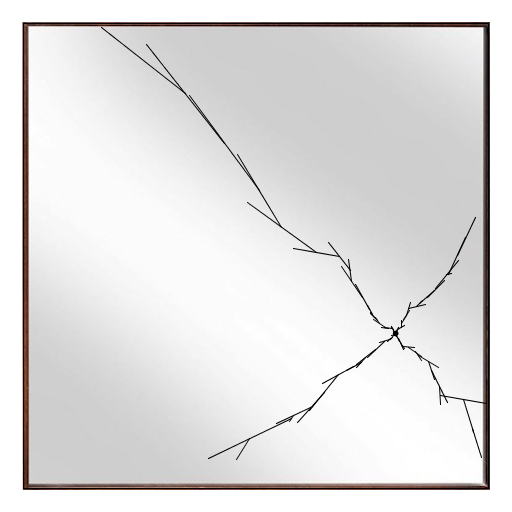
|
Neera Thavornvanit
So my inspiration is from Rihanna's song "Diamonds", in which she sings
"Shine bright like a diamond/ in the sky". I decided to use reference
her song throughout my program by using a picture of her singing as
the background, playing her music and using recursions to draw diamonds.
I tried to work out the mathematics of where each diamond would be on
the screen and the dimensions of each corner first, then tried to apply
it to the program.
|
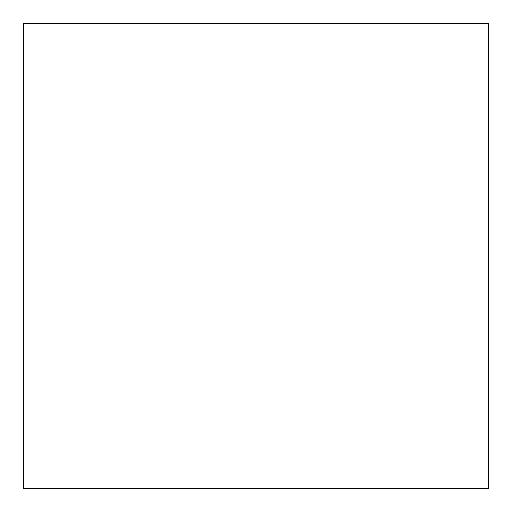
| 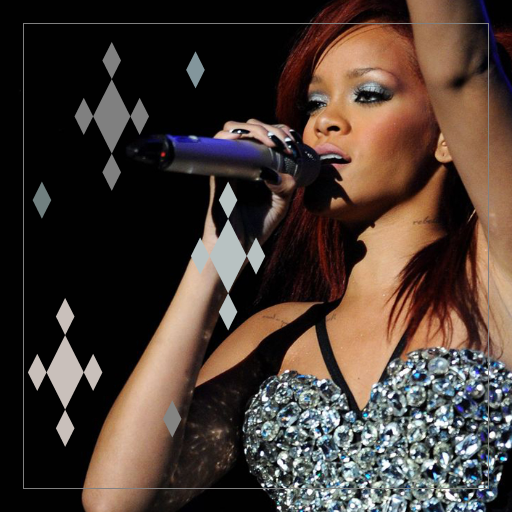
| 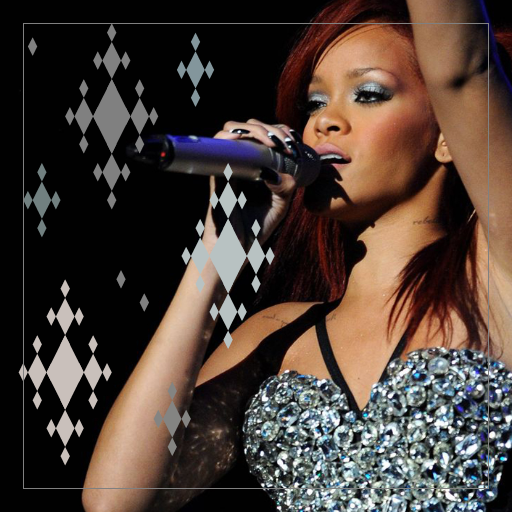
| 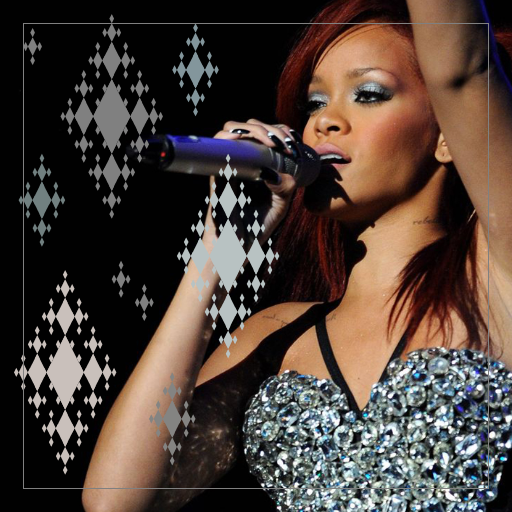
| 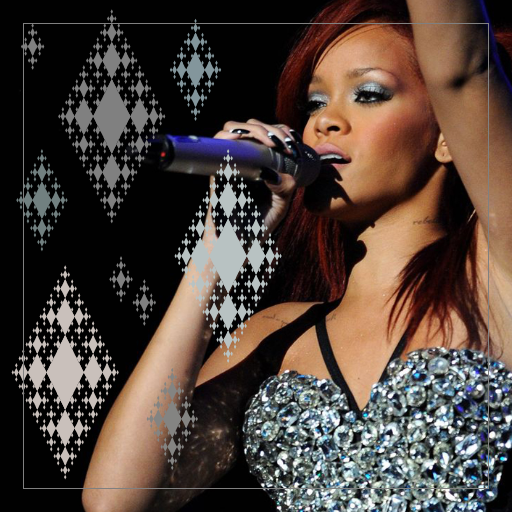
| 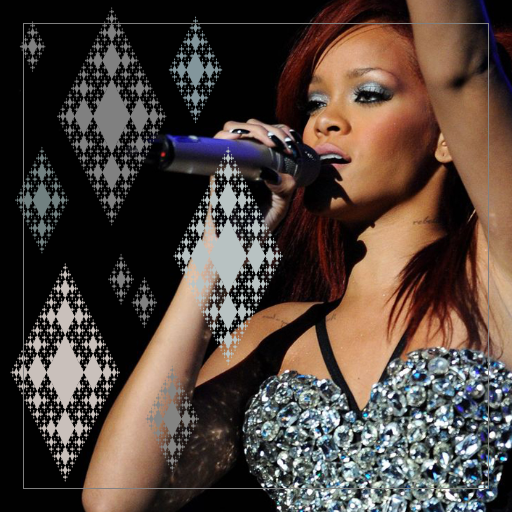
|
Joey Raso
My artistic creation is program that creates a stitch like pattern.
With each level of recursion the pattern gets a little larger.
|
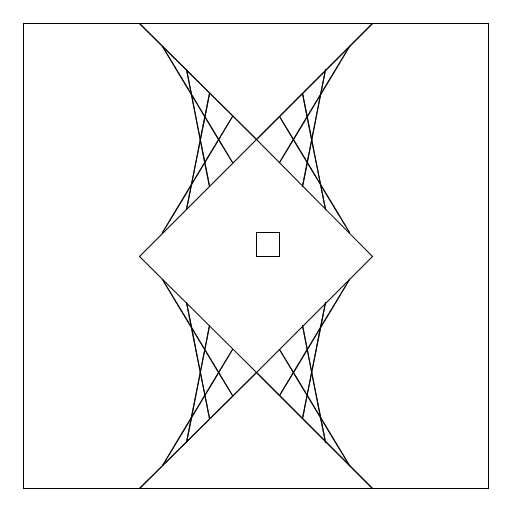
| 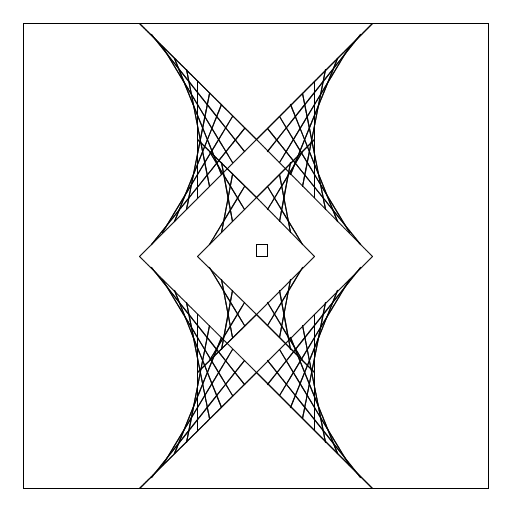
| 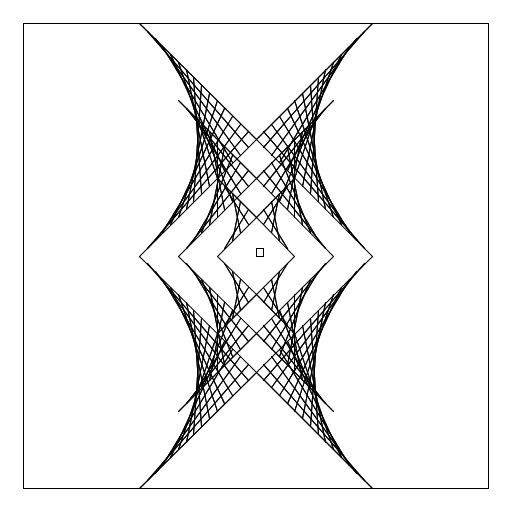
| 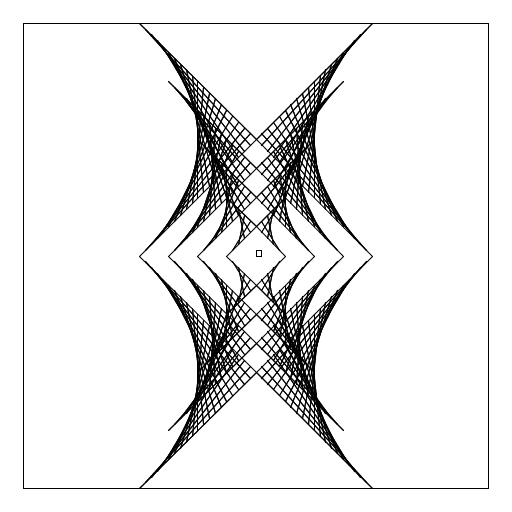
| 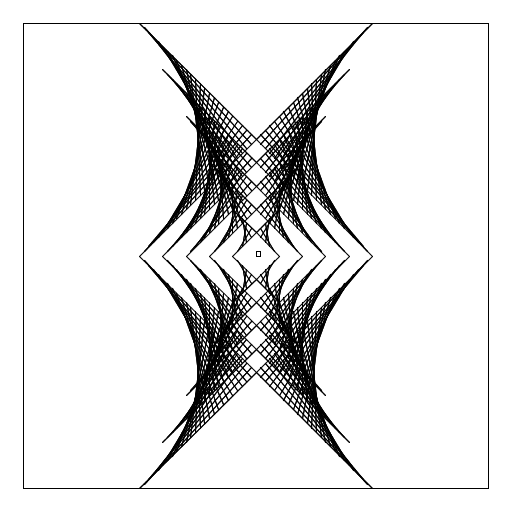
| 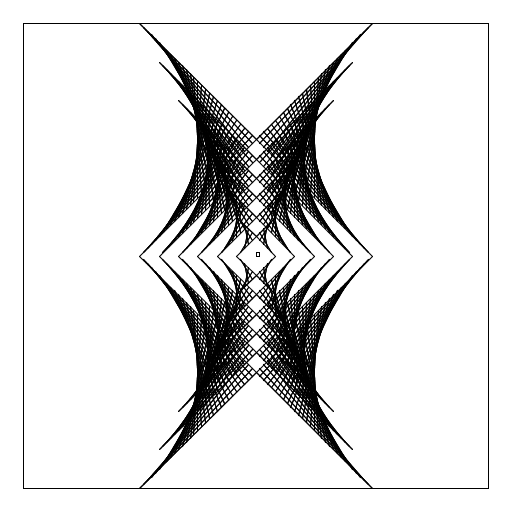
|
Lauren Marquez
My music program shows a jazzy trumpet player playing some tunes. With
the help of a recursive function, his music carries a little bit further
as the command-line argument N increases. Each music note also has a
randomly chosen grayscale color, just to add an extra artistic effect.
I used the booksite and specifically the StdDraw API, mostly for help
with drawing the music notes. The trumpet player picture is taken from:
here .
|
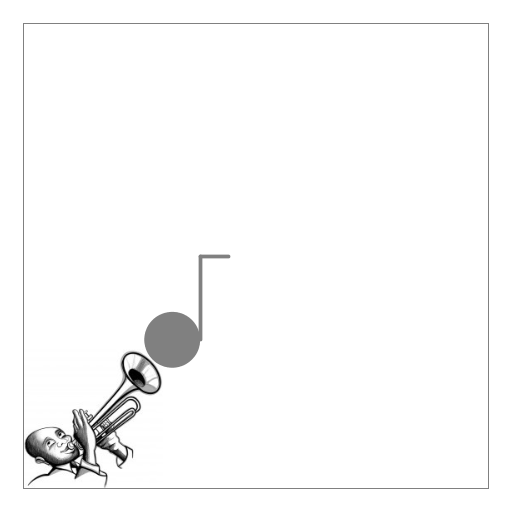
| 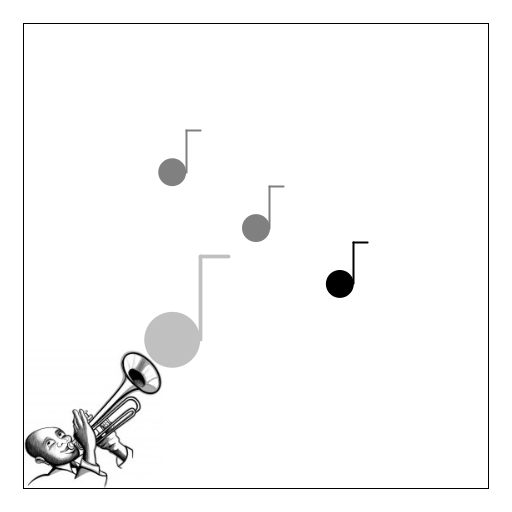
| 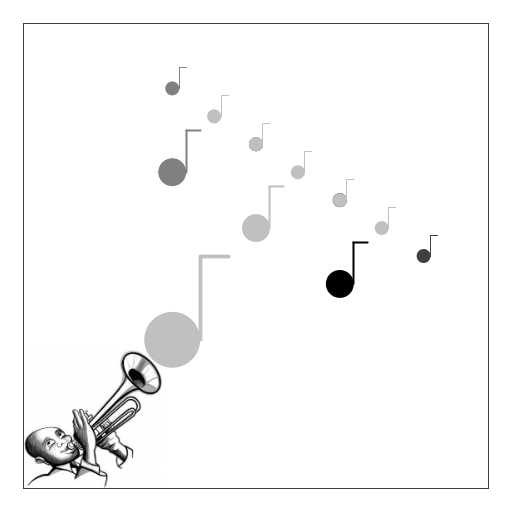
| 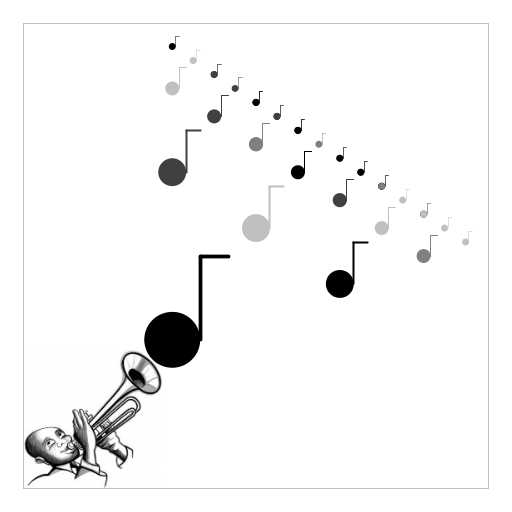
| 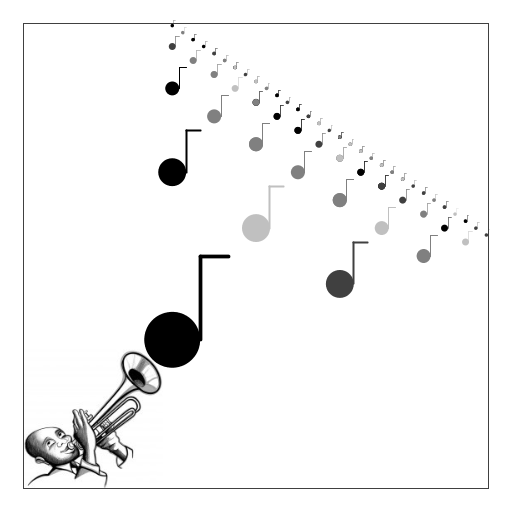
| 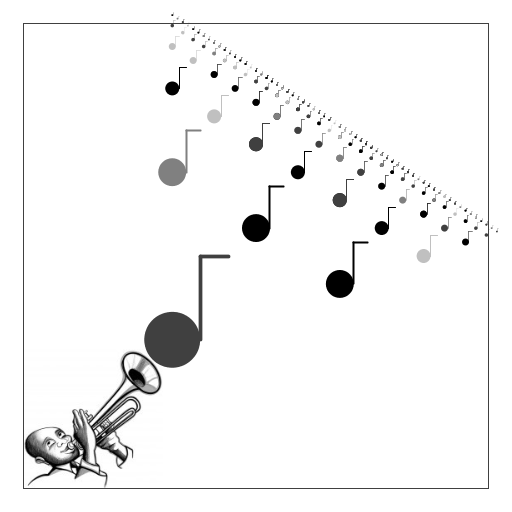
|
Wesley Ru
My program recursively draws zombies of decreasing size in a
triangular fashion. It starts with one big zombie in the middle and
repeatedly draws one zombie on either side of the big zombie below &
to the left and below & to the right. I designed it so that most of
the zombies (for higher inputs) are drawn at or near the line of
text at the bottom which says "The More Zombies Appear"
|
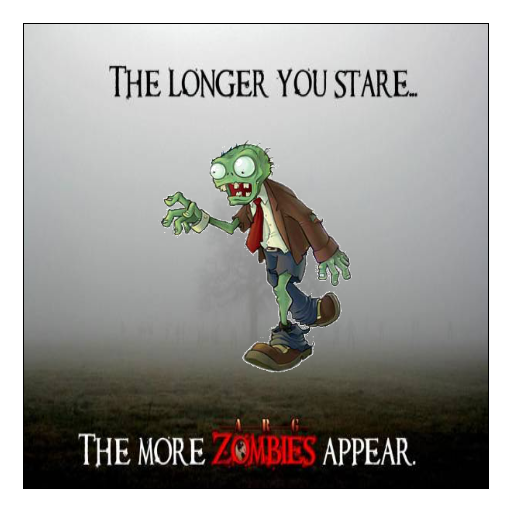
| 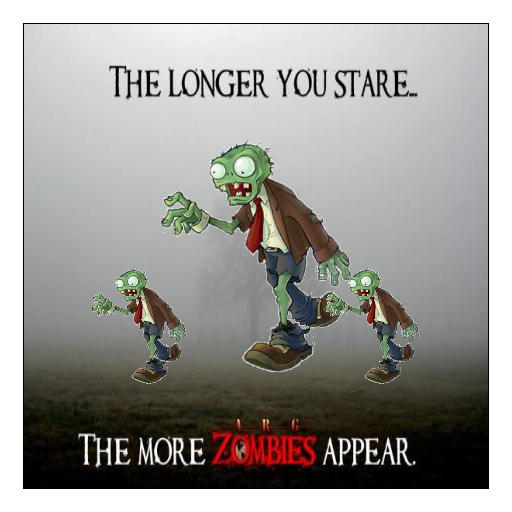
| 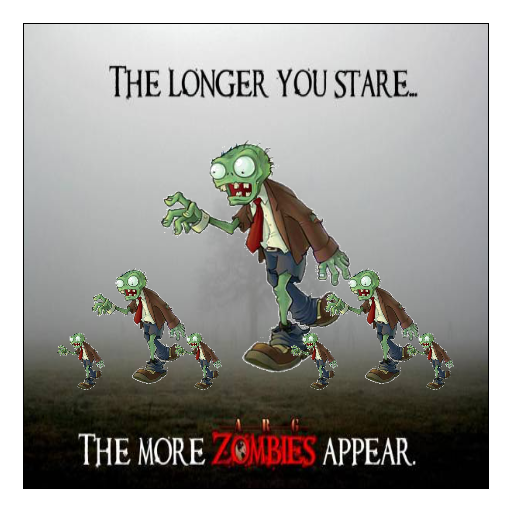
| 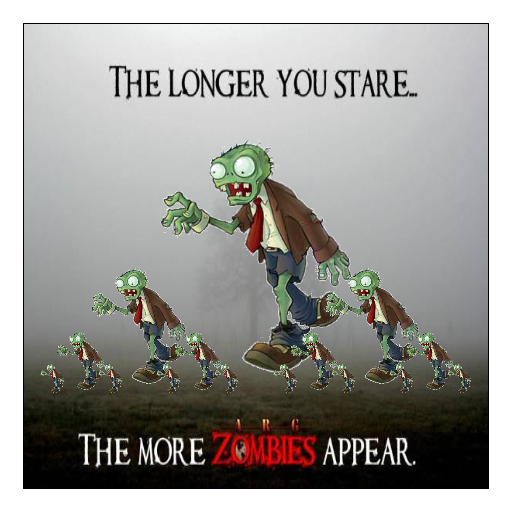
| 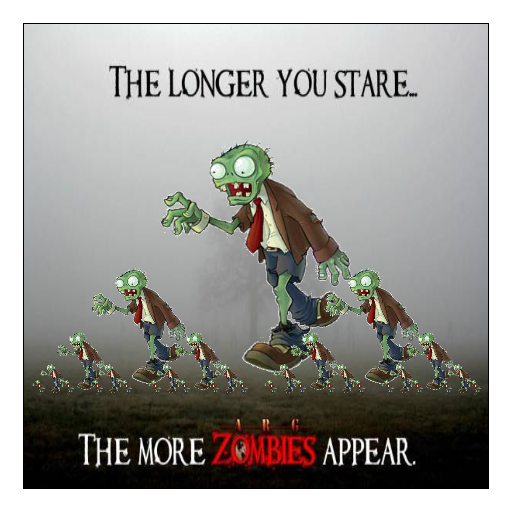
| 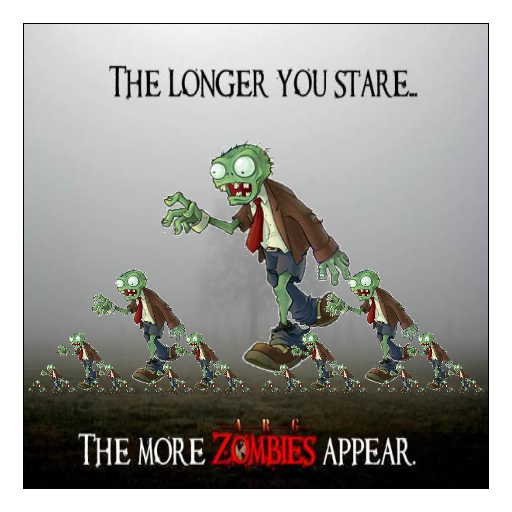
|
Ryan Sauer
I decided to use one of my favorite childhood books as the subject of my
creation. Dr. Seuss' Gertrude Mcfuzz grows a tail from which numerous
feathers spring so I designed a program which plots an image of gertrude
and some text as a background and recursively draws feathers sprouting
from her tail based on the number of iterations desired. The program
works by calling the recursive function sierpinksi which determines the
location and size of the next feathers based on the current iteration.
|
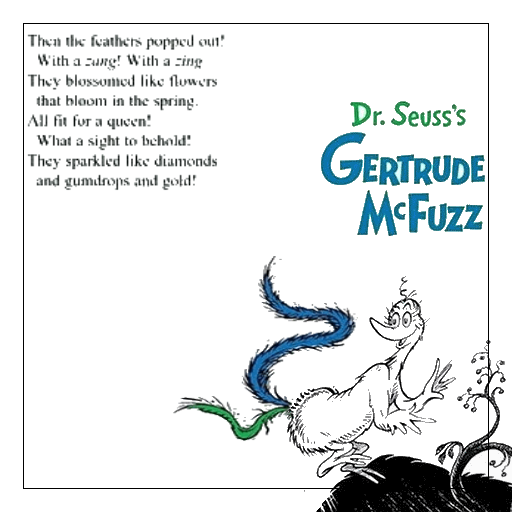
| 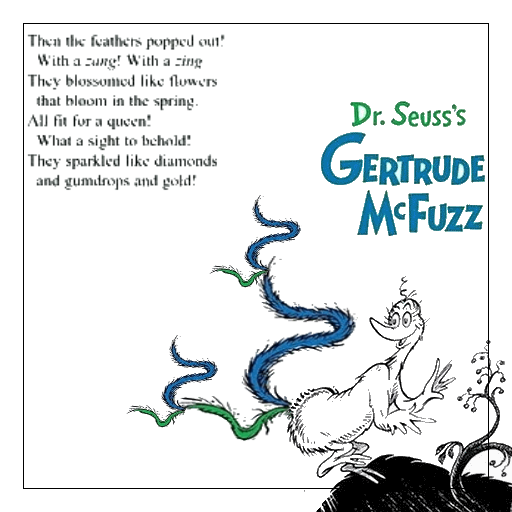
| 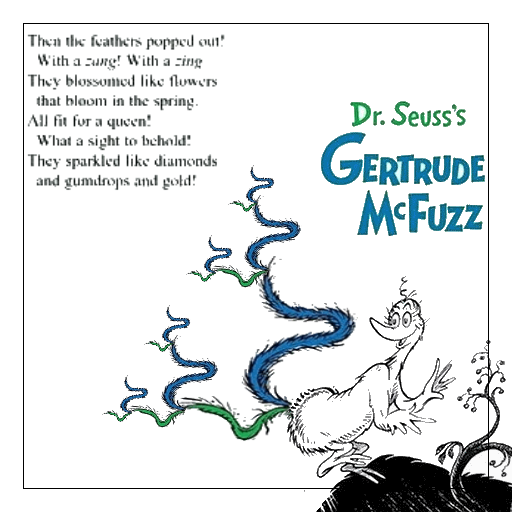
| 
| 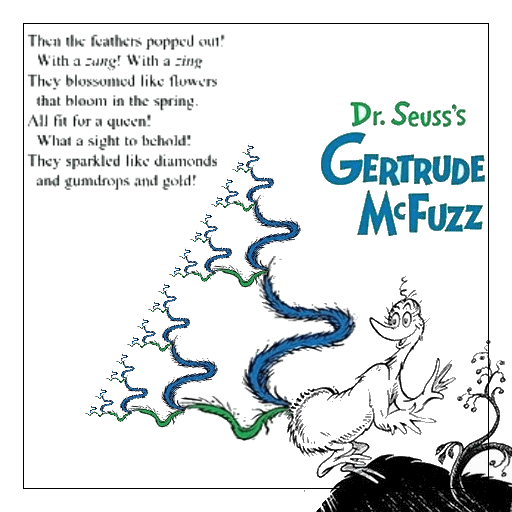
| 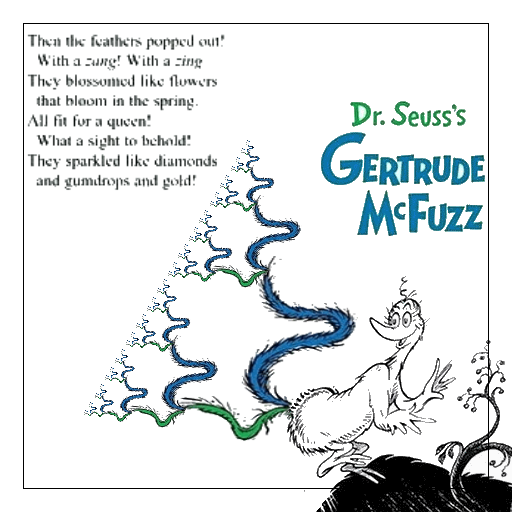
|
Timothy Kim
My artistic creation generates a dandelion against a backdrop of blue and other
dandelions. My inspiration draws from a recursive tree, but my code also
reduces the dimensions of each branch such that a dandelion results. The book-
site was used as a source.
|
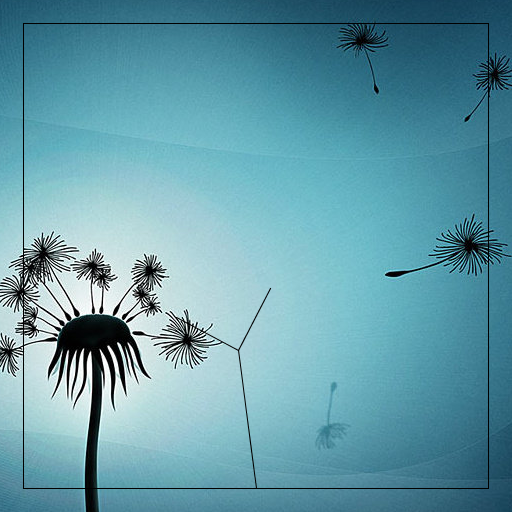
| 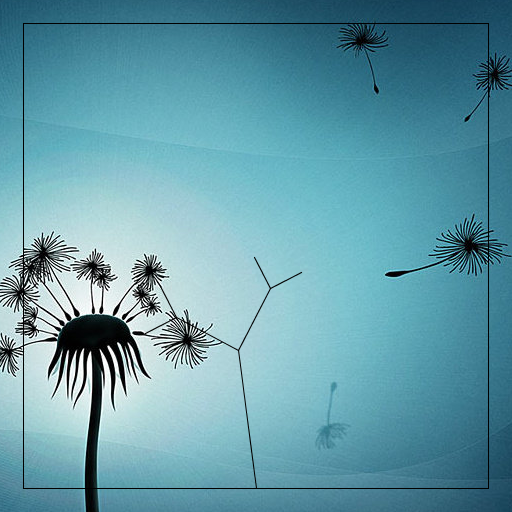
| 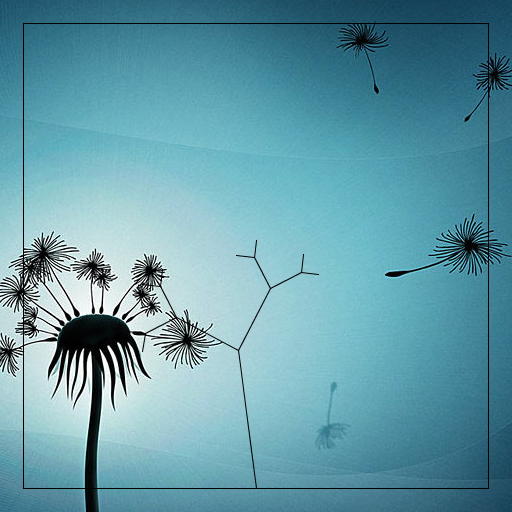
| 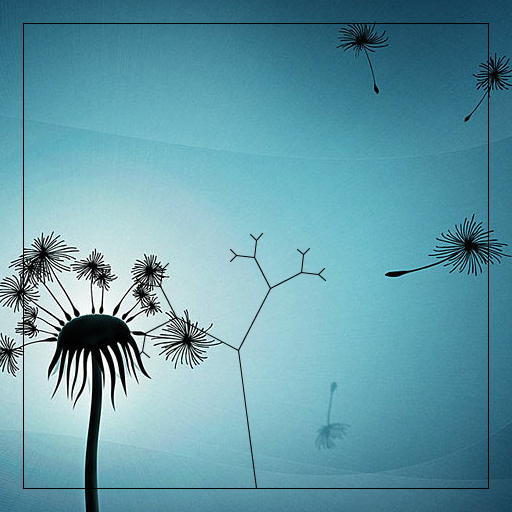
| 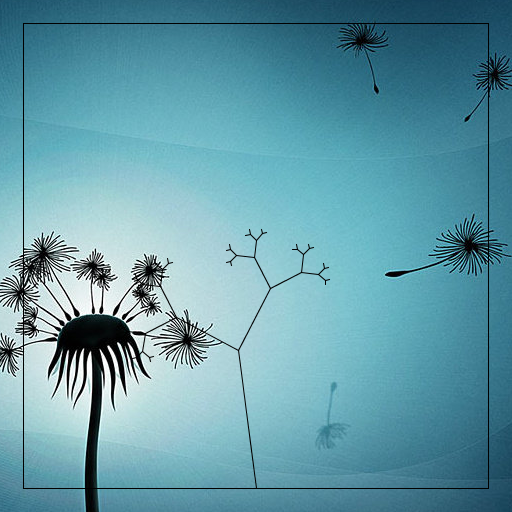
| 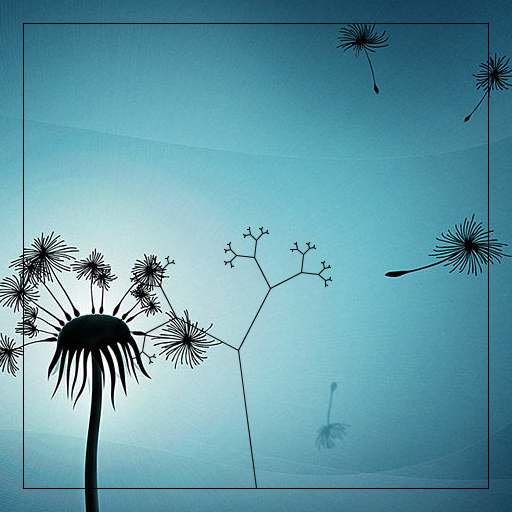
|
Scott Wang
Since many people get very existential during this assignment,
this is just a pattern of connected triangles. I can imagine some corporation
using this as some sort of branding.
Used insertion sort, program 4.2.4 in the book.
|
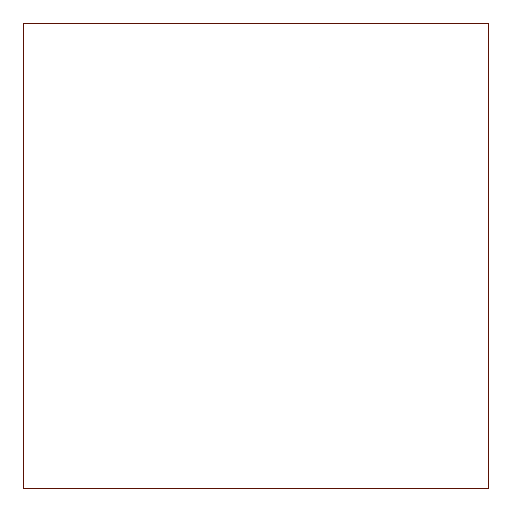
| 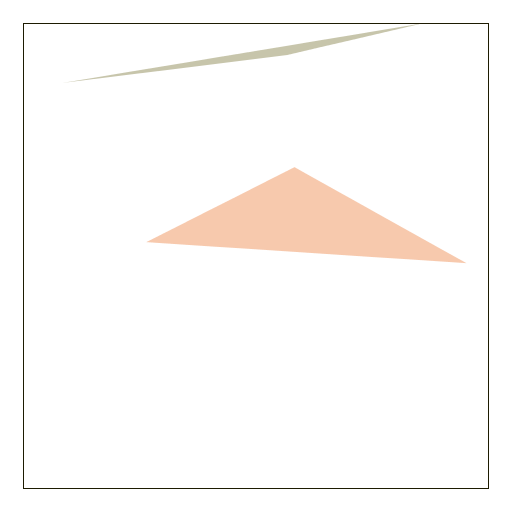
| 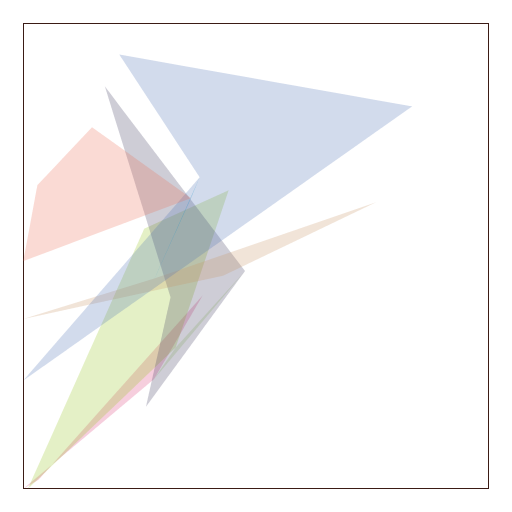
| 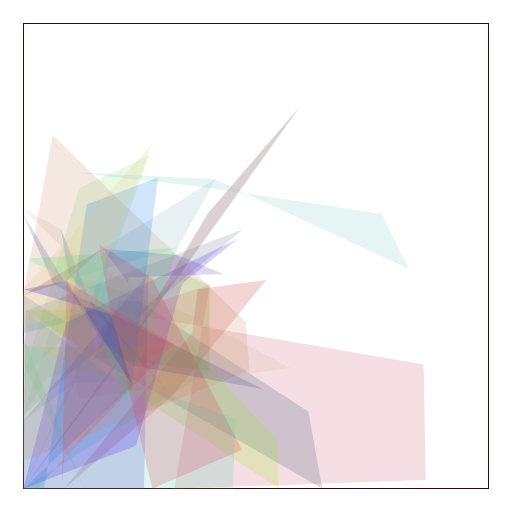
| 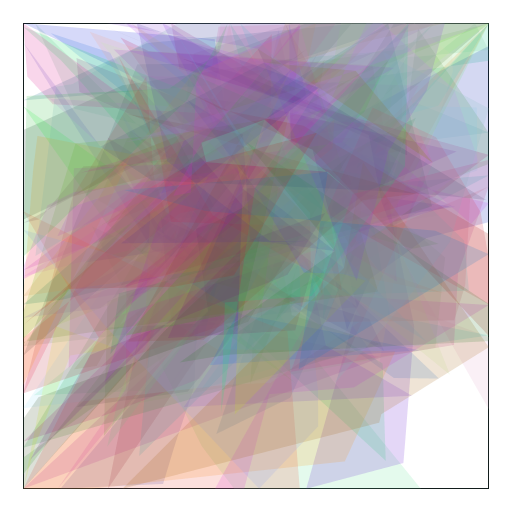
| 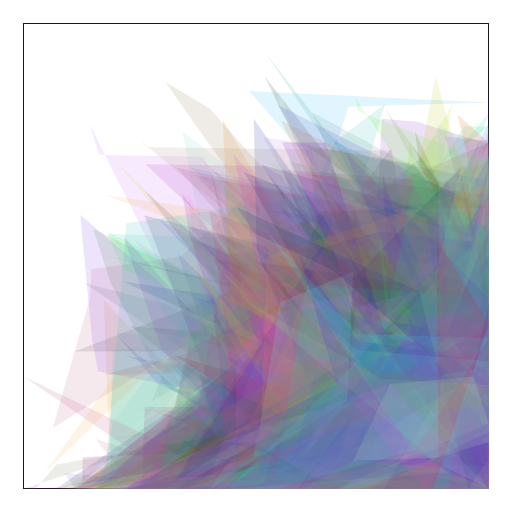
|
Fall 2012
Aedhan Loomis
I used to draw these curve sketches in middle school so I thought they
would be a nice design to apply to this assignment. I took these
elements and placed them in the corners of the window. I also added a
random color generator favored towards green to change the colors of
the elements.
|
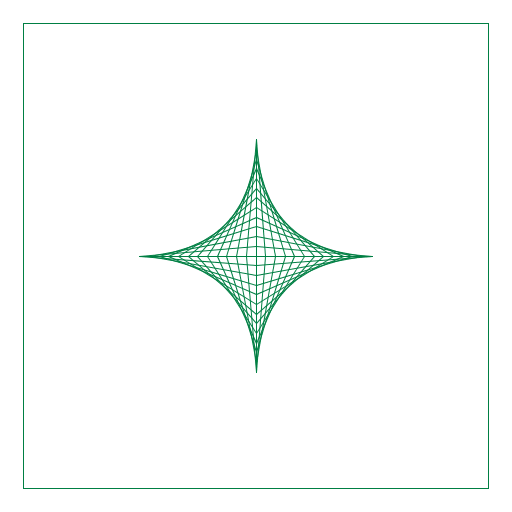
| 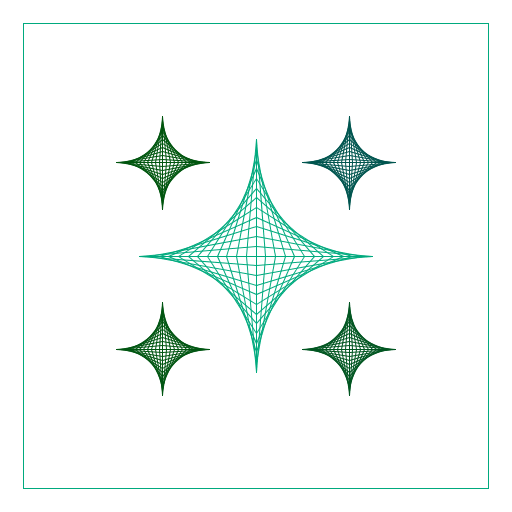
| 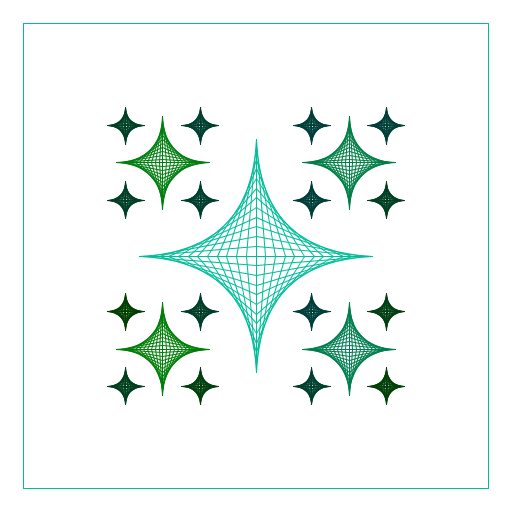
| 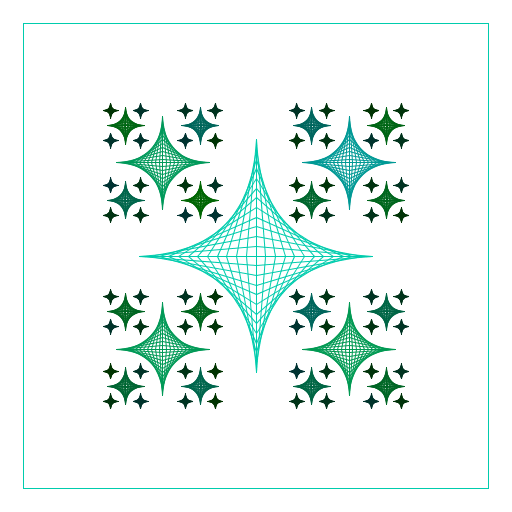
| 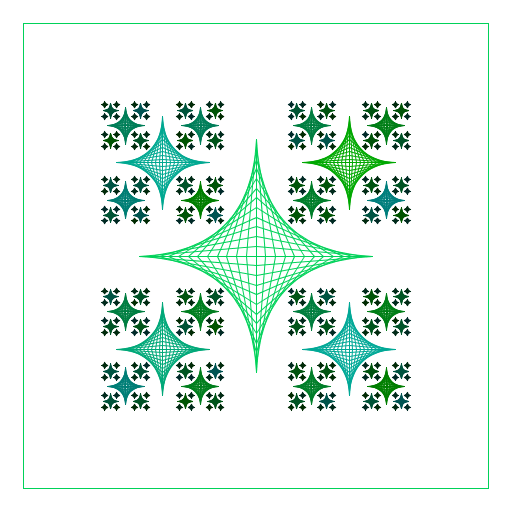
| 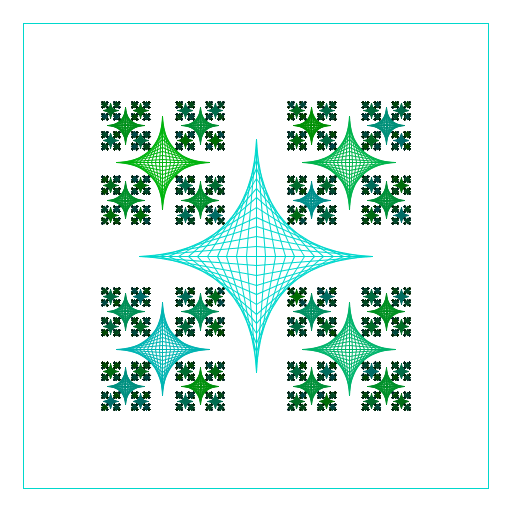
|
Alexandros Konstantopoulos
I tried to depict all the arteries and vains of the lungs. In reality
every main artery splits up into smaller ones, each one of those into
even smaller ones and so on. This can be represented with recursion.
|
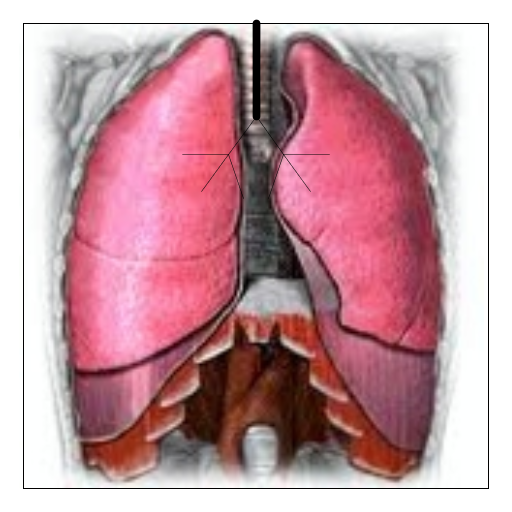
| 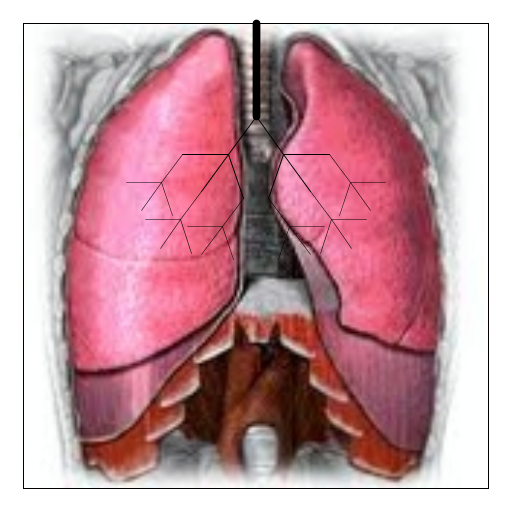
| 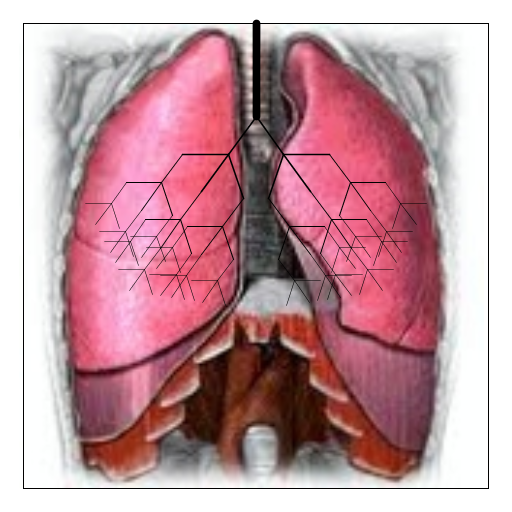
| 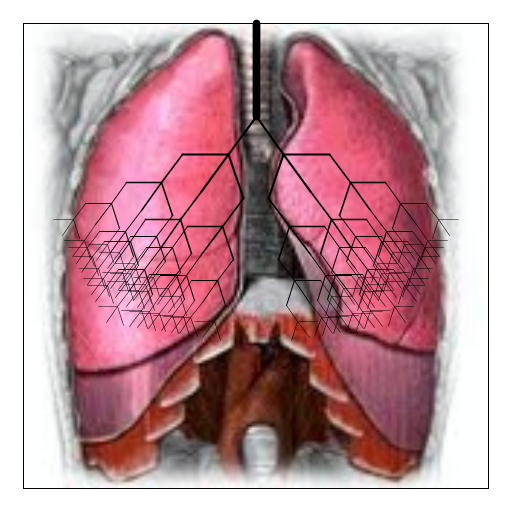
| 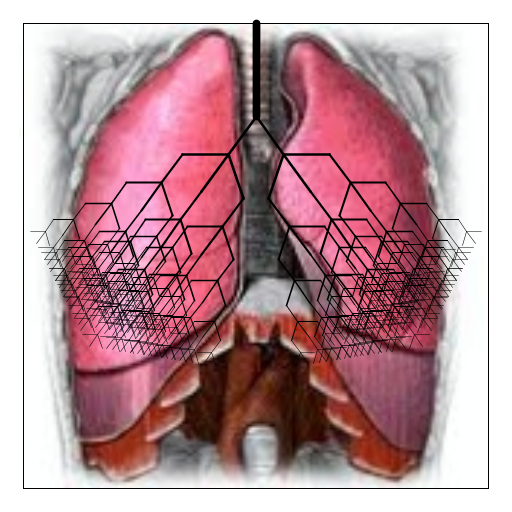
| 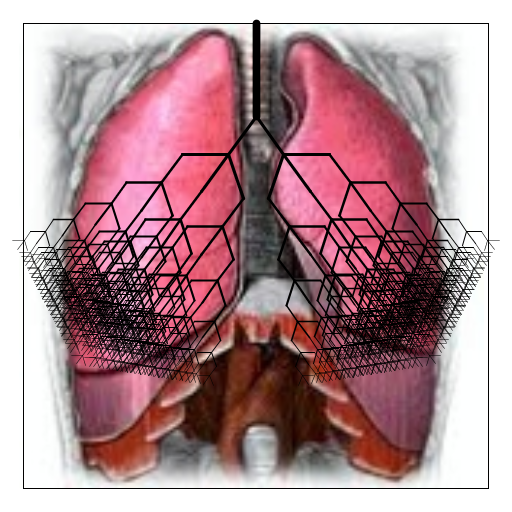
|
Cat Cleveland
I wanted to create something representing the elusiveness of the end
of rainbows. This is demonstrated both by the breaks in the circles
that dramatically shift each time it is called recursively, but also
in the ever smaller "real rainbow" as N gets larger, since the rainbow
colors only stay in order while N <= 7. There are also seven rings in
each larger loop to represent the seven bands of a rainbow, with each
loop containing one ring with the previous color and one ring with the
next color.
|
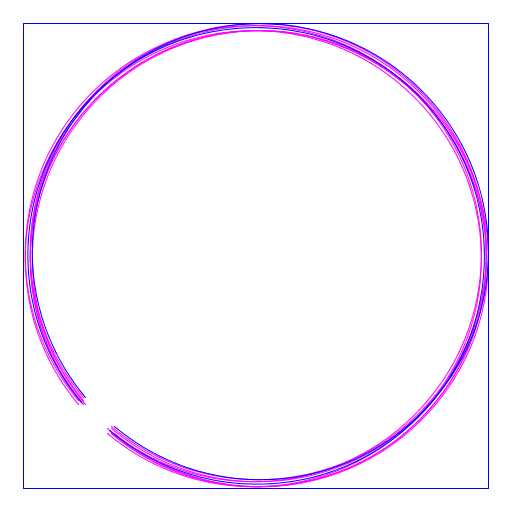
| 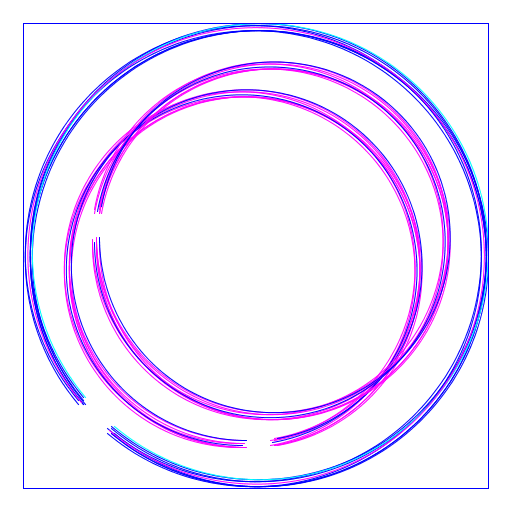
| 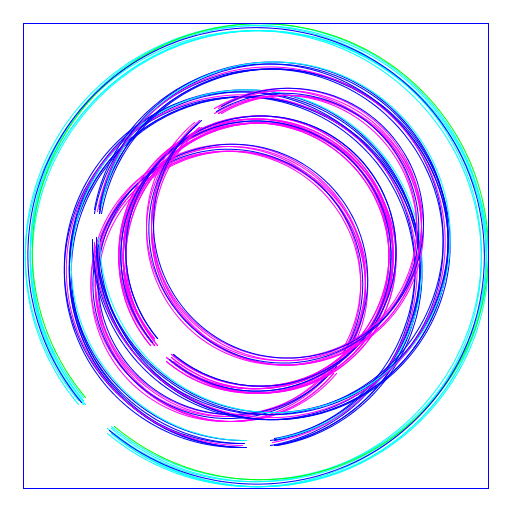
| 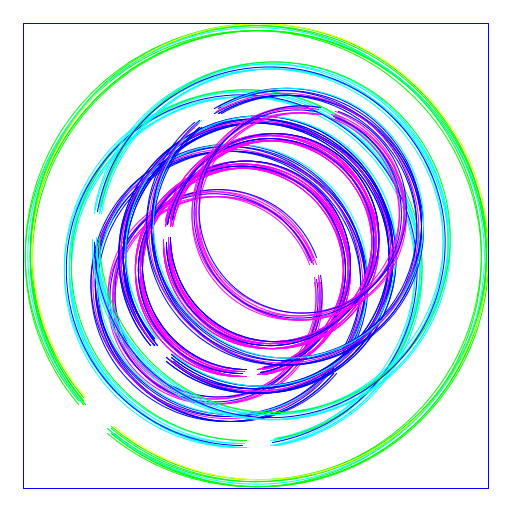
| 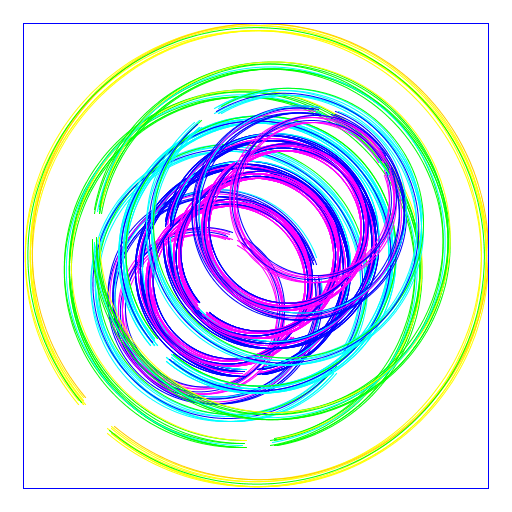
| 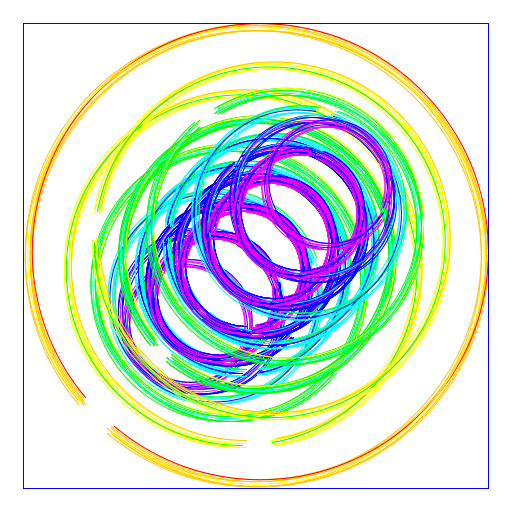
|
Charles Edwards-Kuhn
I decided to make a fleet of space ships vaporizing a theoretical
asteroid. As you can see, the idea is that the more ships appear, the
more firepower is concentrated into the asteroid and the more pieces
it breaks into. There was a lot of messing around with the scaling of
the imported images and making sure that large numbers of ships and
asteroid fragments wouldn't go off the screen.
|
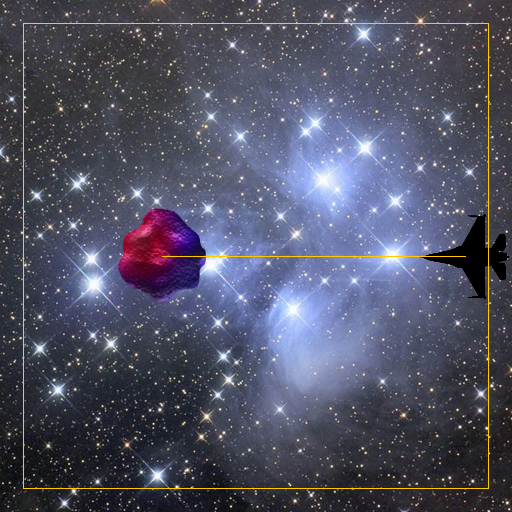
| 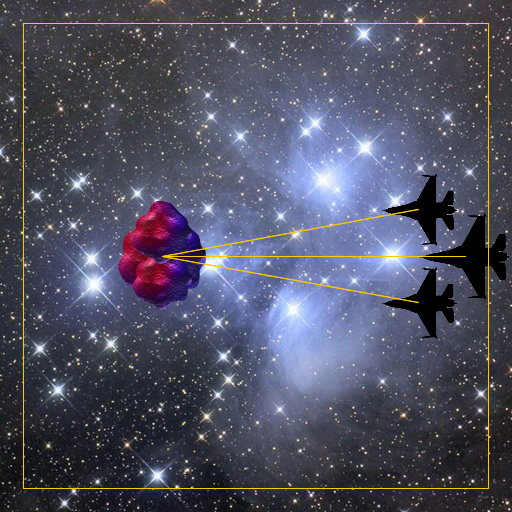
| 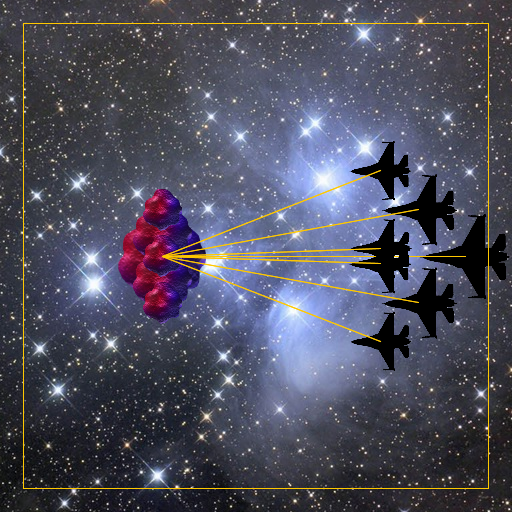
| 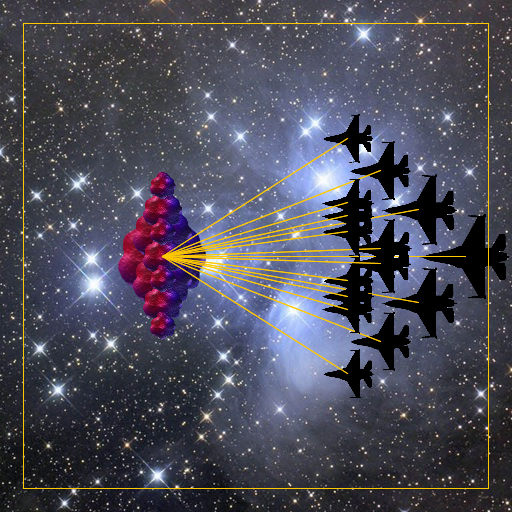
| 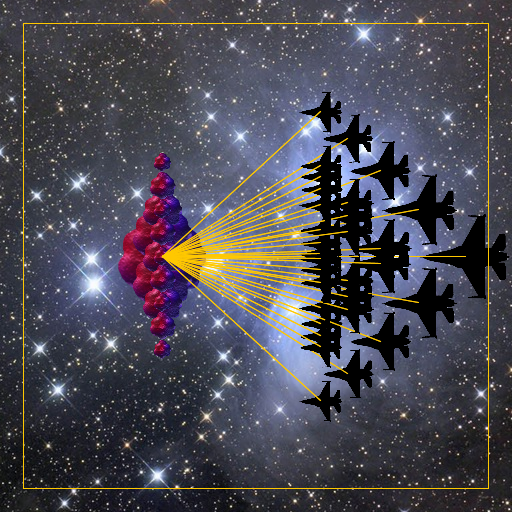
| 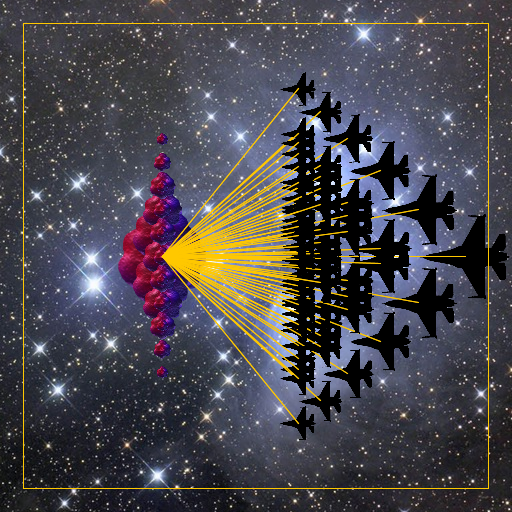
|
Danylo Villano
I made a program that draws eyeballs stacked upon one another, in an
attempt to make something that was reminiscent of Eastern Orthodox
architecture/art and was creepy. I spent a long time both drawing the
image of the eye, and also calculating the exactly how the radius
should change and where each set of new eyes should be drawn in
relation to the previous one. There were many different iterations of
the program, with many different arrangements of the eyes, but for the
final version, I sacrificed a degree of creepiness for the sake of a
more orderly appearance.
|
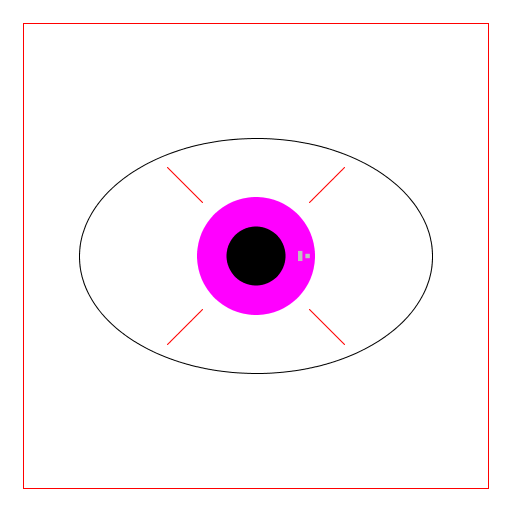
| 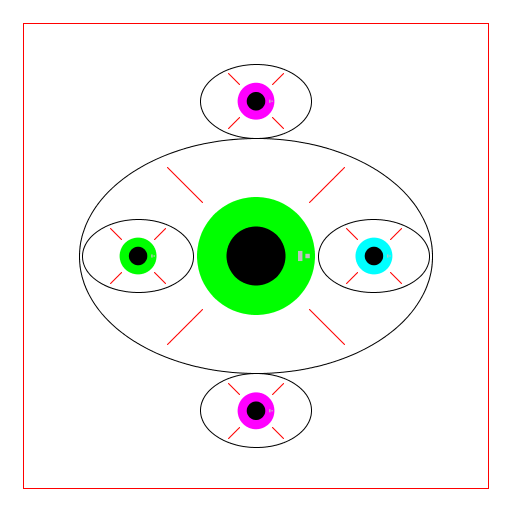
| 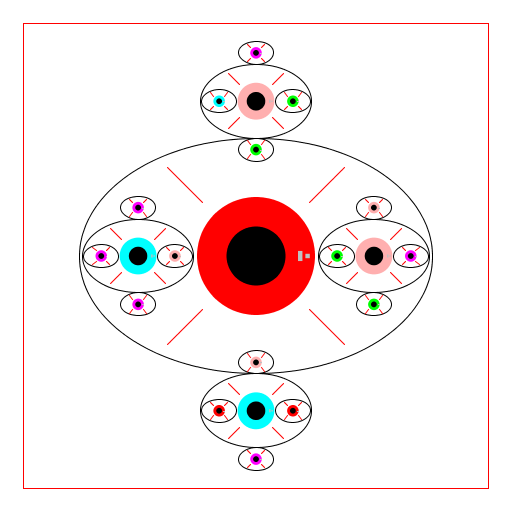
| 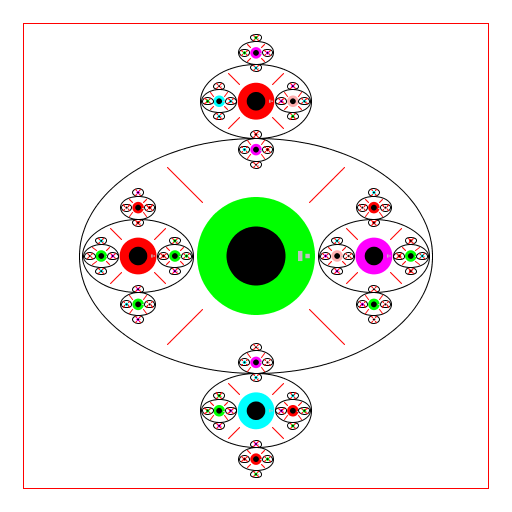
| 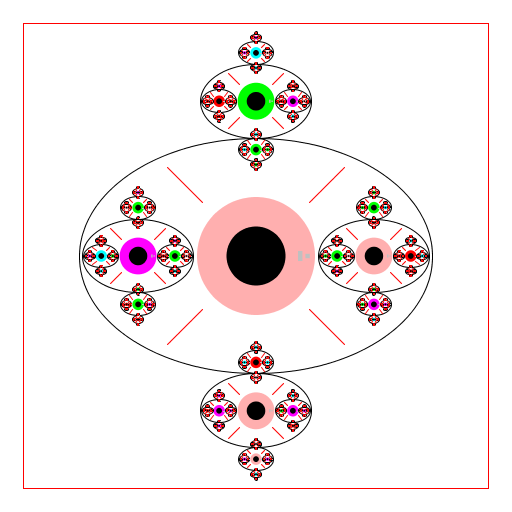
| 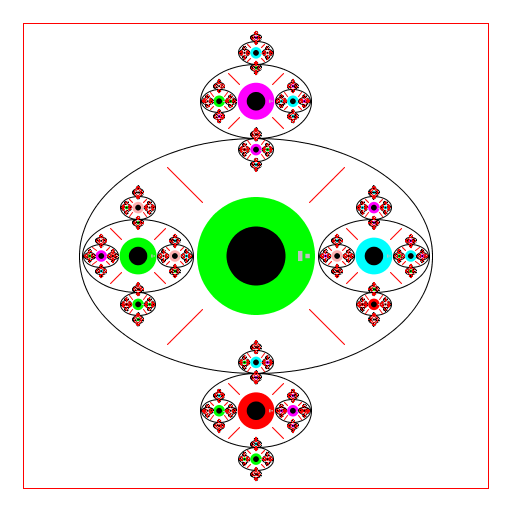
|
Essaidi Meryem
My recursive Art creation draws a black branch that looks like wheat
in the middle of white snow to reflect the image. I wanted to create
something simple and beautiful although the program was quite hard and
time comsuming. The background image is a snow wallpaper that I found
on
this
website.
|
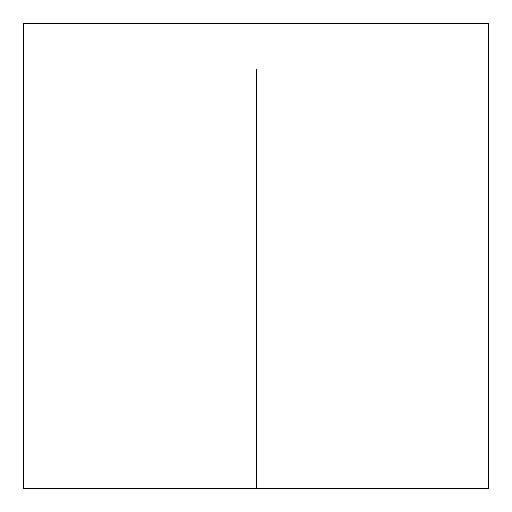
| 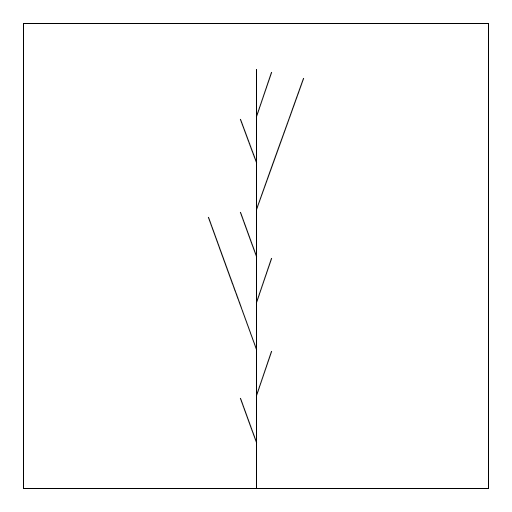
| 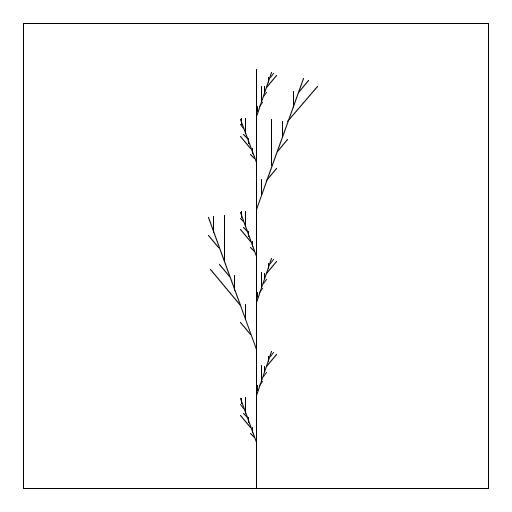
| 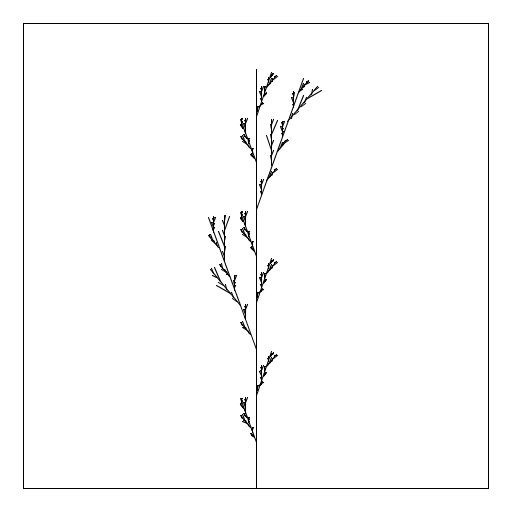
| 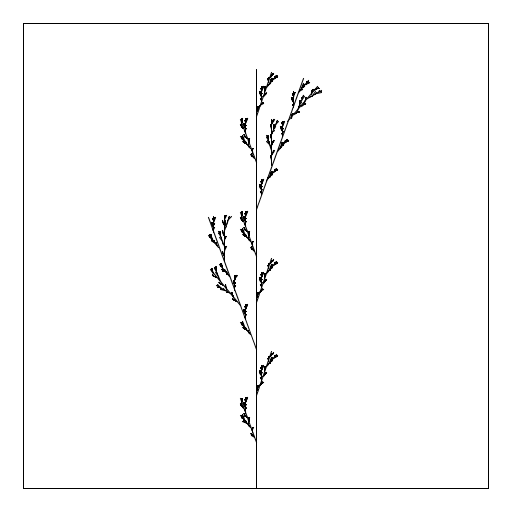
| 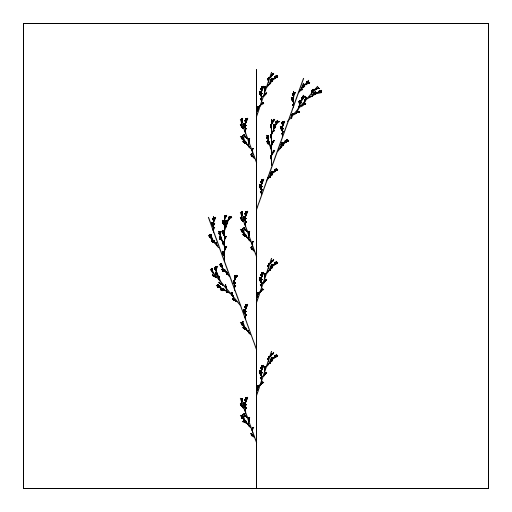
|
Hannah Brown
My artistic creation is a Medusa head, whose snake-hair thickens as
the command-line argument integer increases. It uses two functions:
one to draw a smaller, entertwinded snake image on each snake image,
and a recursive funtion to plot the 5 base snakes and then call itself
recursively to plot smaller ones on top of those. The compound effect
of the two functions is to create an increasingly intricate net of
snake-hair on Medusa's head. The background is a painting by
Caravaggio, and can be
found here.
The snake image is
from here.
|
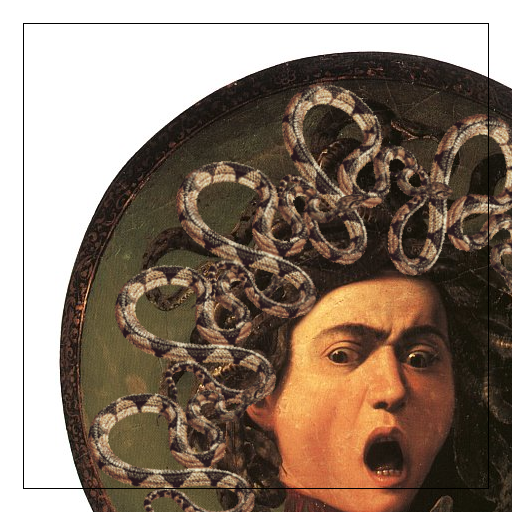
| 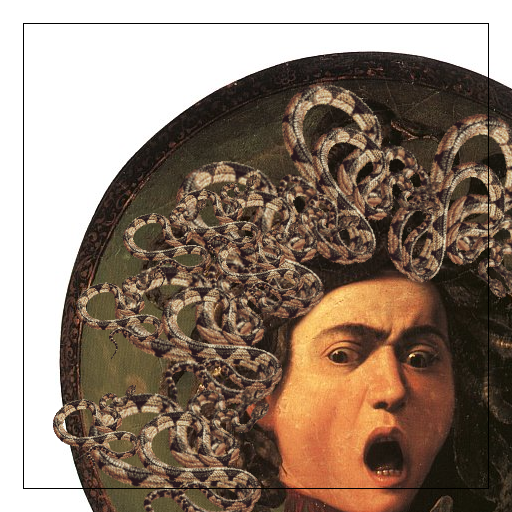
| 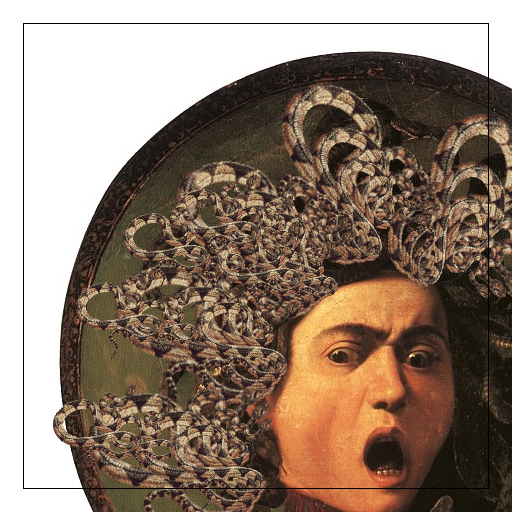
| 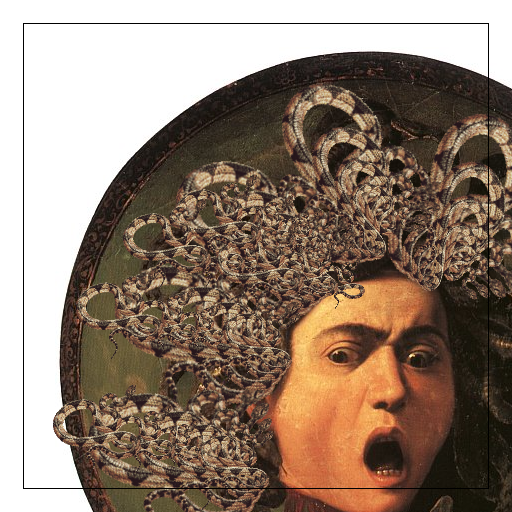
| 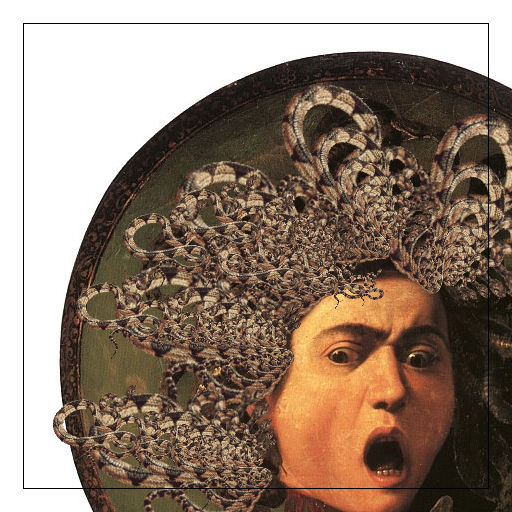
| 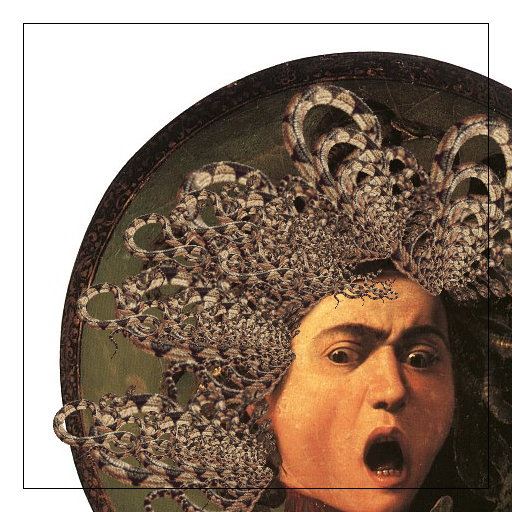
|
Jeff Kessler
As a transportation buff (and former intern for Amtrak), I decided to
create track diagrams similar to those used in CETC (Centralized
Electronic Train Control). I decided to use random numbers to
determine the color (which could reflect either the speed restriction,
power load, or track status) and the next step (either a straight
track, station, or spur branch. Each spur would be recursive in doing
a similar branch.
|

| 
| 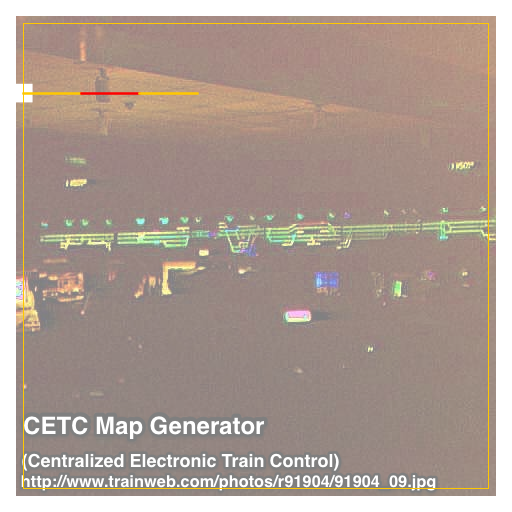
| 
| 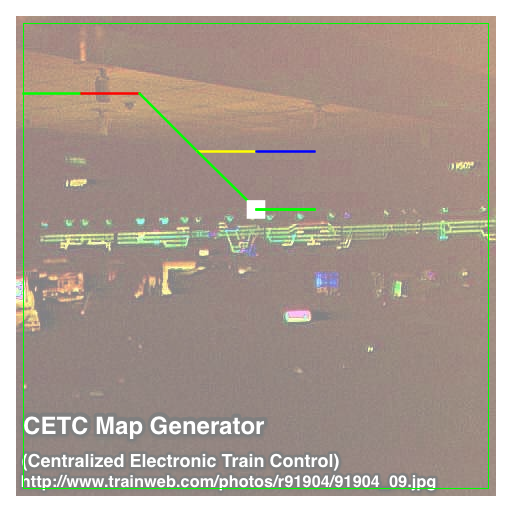
| 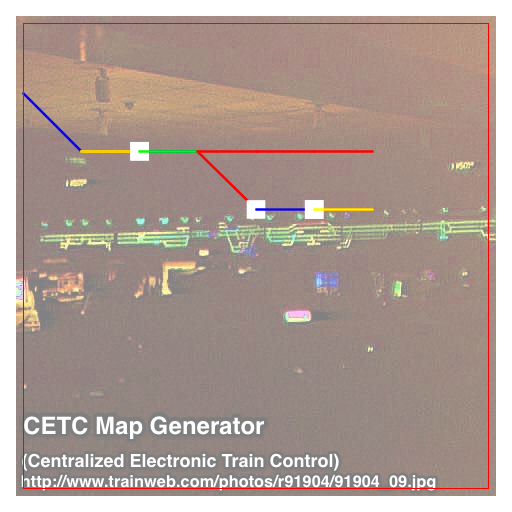
|
Kabir Kapoor
My artistic creation depicts the branching of an artery into sub
arteries to distribute oxygenated blood to all body cells from the
heart. An artery is thick, hence it is difficult for it to reach
smaller cells within the body. By branching off into samller and
consequently smaller sub-arteries they can reach all cells within the
body. My image tries to depict this branching-off.
|
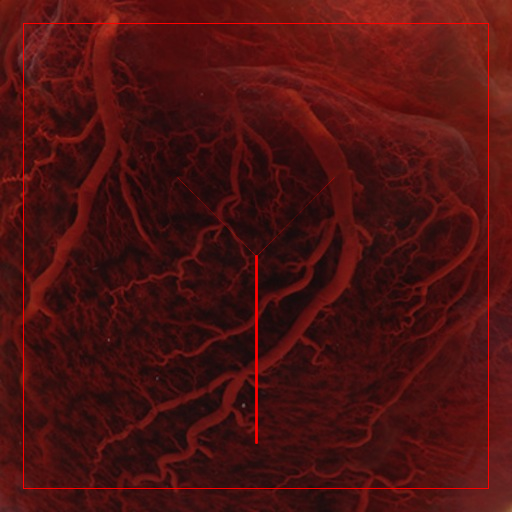
| 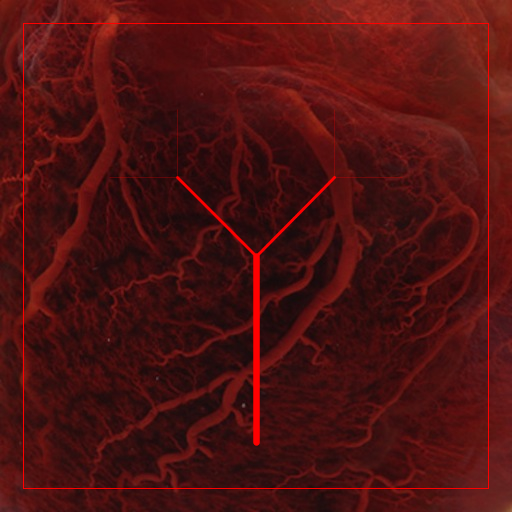
| 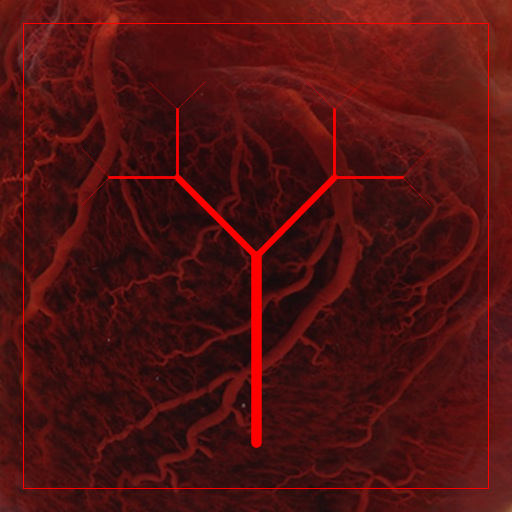
| 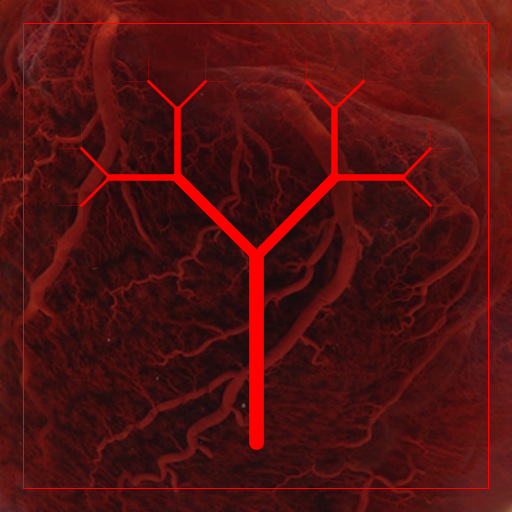
| 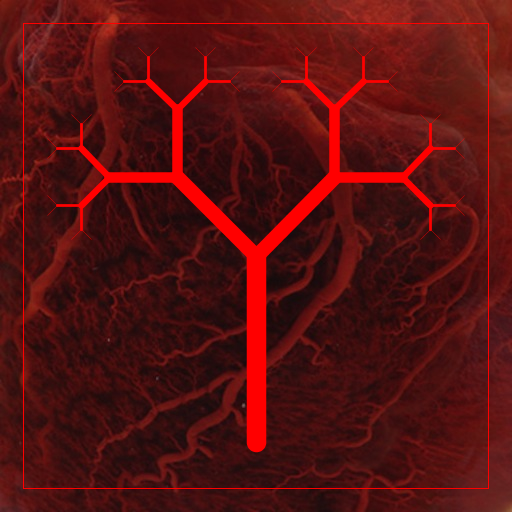
| 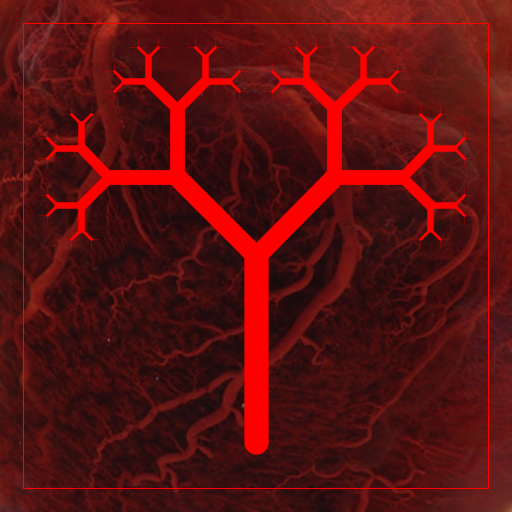
|
Ji Hyun Kong
Curve stitch patterns always fascinated me. I made curve shapes out of
multiple straight lines of changing slopes. Then I used recursion to
make it more intricate and interesting.
|
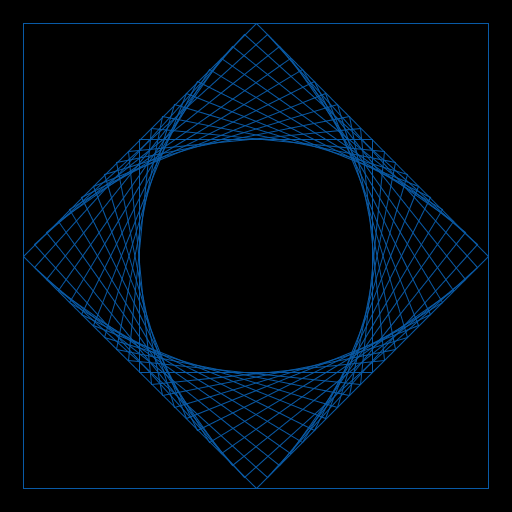
| 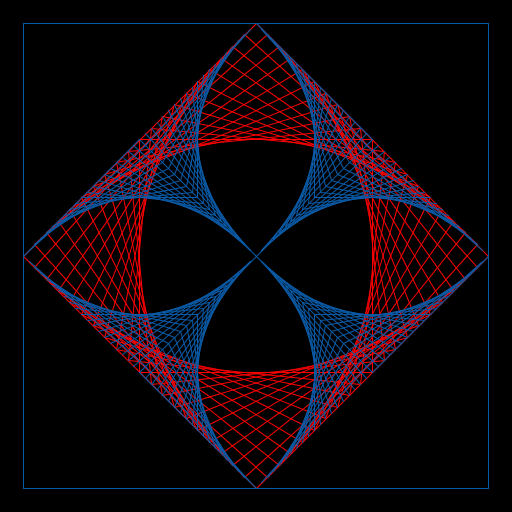
| 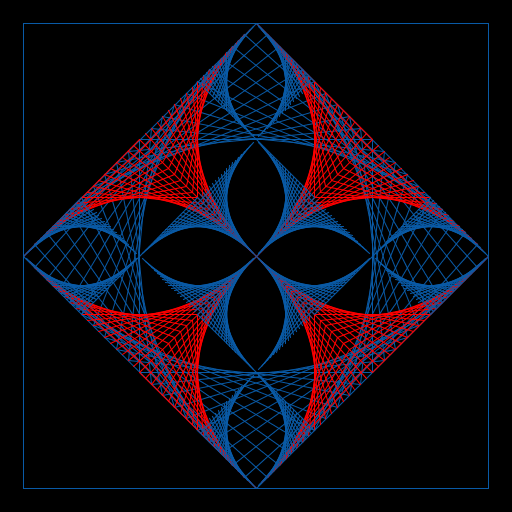
| 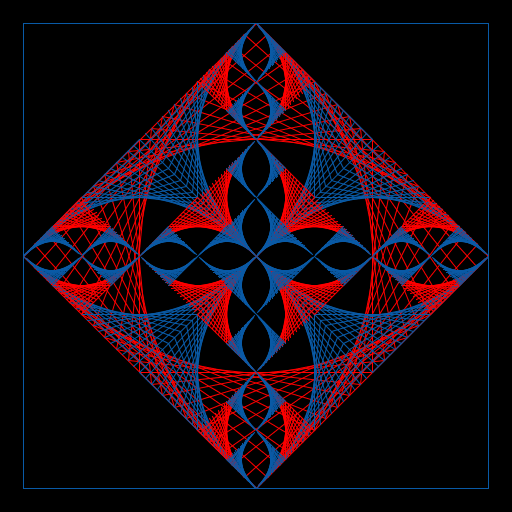
| 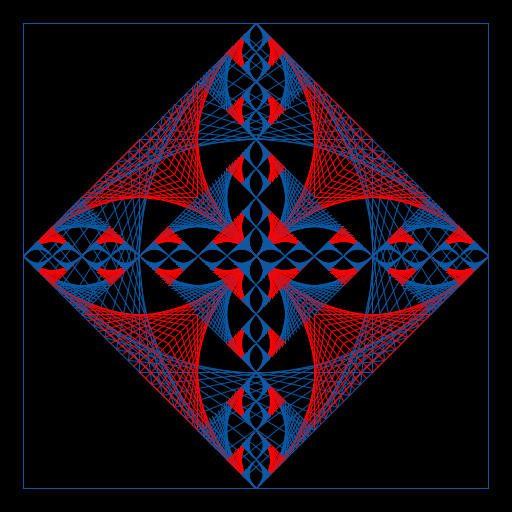
| 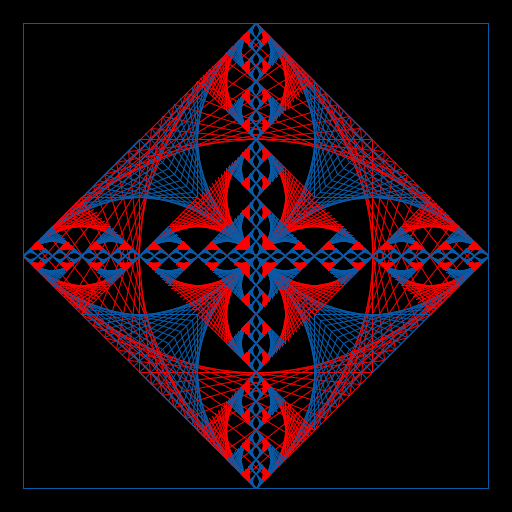
|
Matthew Rosenthal
I created a variation on the fractal tree by using a picture of Alien
(from the movie by Ridley Scott) and using the tongue to fan out in a
tree with 3N tongues at each iteration of N.
|
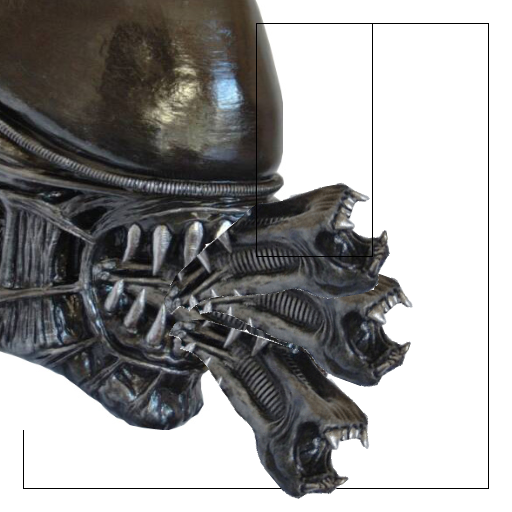
| 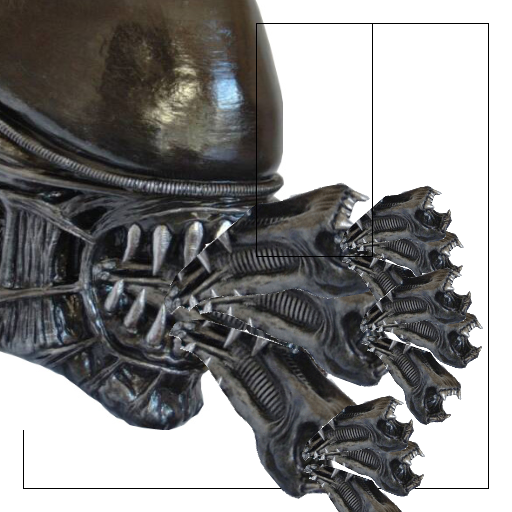
| 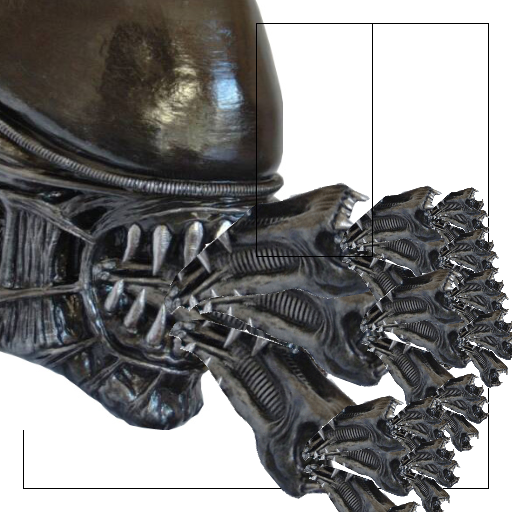
| 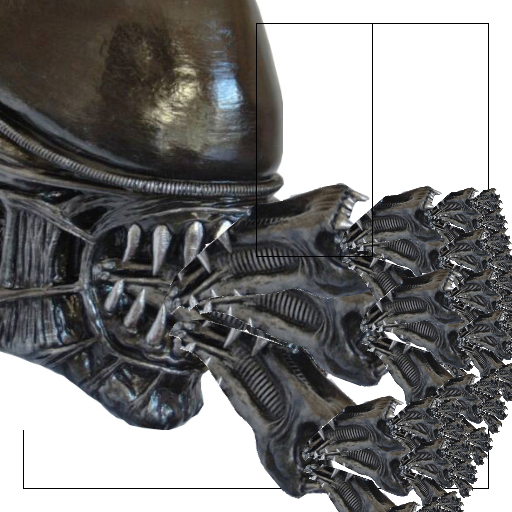
| 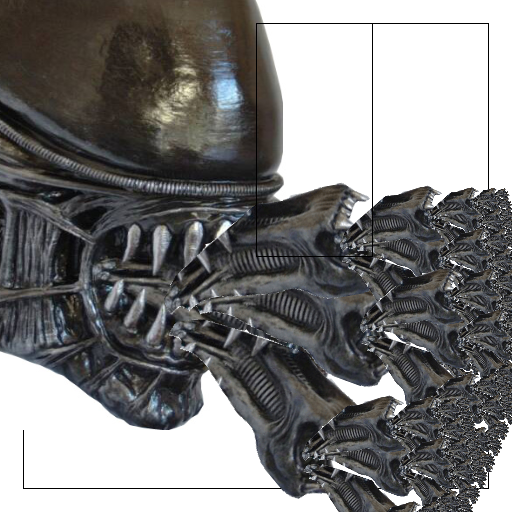
| 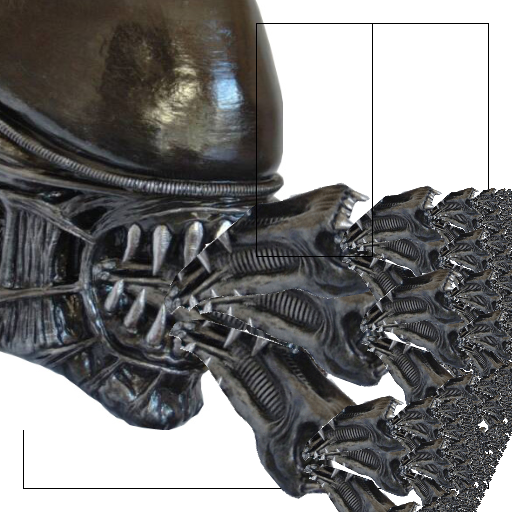
|
Mitch Gissinger
My artistic creation is pattern of cacti plants growing in a desert.
|
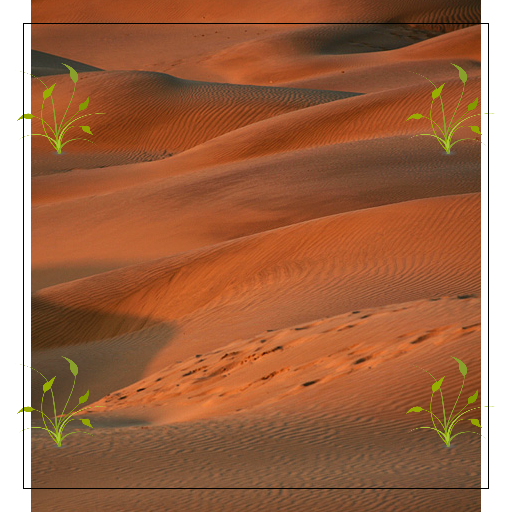
| 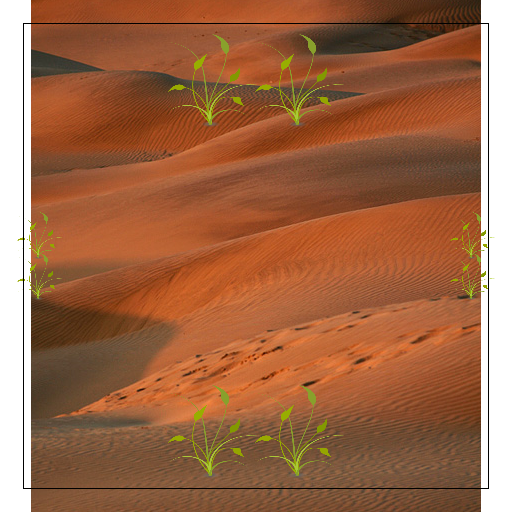
| 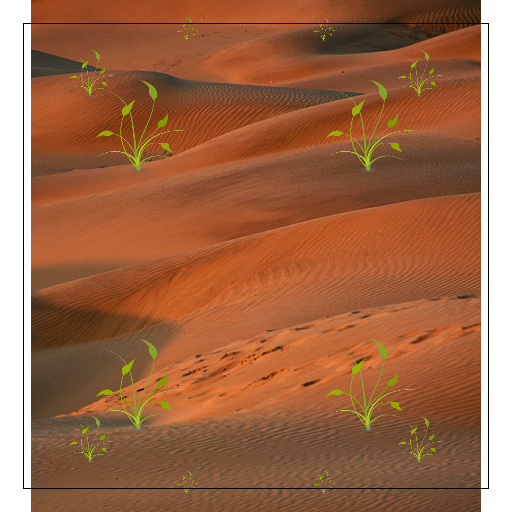
| 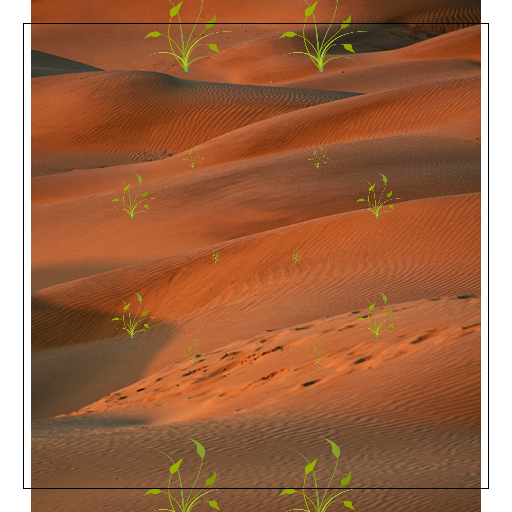
| 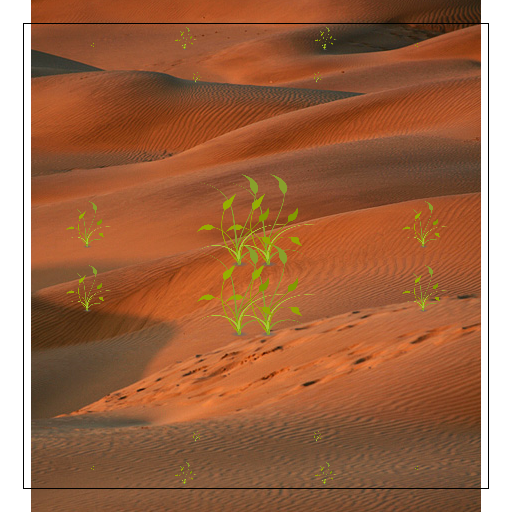
| 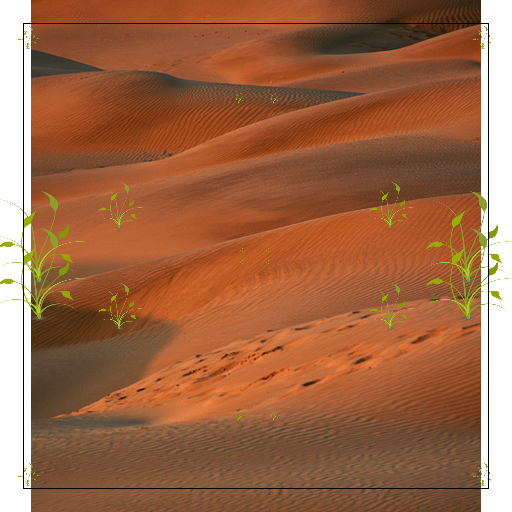
|
Michael Molisani
The program redraws the square smaller, and slightly rotated. The
triangles that are formed from this are then cut up in a similar
manner to Sierpinski but then distorted. Using different parameters,
this can result in very complex outcomes.
|
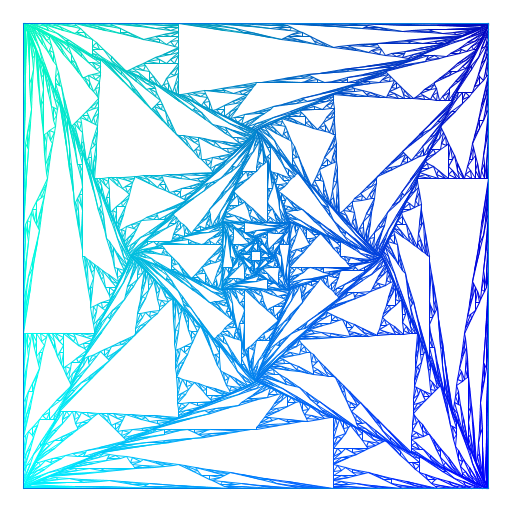
| 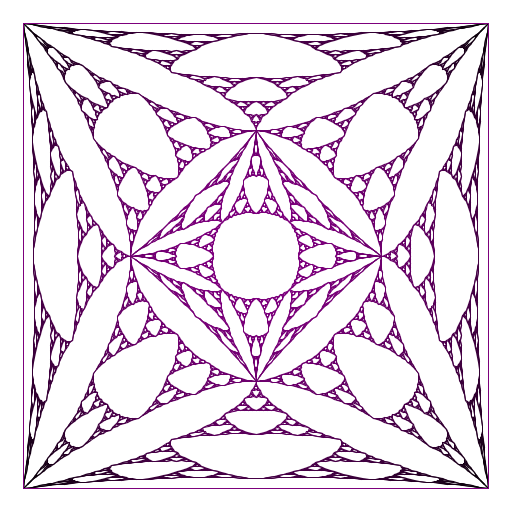
| 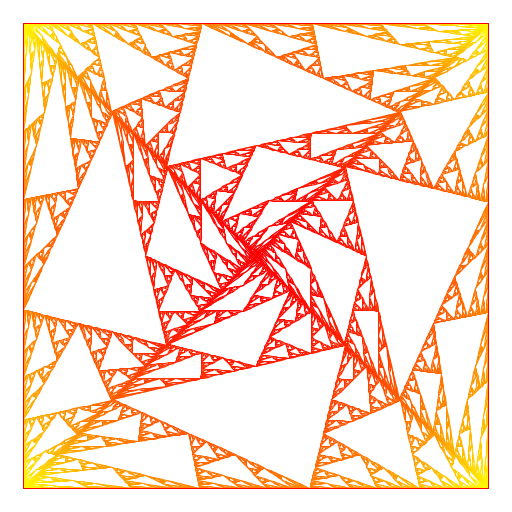
| 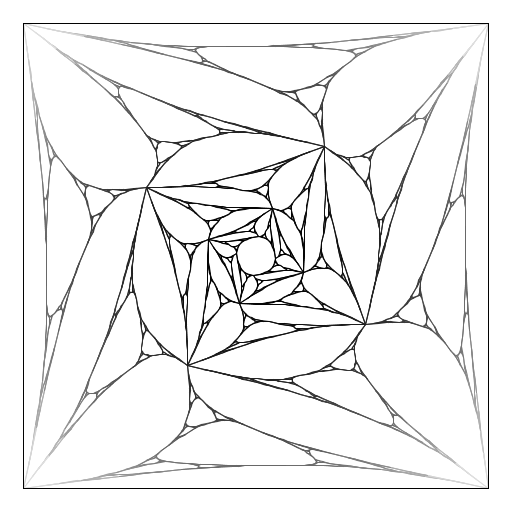
| 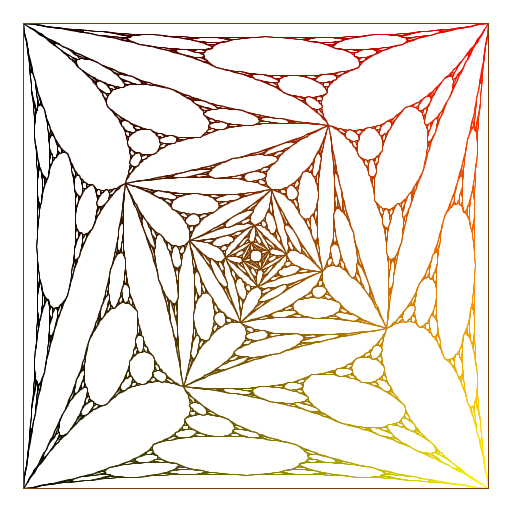
| 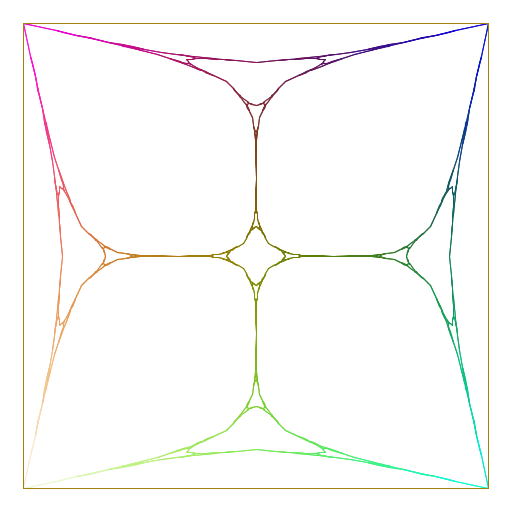
|
Moses Soh
My artistic creation is a combination of two recursive functions to
recursively draw a tree on top of each subdivision of a ruler.
|
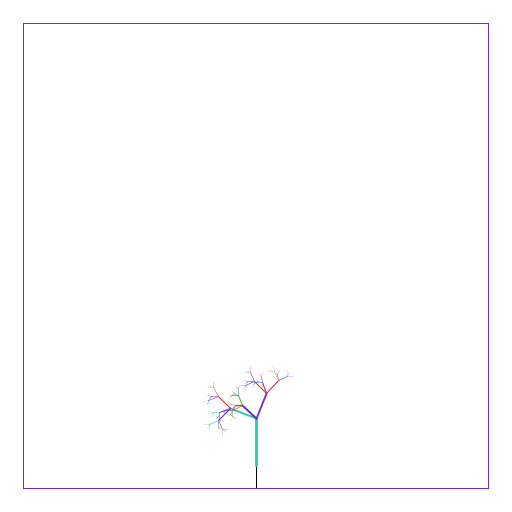
| 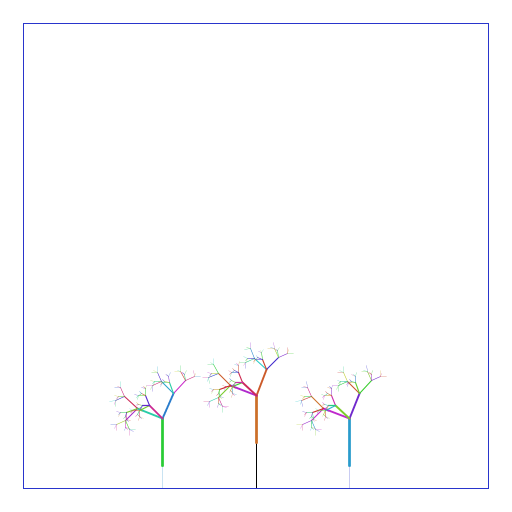
| 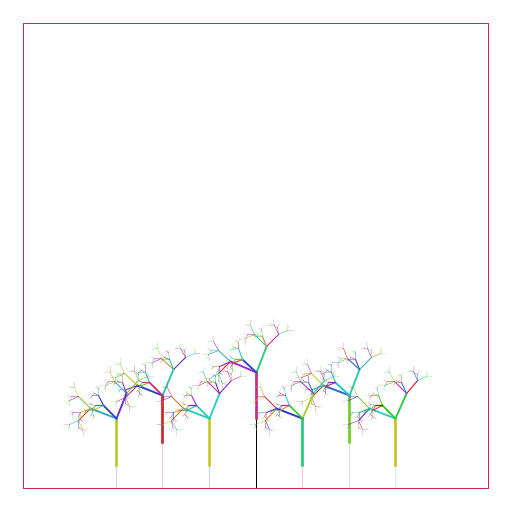
| 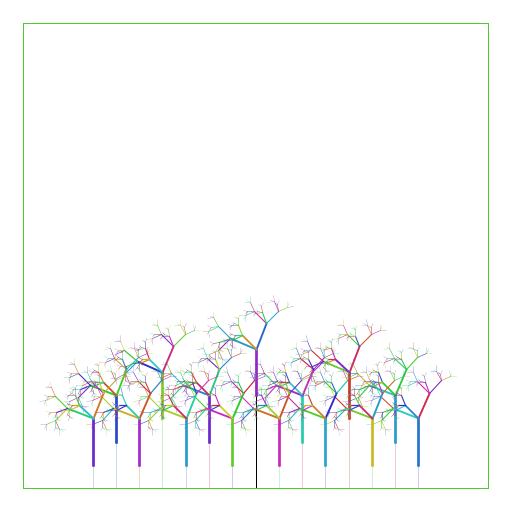
| 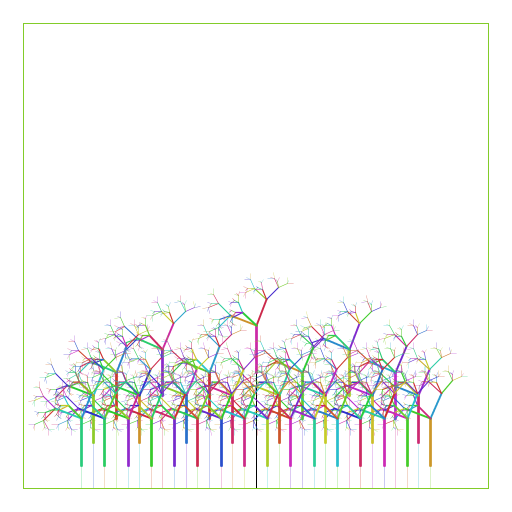
| 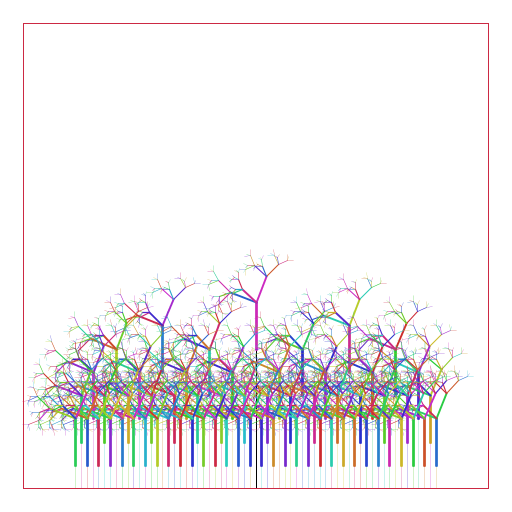
|
Parth Patel
Reenacts Newton's classic realization of gravity with fractals! The
program takes an integer argument N to choose the levels of recursion
desired to ecreate a fractal tree. But there's a twist. Sir Isaac
Newton stands below waiting for randomly generated apples to fall upon
his head.
|
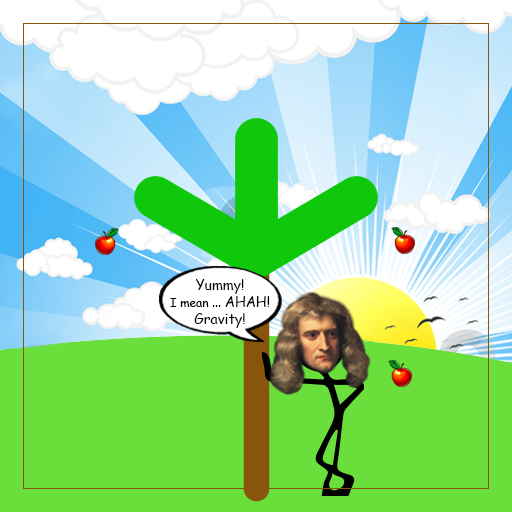
| 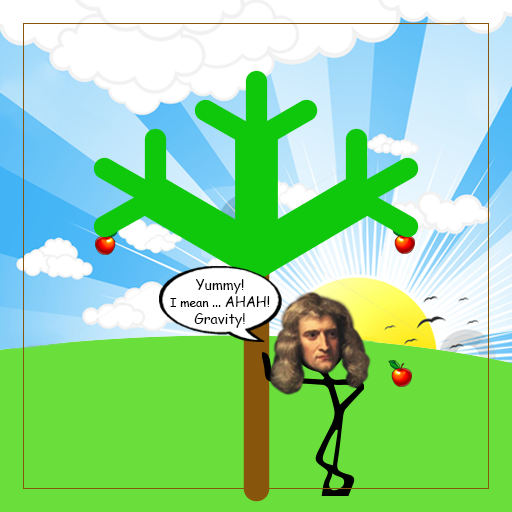
| 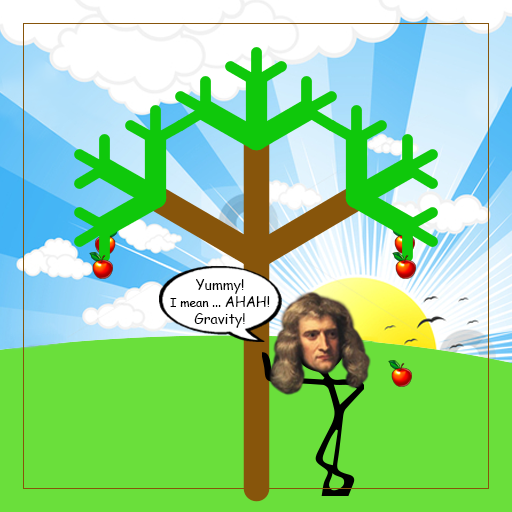
| 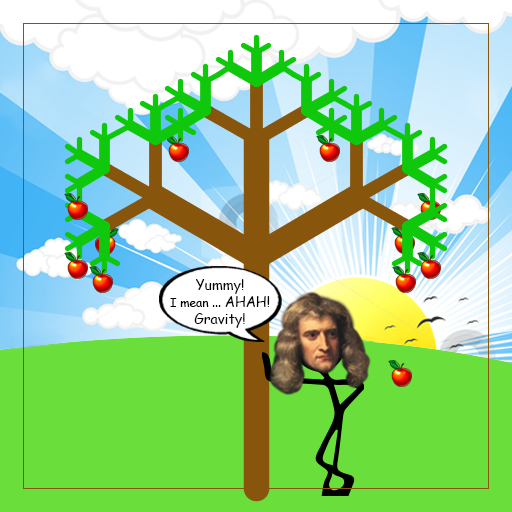
| 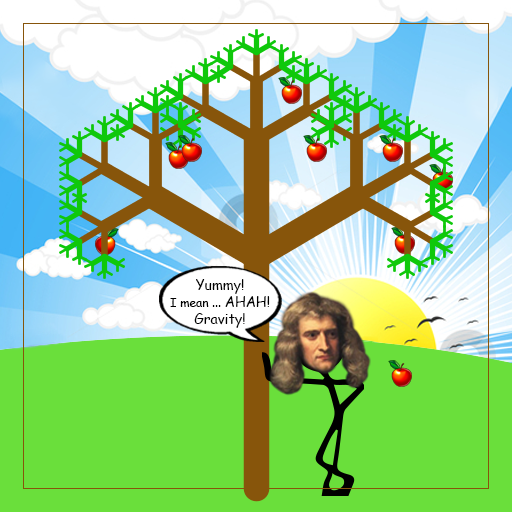
| 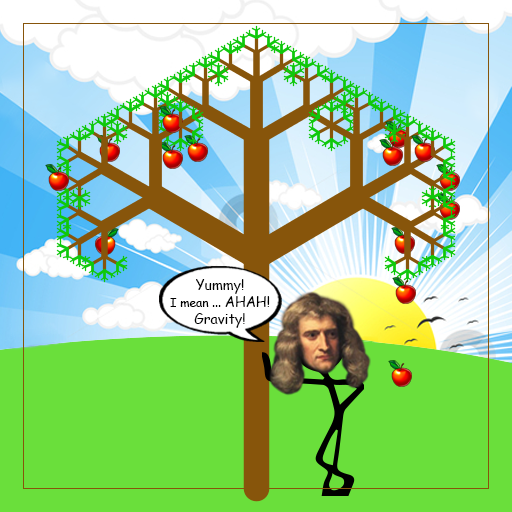
|
Sam Passaglia
My artistic creation is a generation of a fractal pattern (based on
the edges of a square) which is purposefully made to look as though it
were made by hand in the style of quilting. I experimented with
several different recursive patterns until I got something I felt was
original and interesting.
|

| 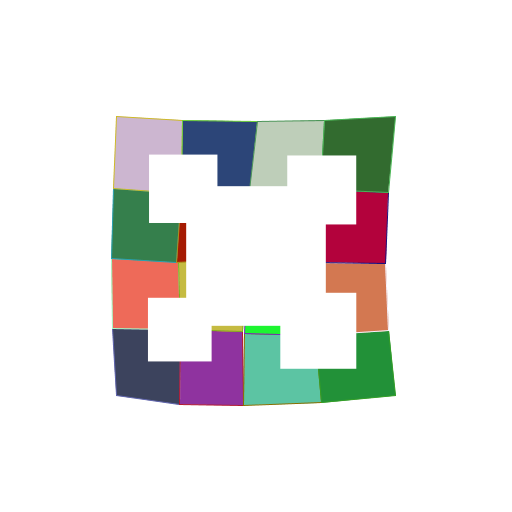
| 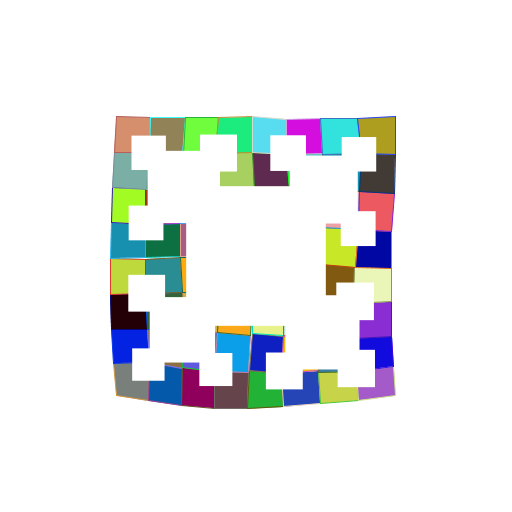
| 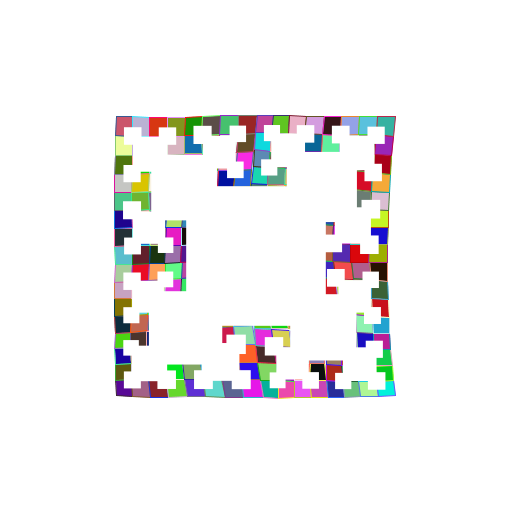
| 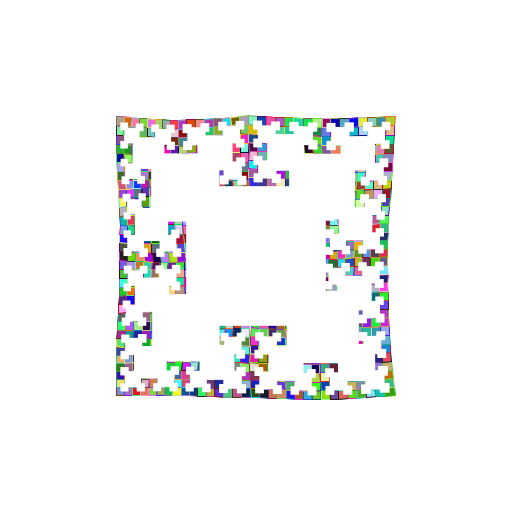
| 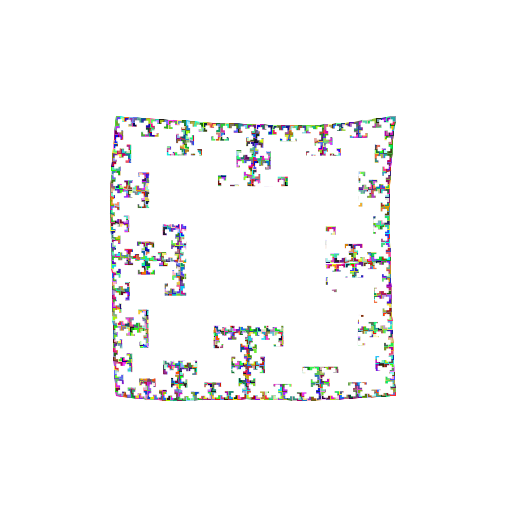
|
Ethan Ross
I wanted to make something that used a randomly generated color and
noticed that the fan like structure of the tree examples could be made
to look like feathers on a peacock
|
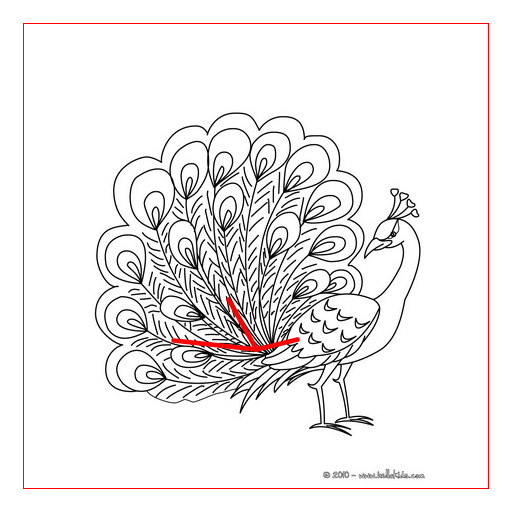
| 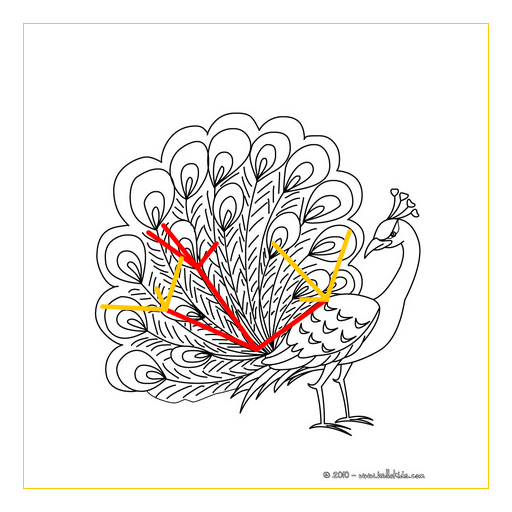
| 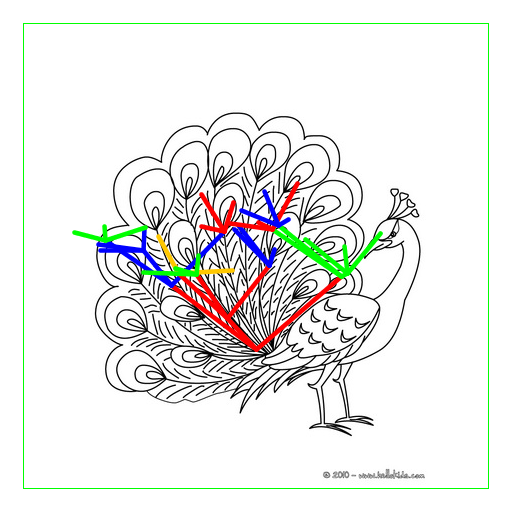
| 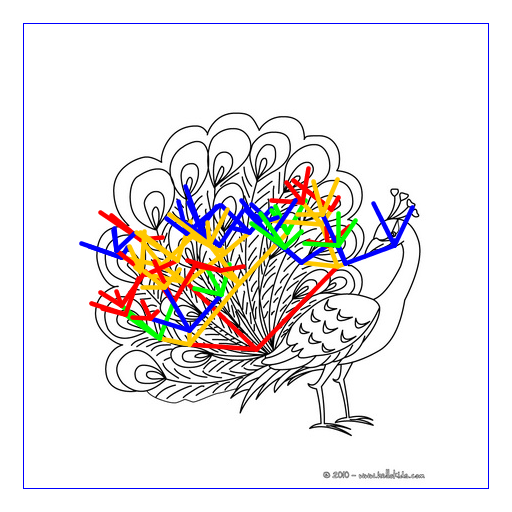
| 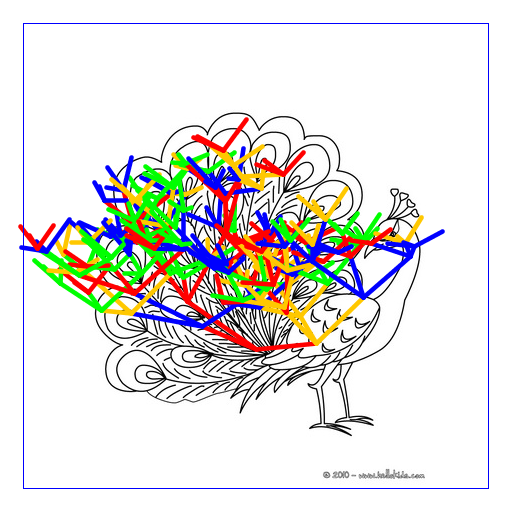
| 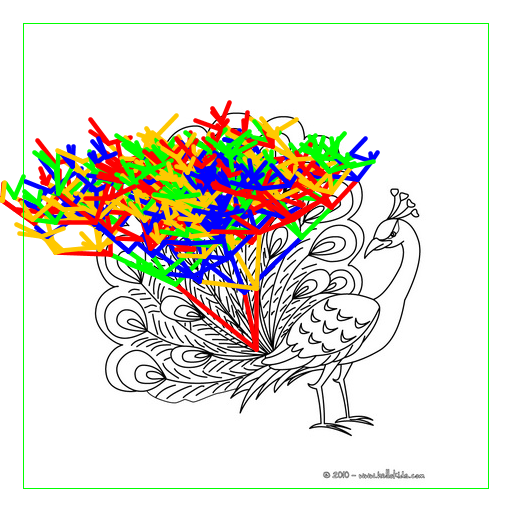
|
Sally Luo
My artistic creation is a flower where the petals are made of
recursing hexagons. I used the center of the hexagon as a reference
point to create each new recursion step.
|
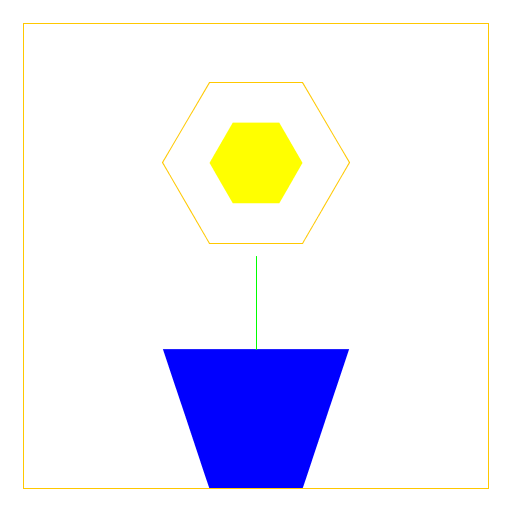
| 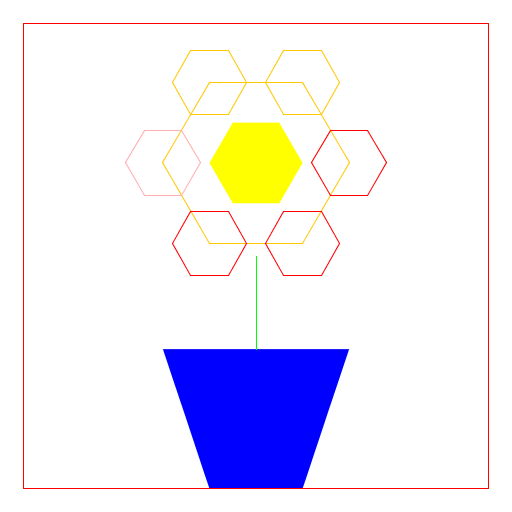
| 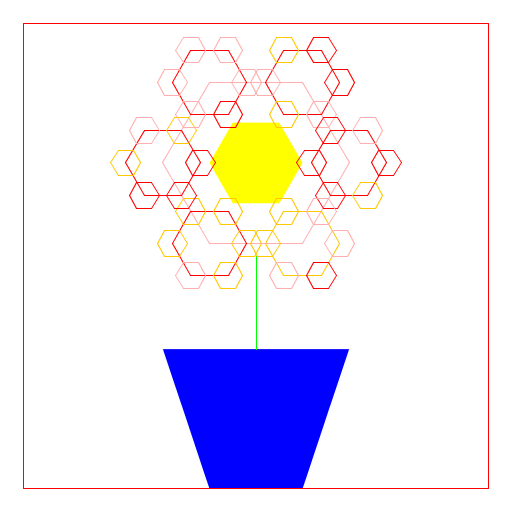
| 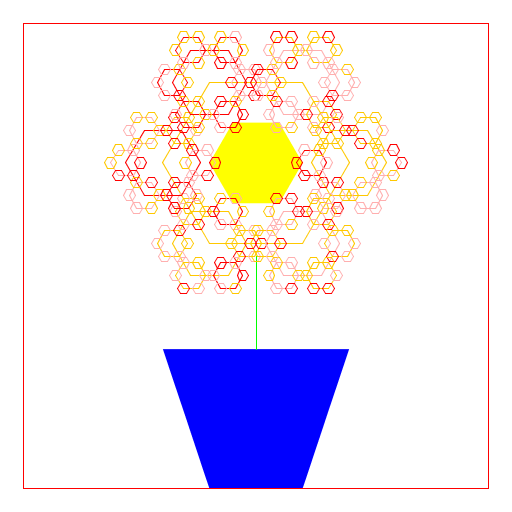
| 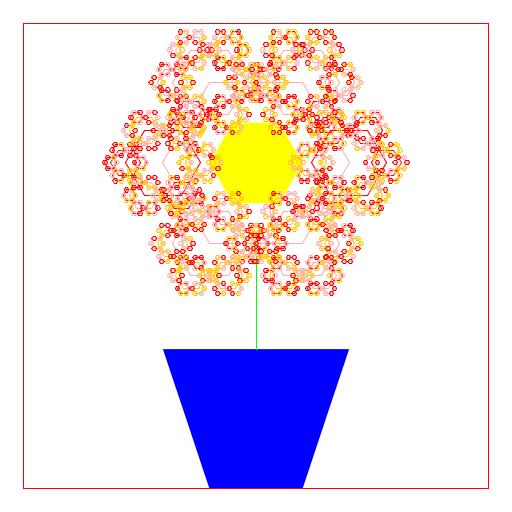
| 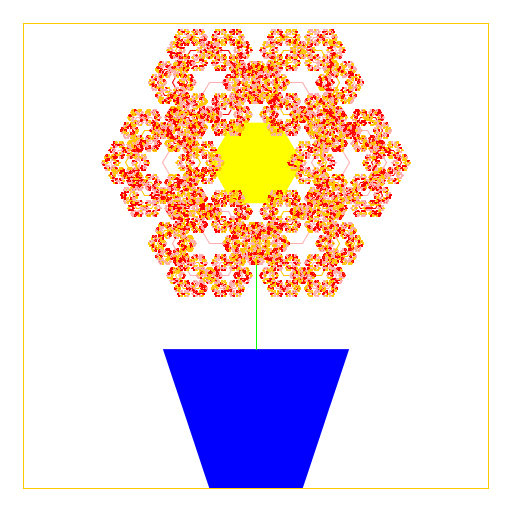
|
Samantha Markowitz
My artistic creation is the house from the movie UP. As the command
argument N increases by 1, more strings and another row of balloons
are added to the top of the house. The colors of the balloons are
randomly generated. The image of the house was taken from google with
the real balloons erased.
|
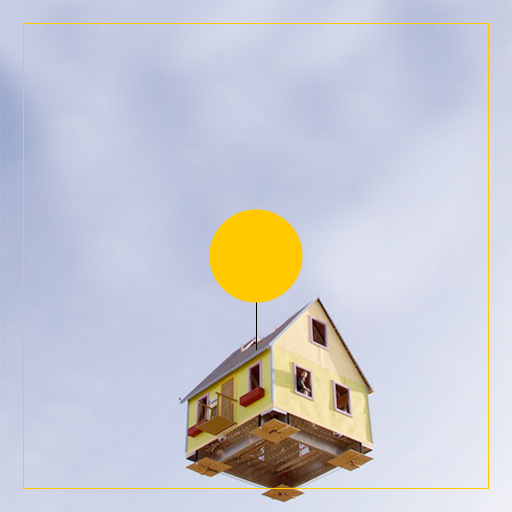
| 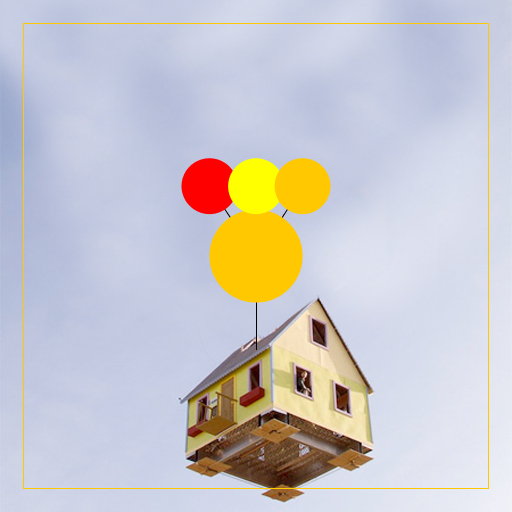
| 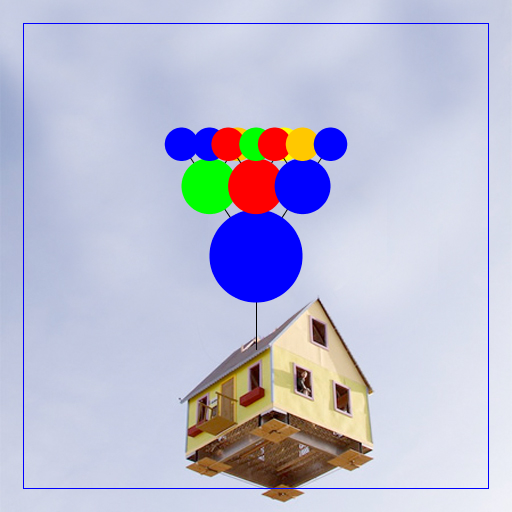
| 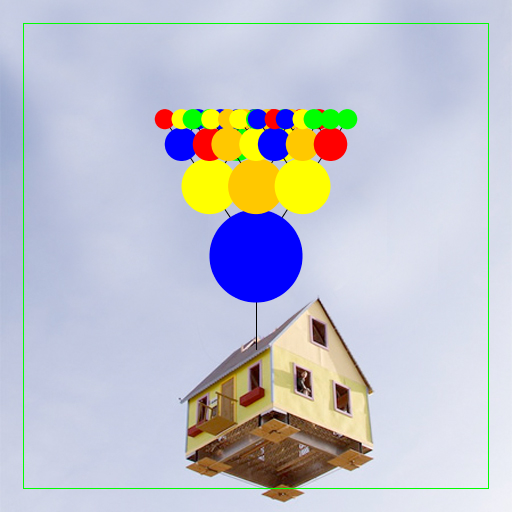
| 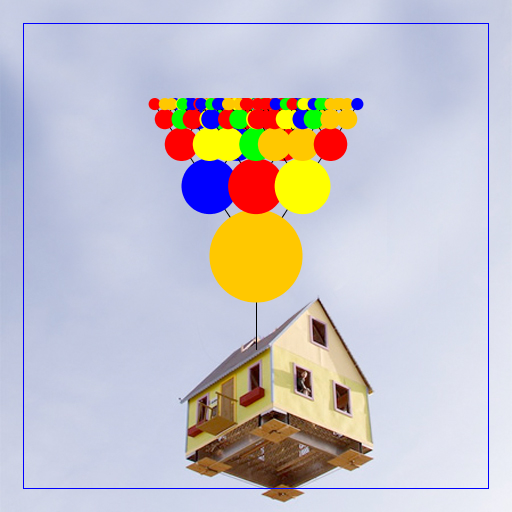
| 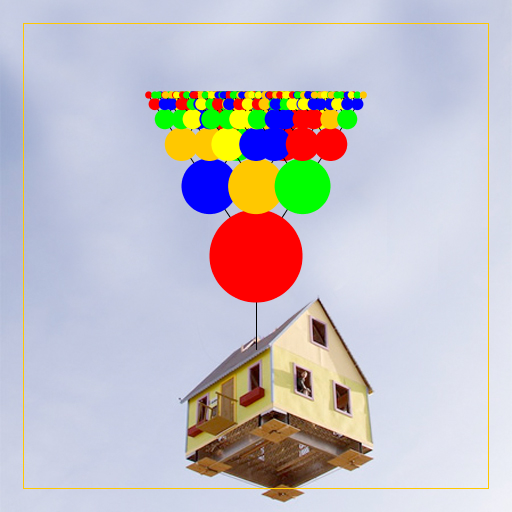
|
Simran Ahluwalia
My Art program takes the given image of a straight brain coral and
makes a tree out of it. Although it is a tree pattern, it is meant to
replicate a coral tree that one can sometimes find in a barrier reef
(hence the background).
|
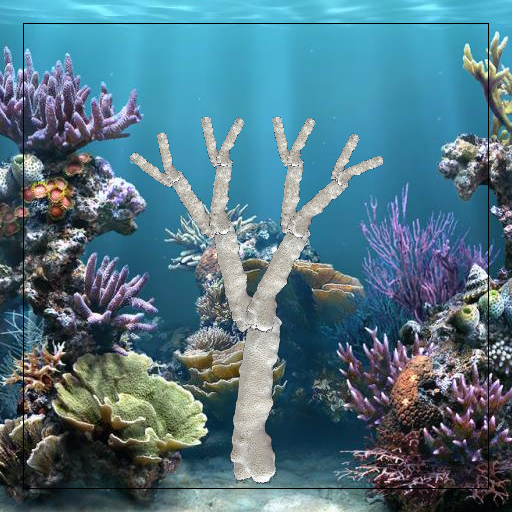
| 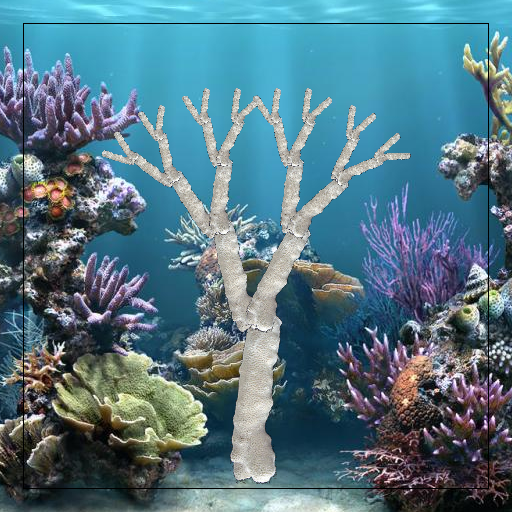
| 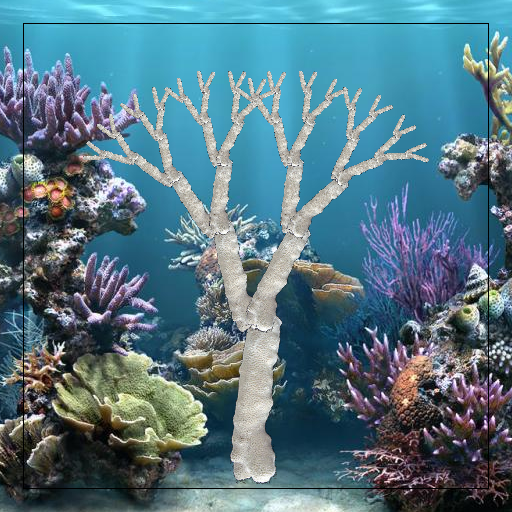
| 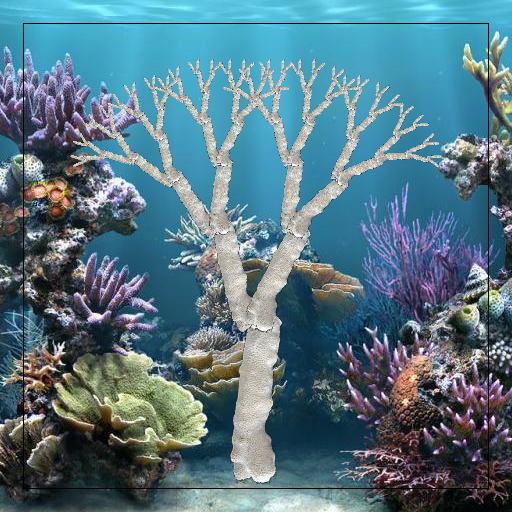
| 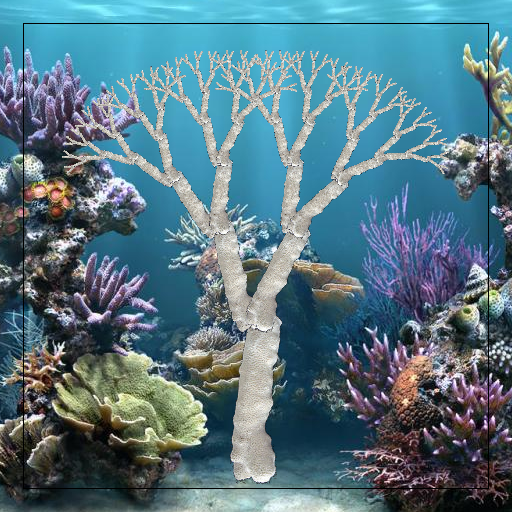
| 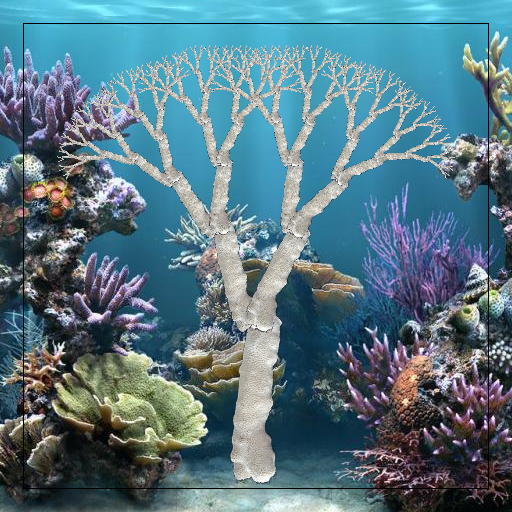
|
Aaron Wilson
I thought of the idea of creating a chandelier and realized that it
could be simplified to a three-pronged shape with a "bulb" at the end
of each, which, when repeated would look like a cartoonish fancy
chandelier. I photoshopped the chandelier out of a picture of a dining
room and used that as the background.
|
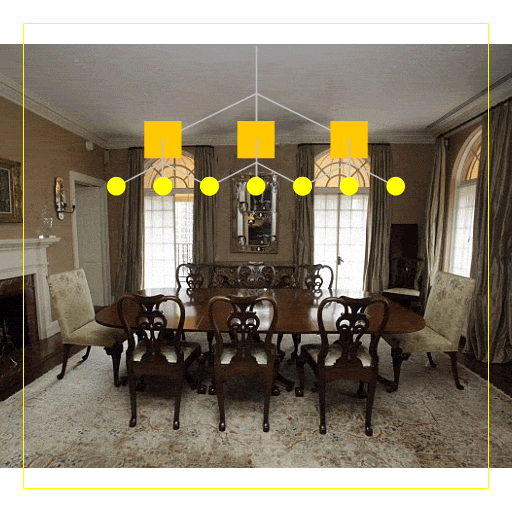
| 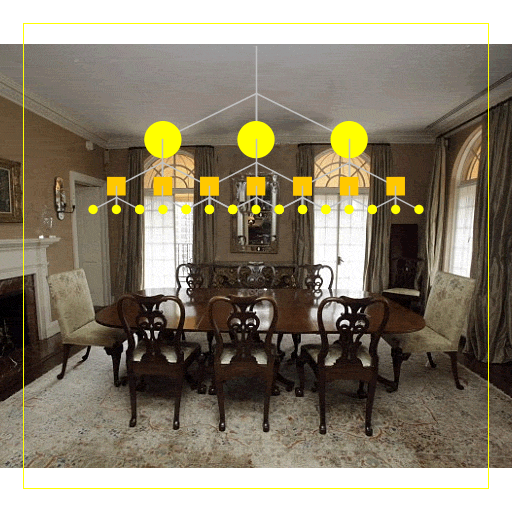
| 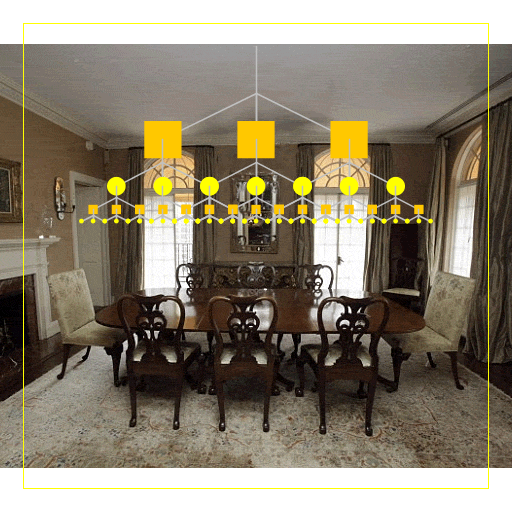
| 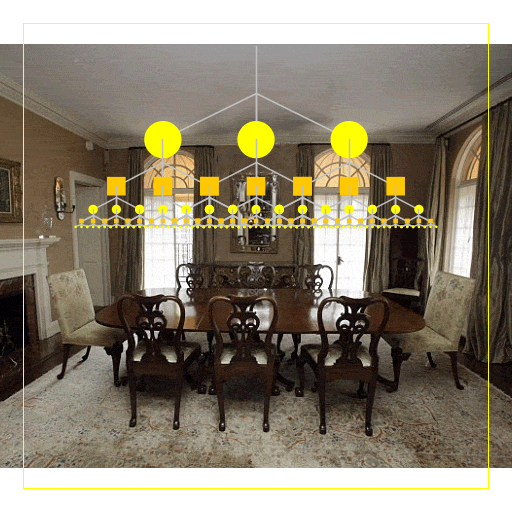
| 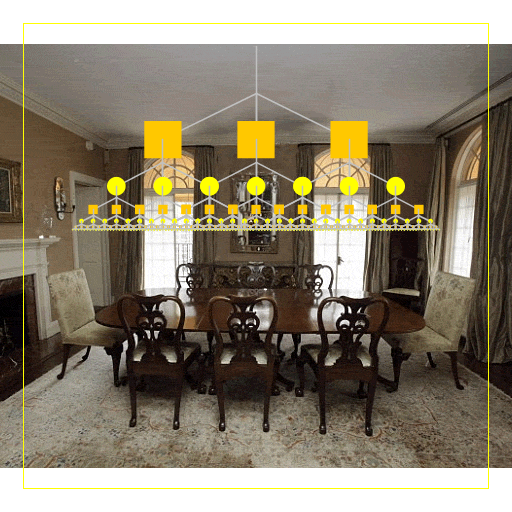
| 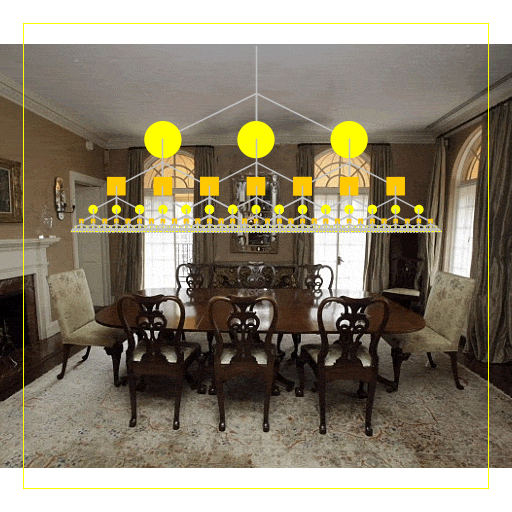
|
Summer 2012
Spring 2012
Etan Aber
My artistic creation is called "We is All One Peoples." It is
intended to show that regardless of a person's size or color, he/she
is con nected to everyone else and not alone. To write the program, I
quickly sketched out the drawing with 2 recursions and just calculated
the relevant sizes and distances.
|
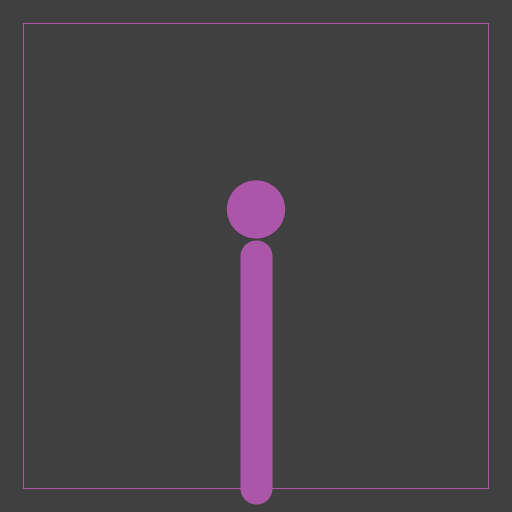 |
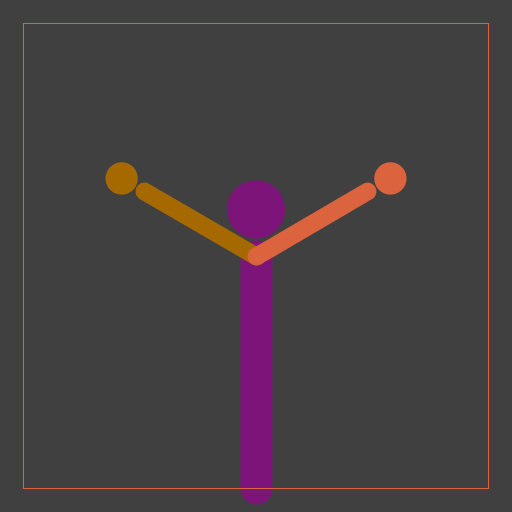 |
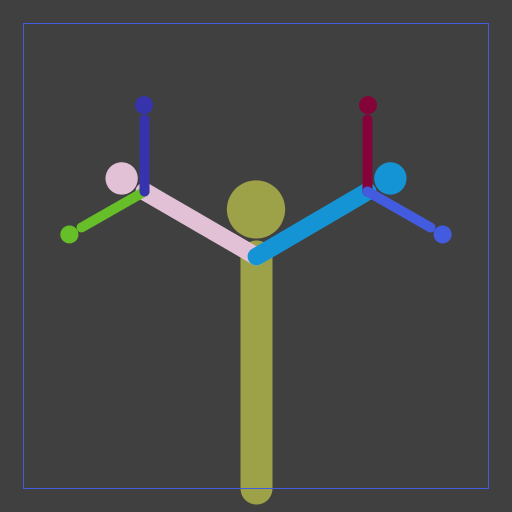 |
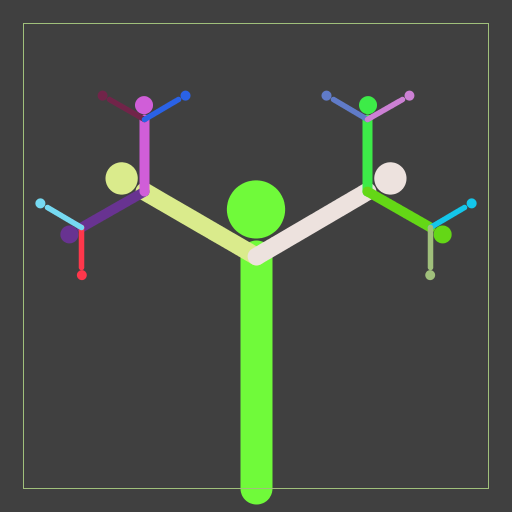 |
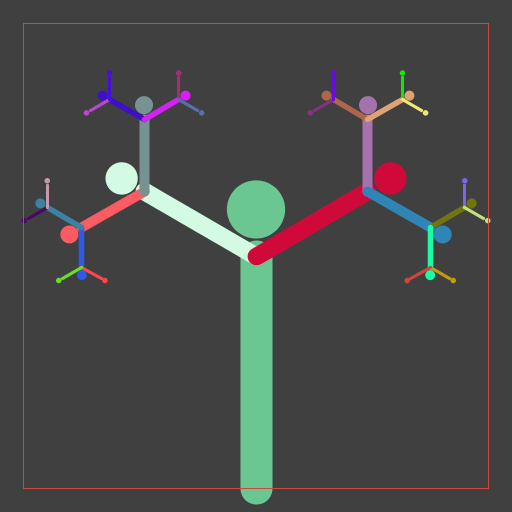 |
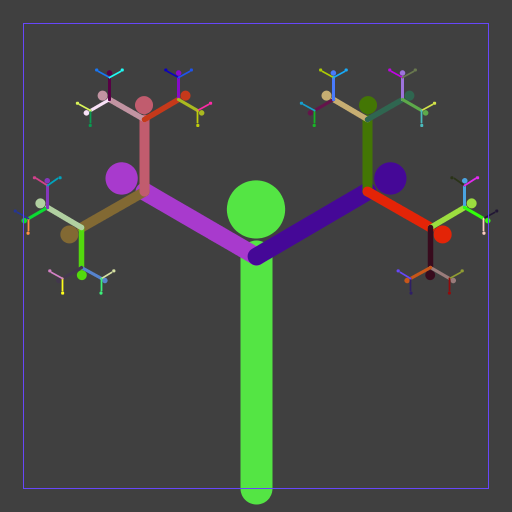 |
Adam Pershan
My recursive art creation generates a ring of circles, of decreasing
legnth around the center of the canvas. For example, at depth 7, there
are seven rings of circles, each with a smaller radius. It was
interesting to implement, and it turns out polar coordinates are the
best way to go about piecing together this program.
|
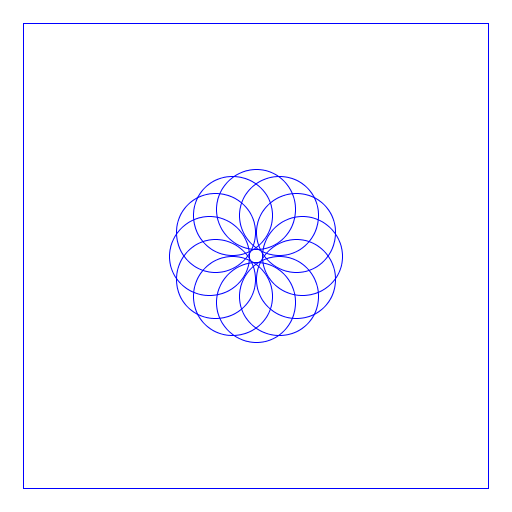 |
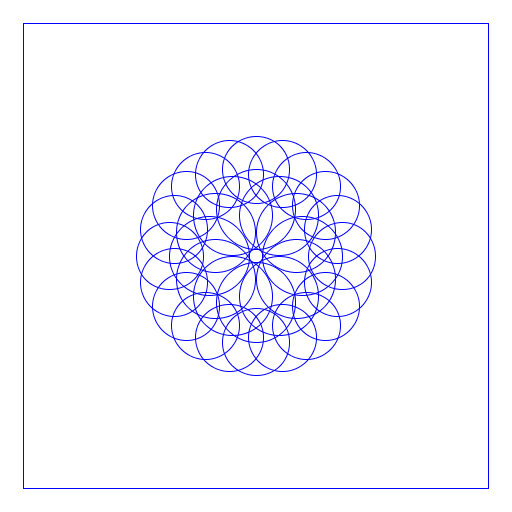 |
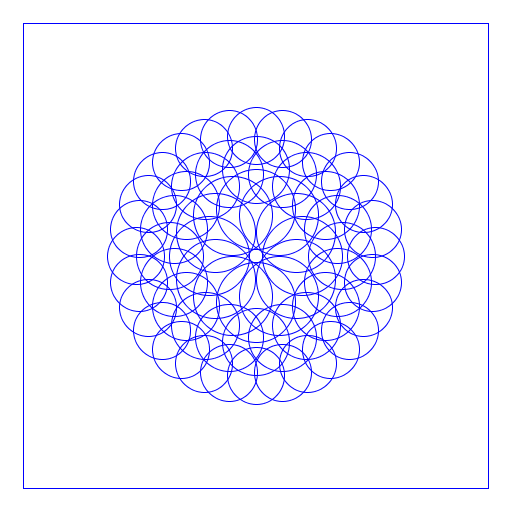 |
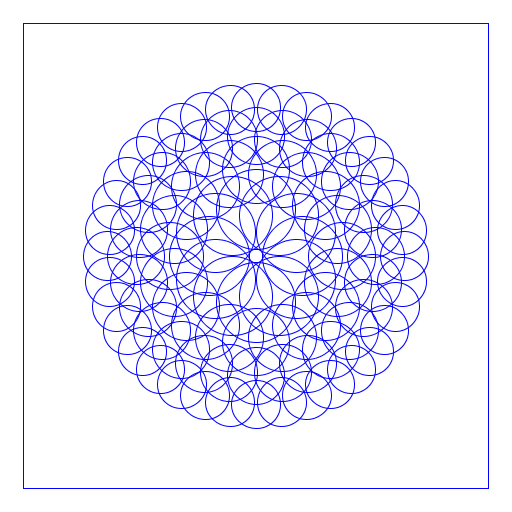 |
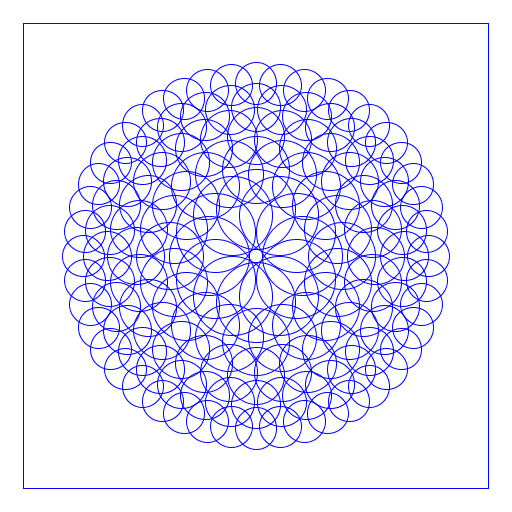 |
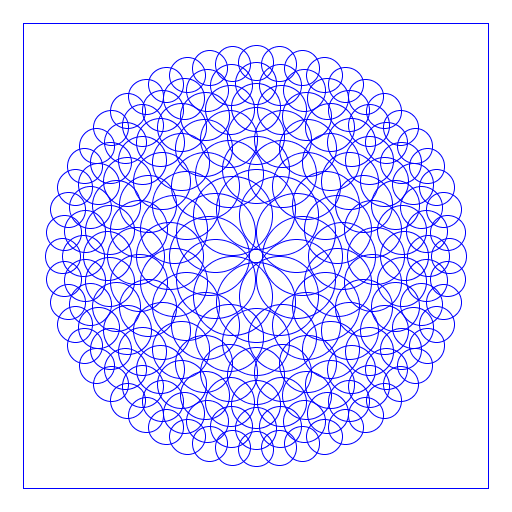 |
Doron Roberts-Kedes
No sources were used other than the picture of [TA] Dan [Zhang]. I
just tried to think of an image that could be created recursively and
found the appropriate movements.
|
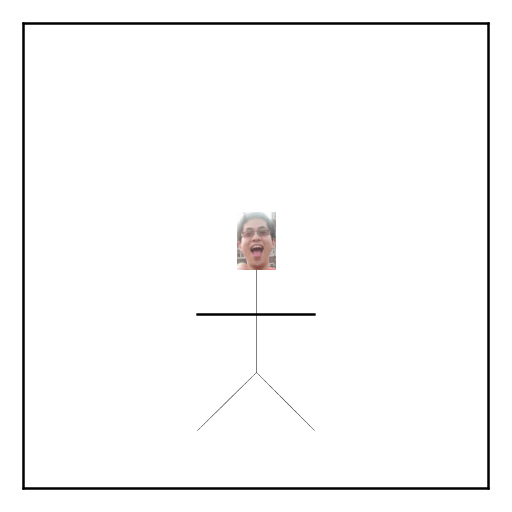 |
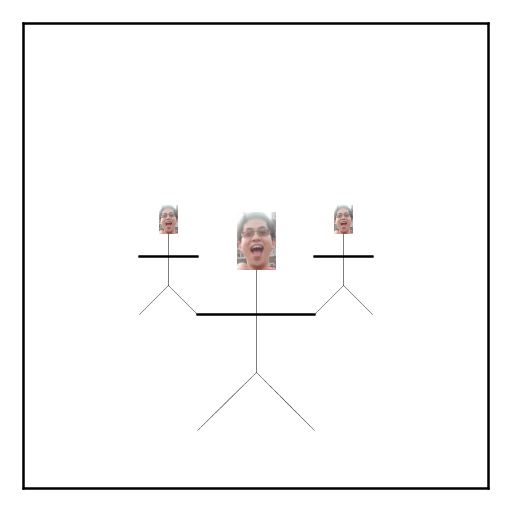 |
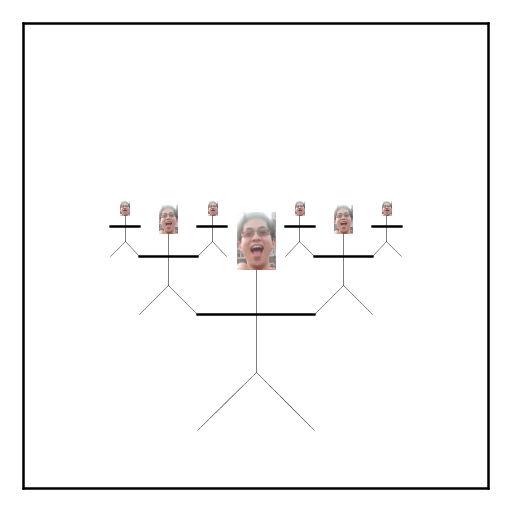 |
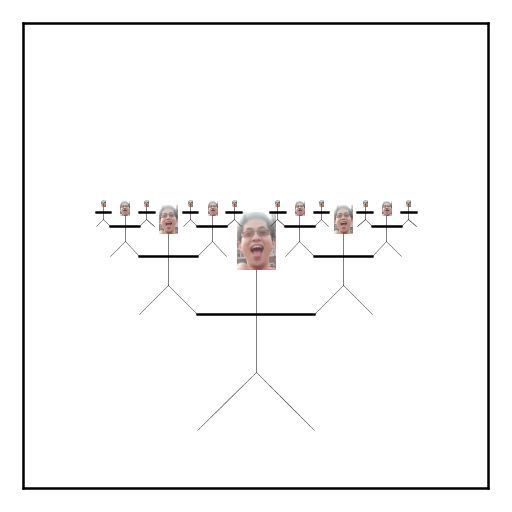 |
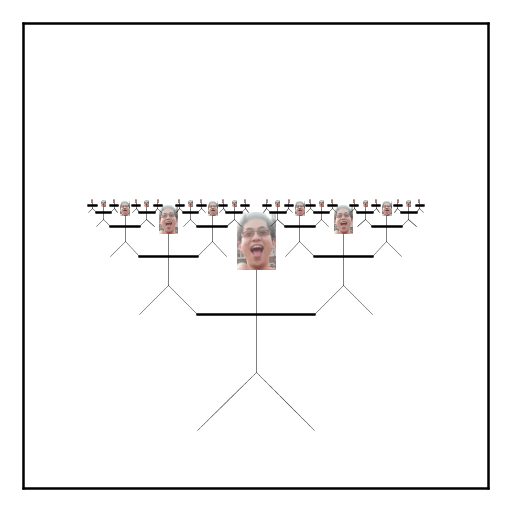 |
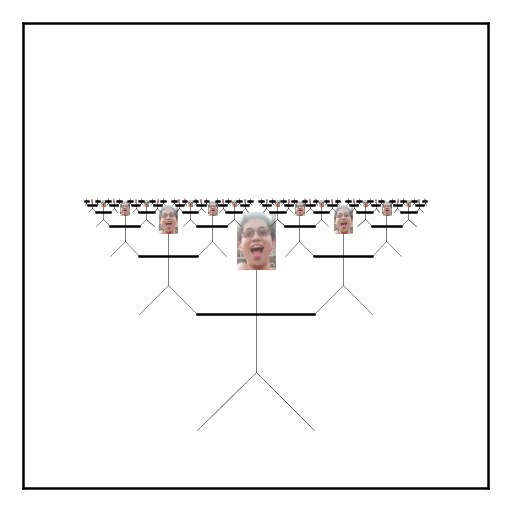 |
David Pankiewicz
I found my fractal among the examples from the Princeton class. there
was a lot of math invovled, and some guessing and checking to get the
feel of how it would look visually. Mostly coordinate plane
implementation.
|
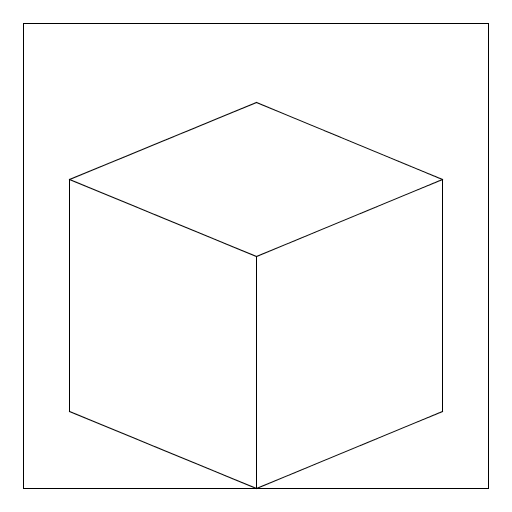 |
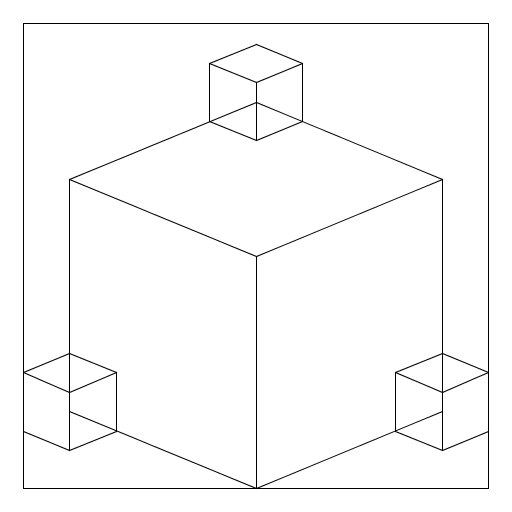 |
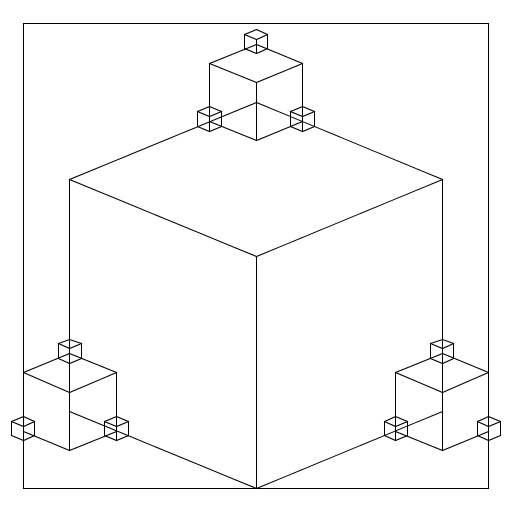 |
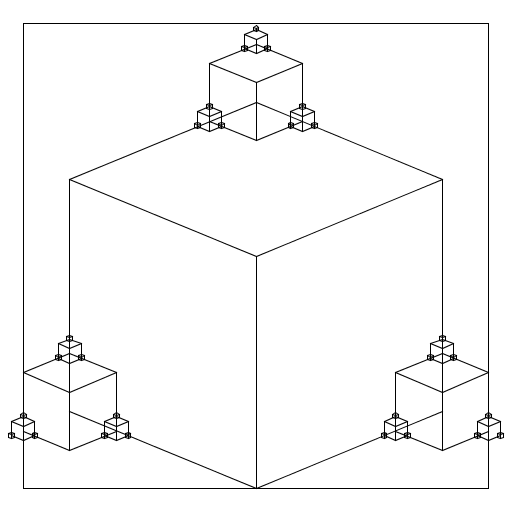 |
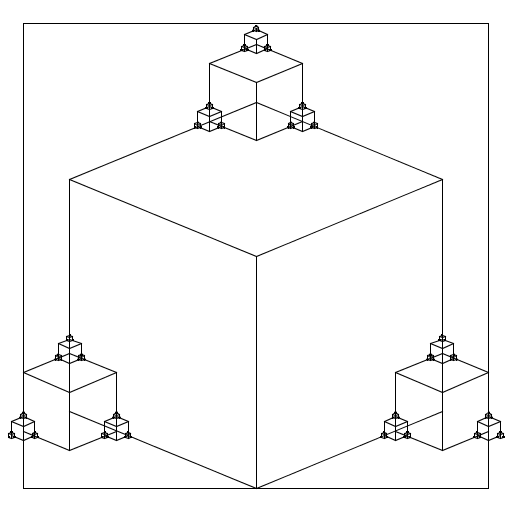 |
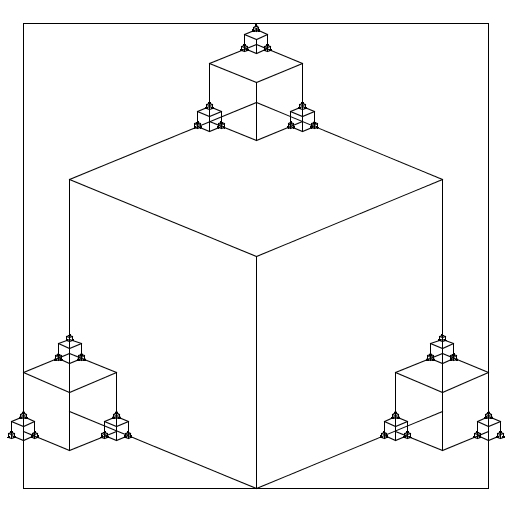 |
Kelly Hanan
I created a tree that is compiled of various smaller leaves. Each
individual leaf has 6 branches. Each of these branches gets 6 new
branches with each recursion to form a large green tree in the end.
|
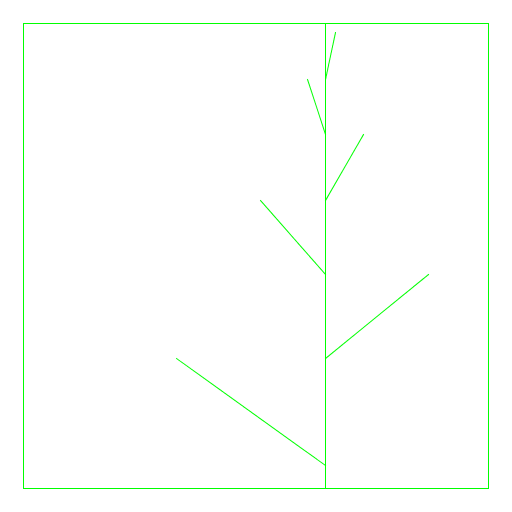 |
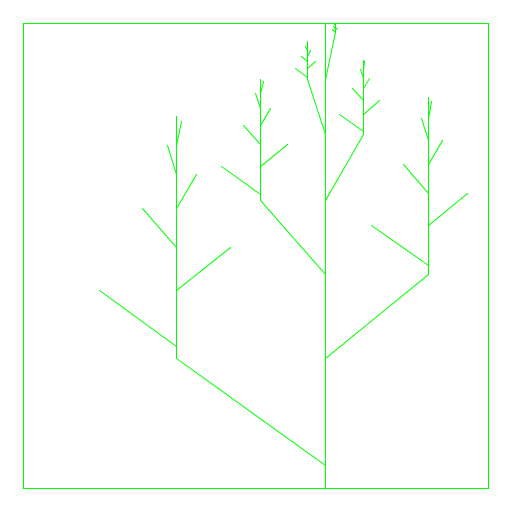 |
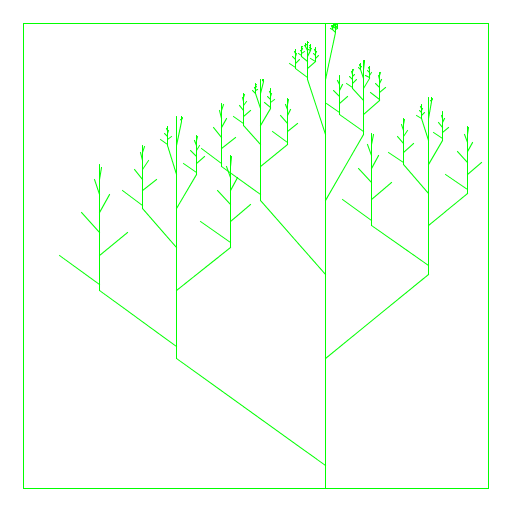 |
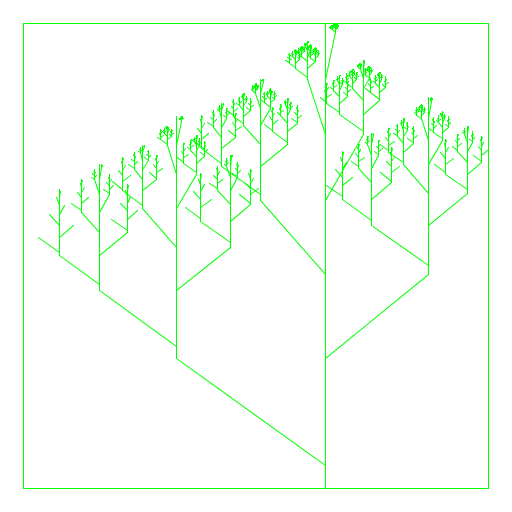 |
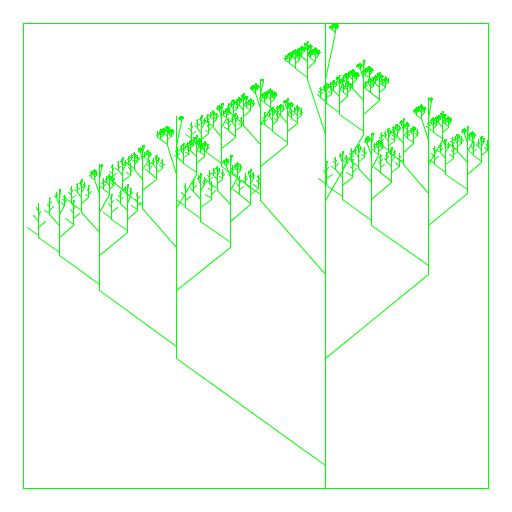 |
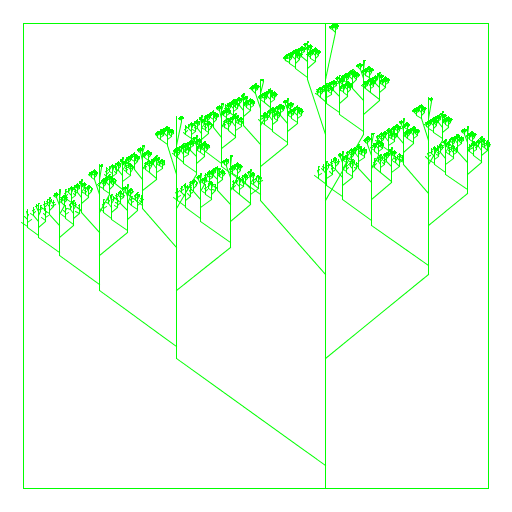 |
Irene Manousiouthakis
My Art.java utilizes arcs and filled circles and recursively draws a
design that has elements somewhat similar to a Yin Yang symbol.
|
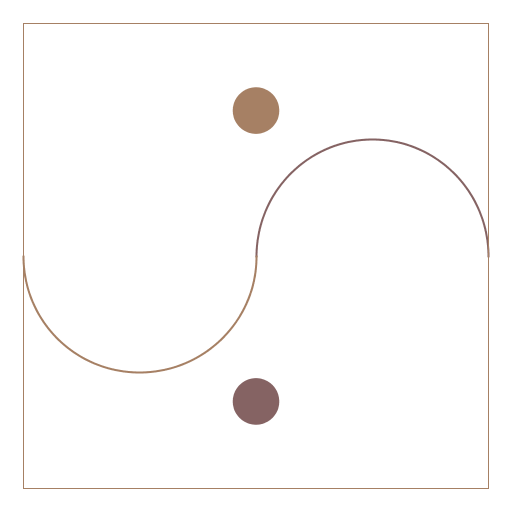 |
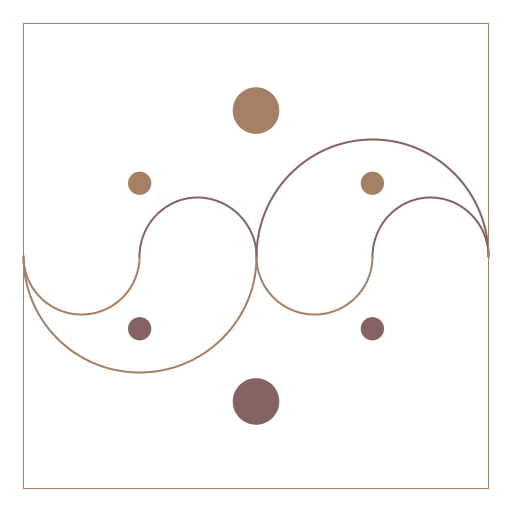 |
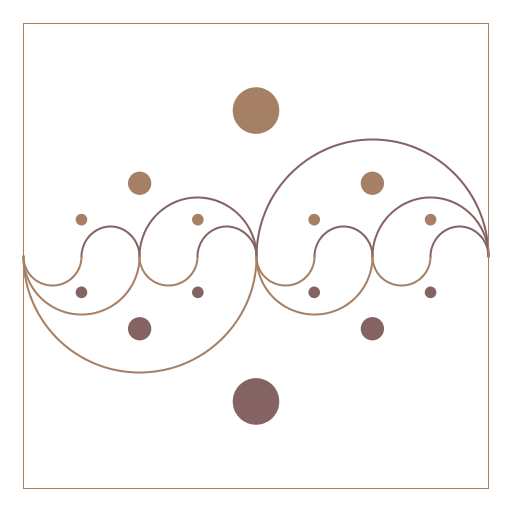 |
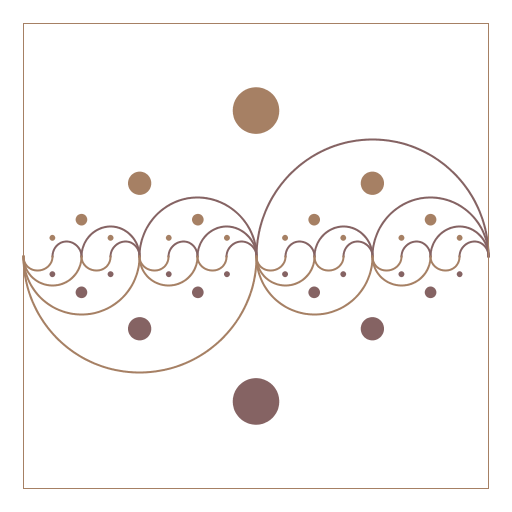 |
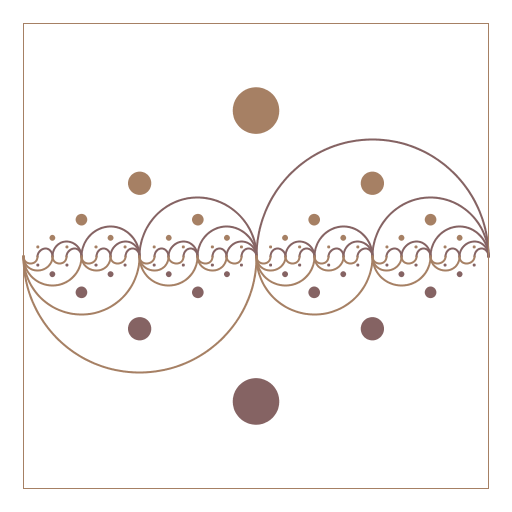 |
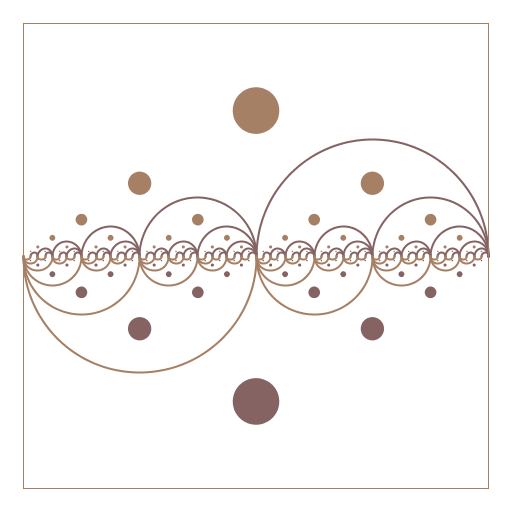 |
Mark Gallagher
My artistic creation is a model of tunnels/burrows in the ground. It
is similar to the idea of tree branching, but in a similar natural
application. The problem creates branching lines at several different
ratios to the original line. At very high levels of N, patterns also
appear in the white space between lines. The book and booksite were
used extensively.
|
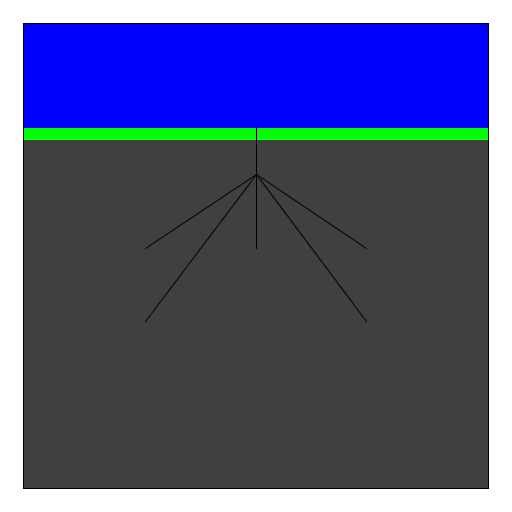 |
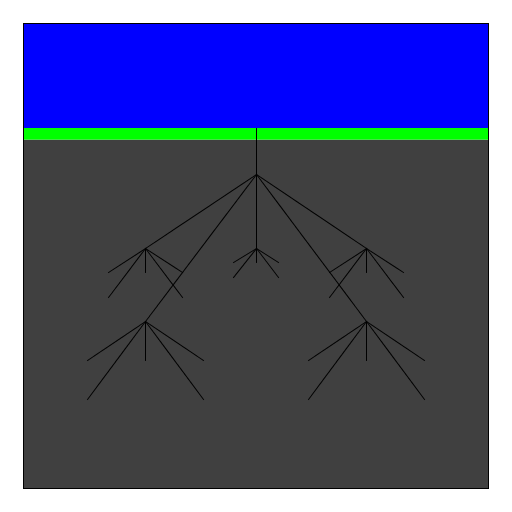 |
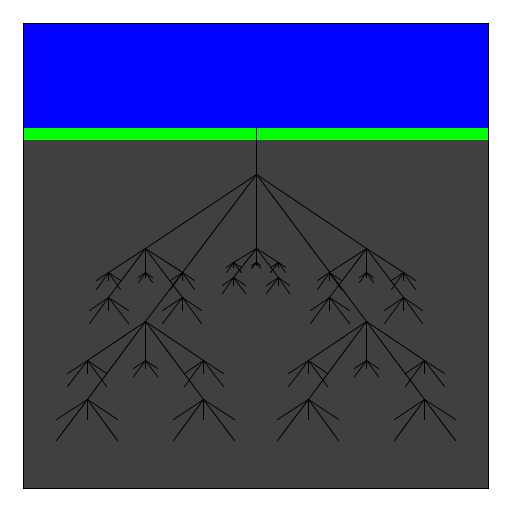 |
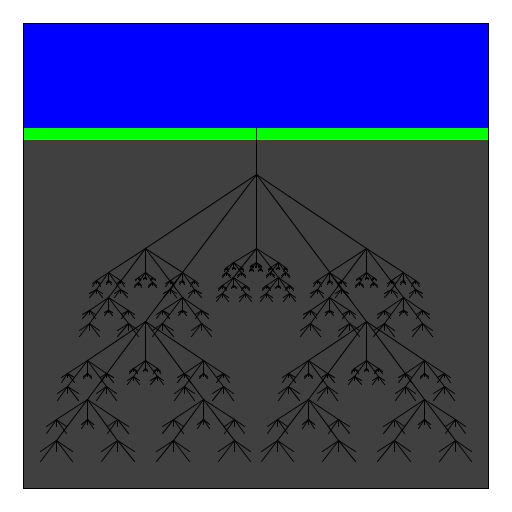 |
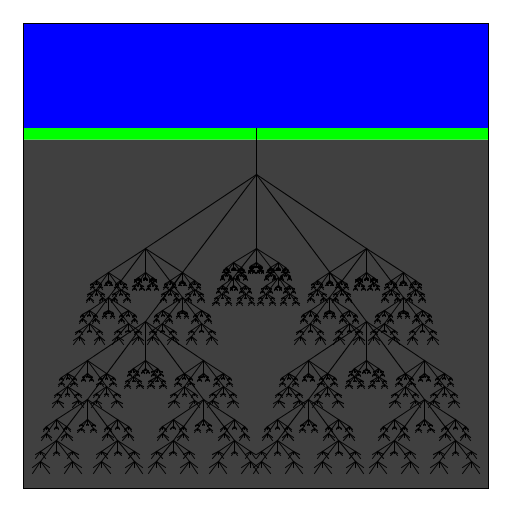 |
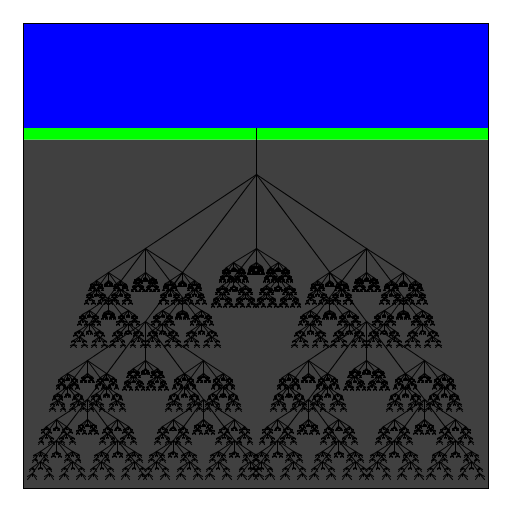 |
Paul Blazk
I drew a tree (with an absolutely gorgeous background). The tree is
recursive in that every branch point has 2 branches coming from it,
but the lengths and orientations of the branches are random. The
lengths are distributed such that, on average, the branches become
shorter as they move further away from the trunk. The orientations are
distributed so that, on average, they are more vertical closer to the
trunk. A leave is drawn as a circle in the center of each branch or
limb.
|
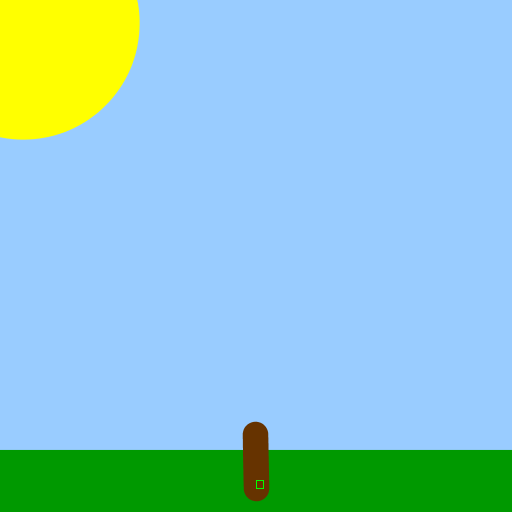 |
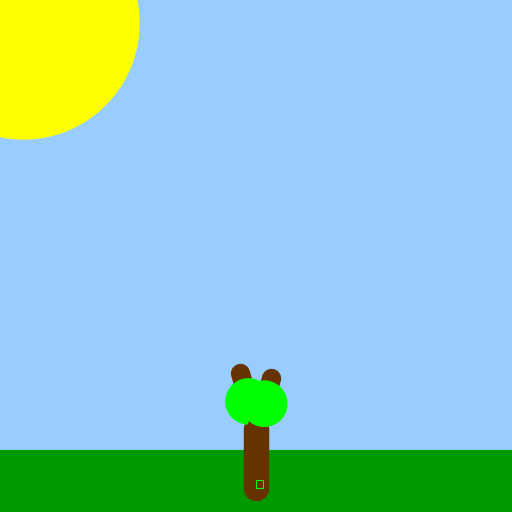 |
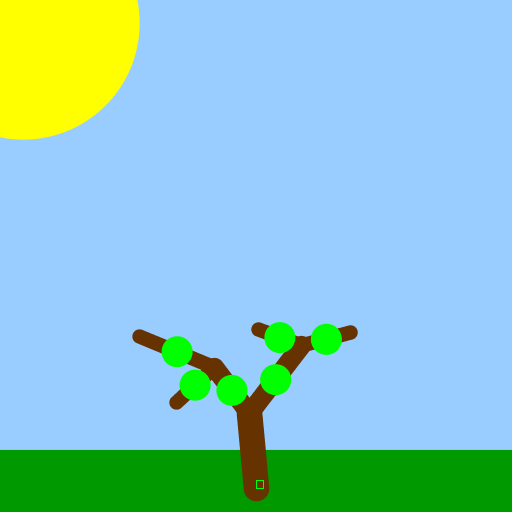 |
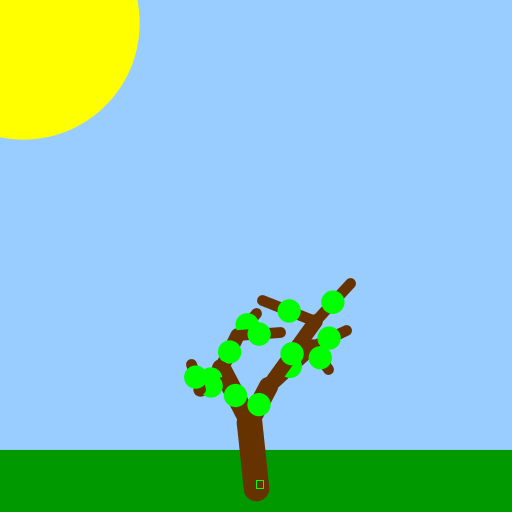 |
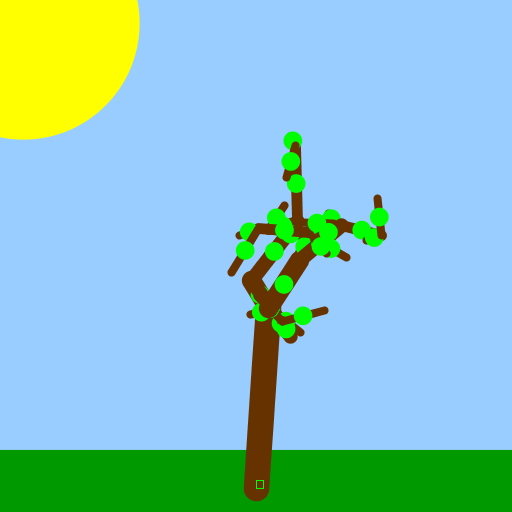 |
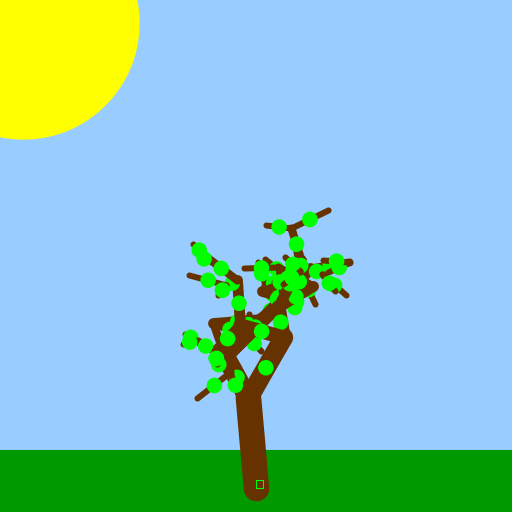 |
Taylor Luiso
My artistic creation is an image with a randomly-generated, partly
cloudy blue sky in the background and a tree with leaves in the
foreground. I wrote the program by producing two additional methods
besides main: one that produces the sky and one that produces the
tree. To create the sky, I referenced the book and the booksite to
see how they produced the program PlasmaCloud.java, and then in my
version I altered the saturation while the keeping the hue and the
brightness constant so that the spectrum would remain between blue and
white. To produce the tree, I produced a similar tree function to the
one in the book, but added more branches, a degree of randomness in
the angles, and colors to make it look more realisic, as well as
branching out of the side of the branches. For the final recursion, I
specified for a wider pen size so that the ends would look like
leaves, and also for all the different shades of the colors I randomly
generated values for the brightness within a certain range.
|
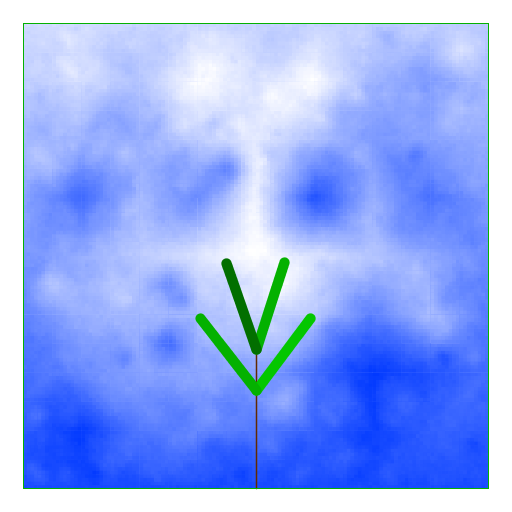 |
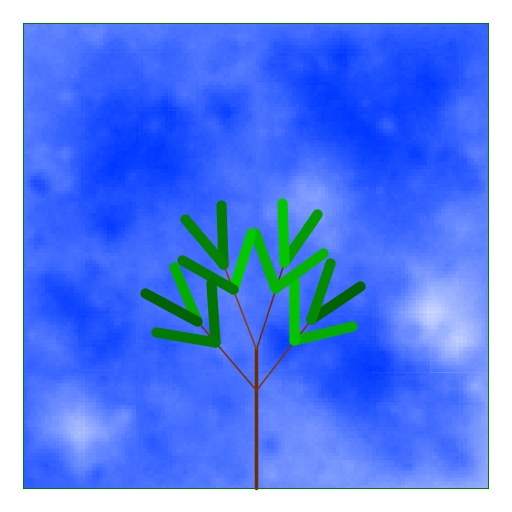 |
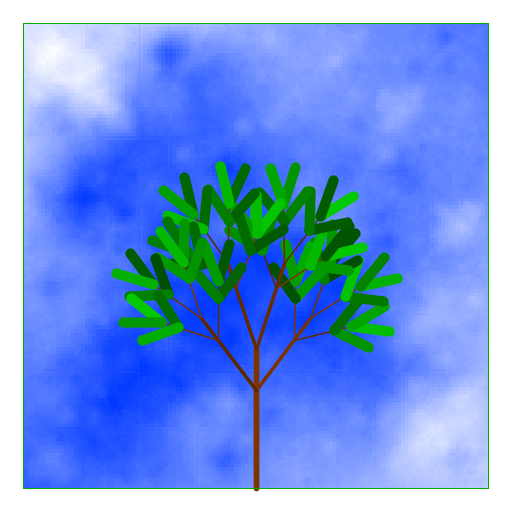 |
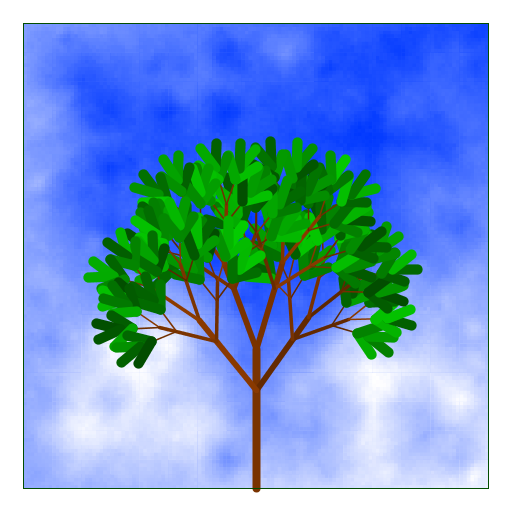 |
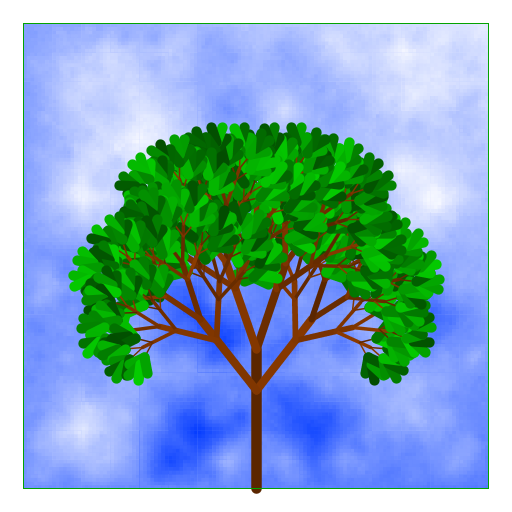 |
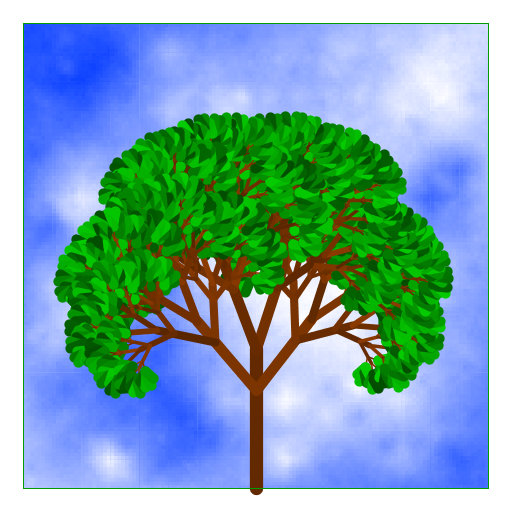 |
Jack Yang
My creation was of an alien. I started out with a smiley face made of
a trapezoid and three circles, and then I calculated the angles for
the antennae on paper before writing the code for those. I made it so
that the new heads sprouted out from the antennae, and did some
preliminary calculations for this as well. After everything was done,
I altered the aliens() function so that I made another, identical copy
of the alien right next to the original, and set it up so that one
copy was red and one was blue. This was so I could produce a 3d
effect.
|
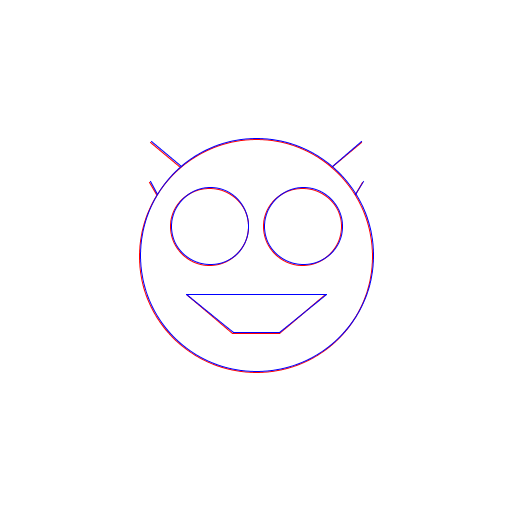 |
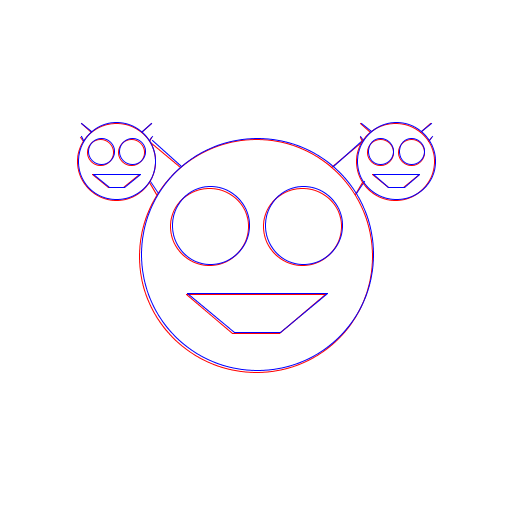 |
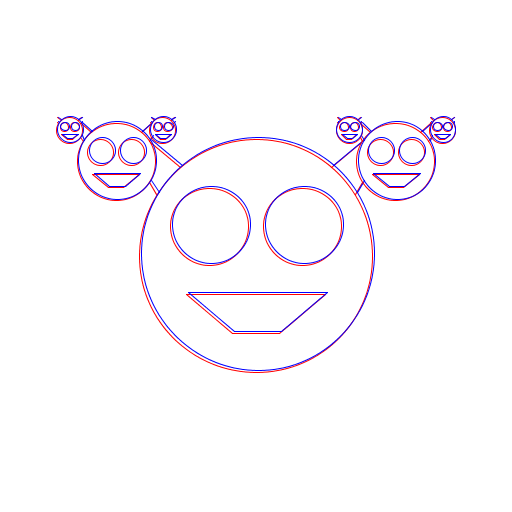 |
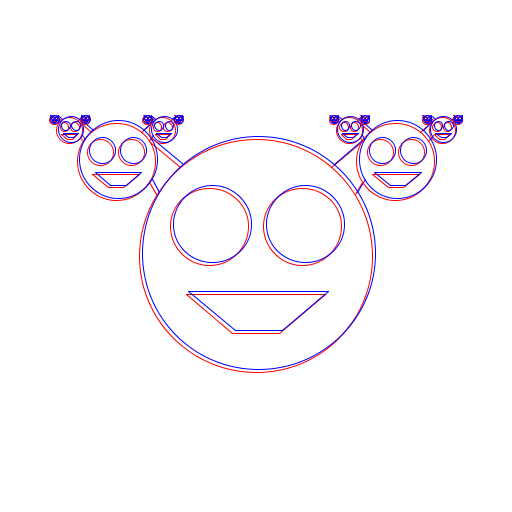 |
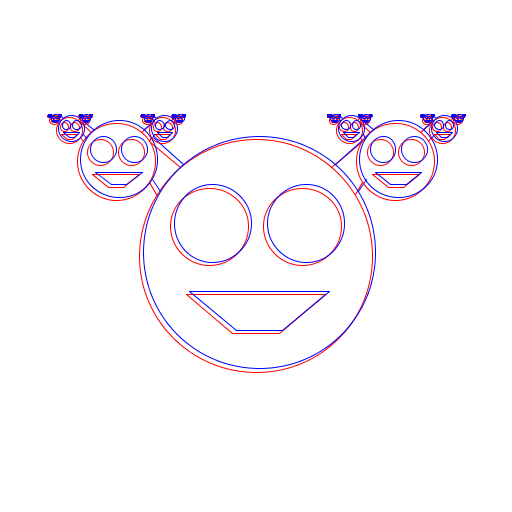 |
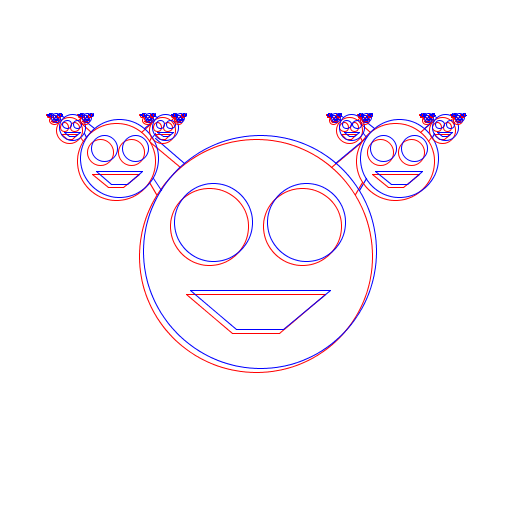 |
|










































































































































































































































